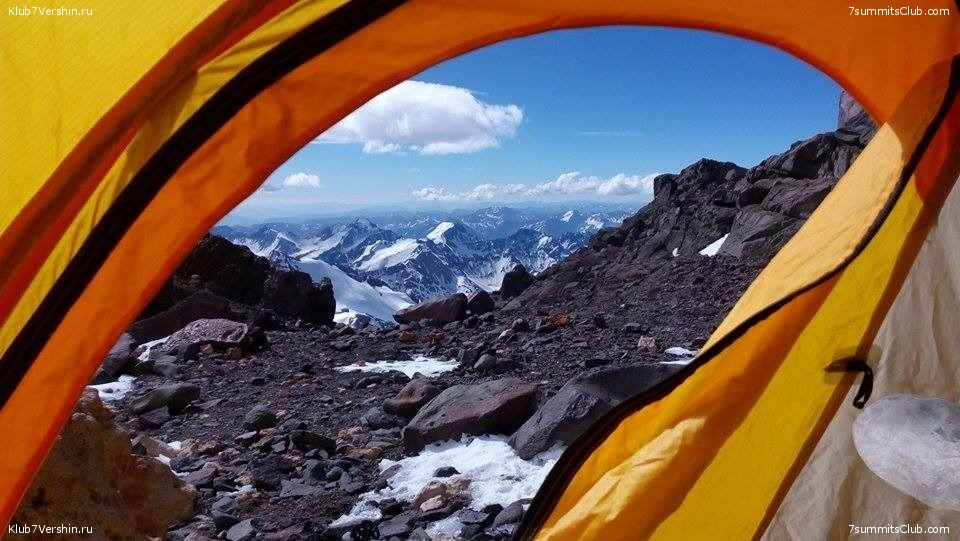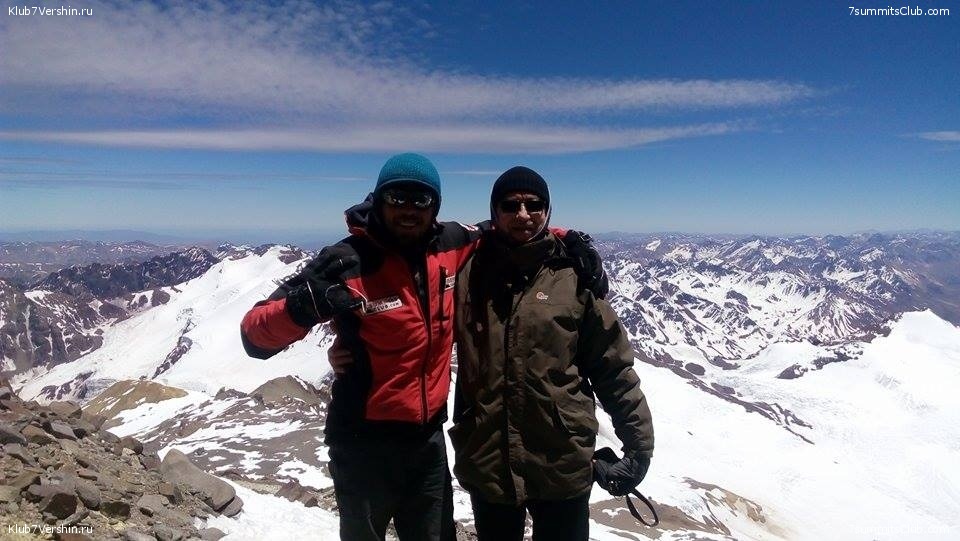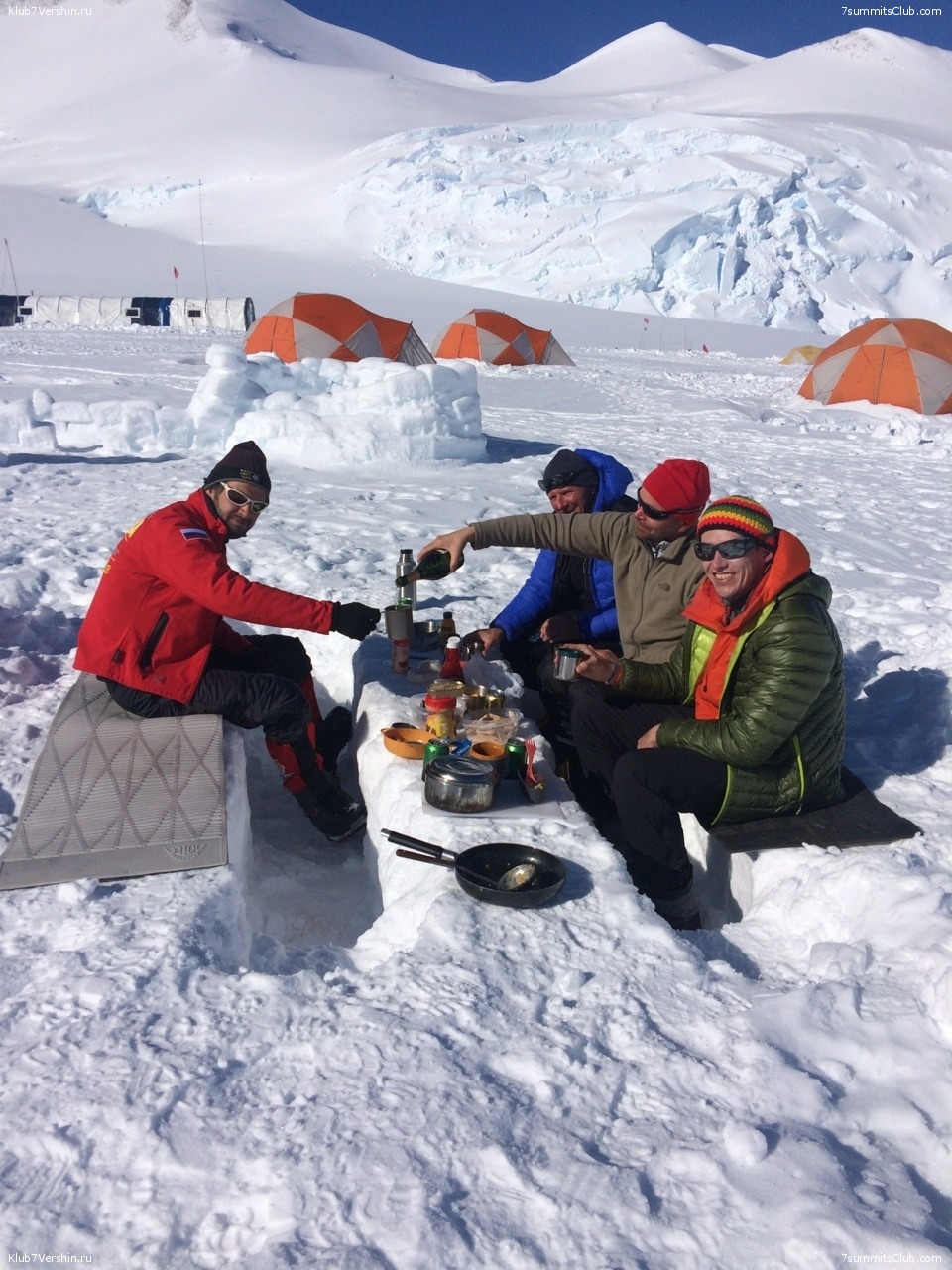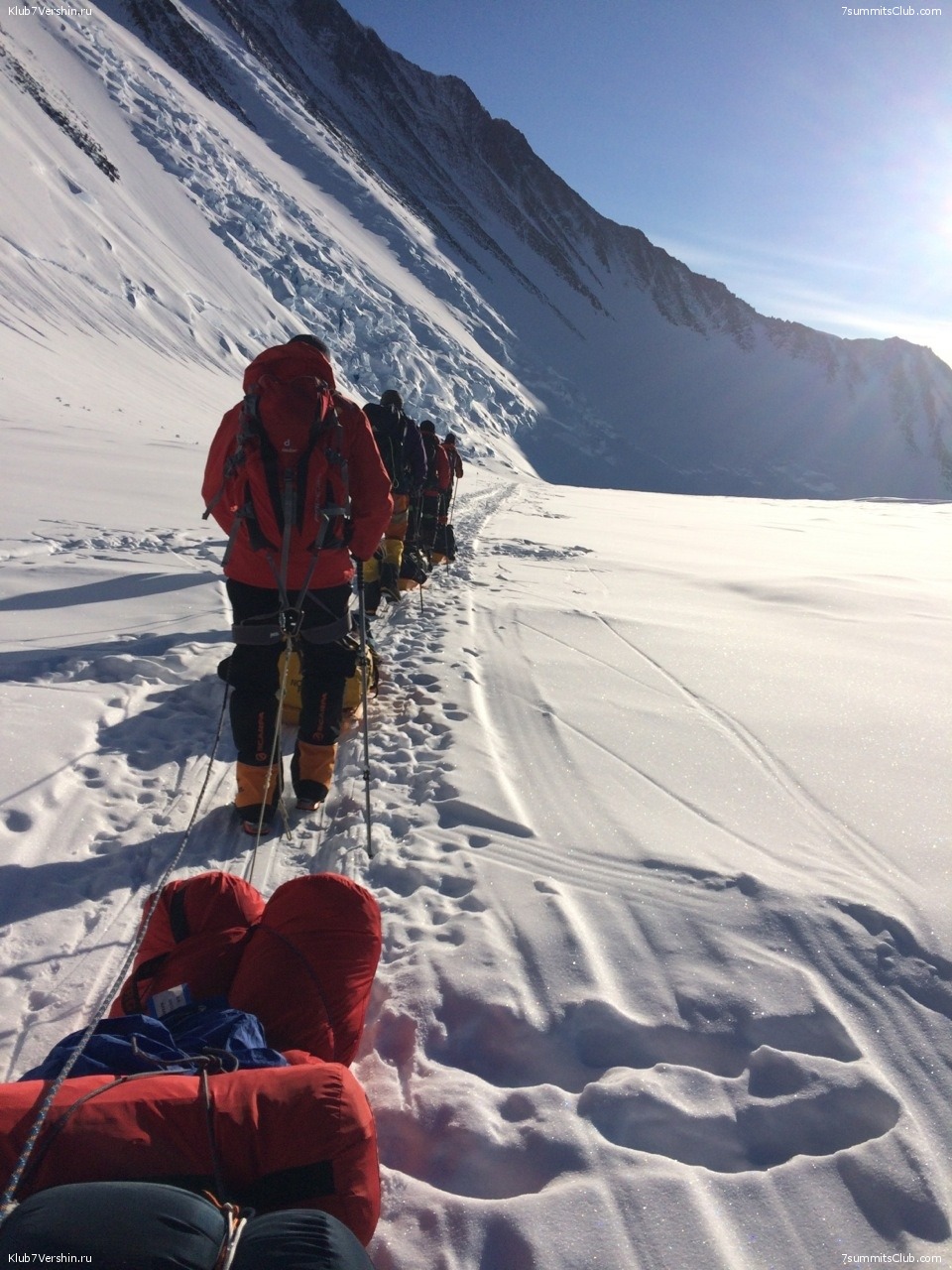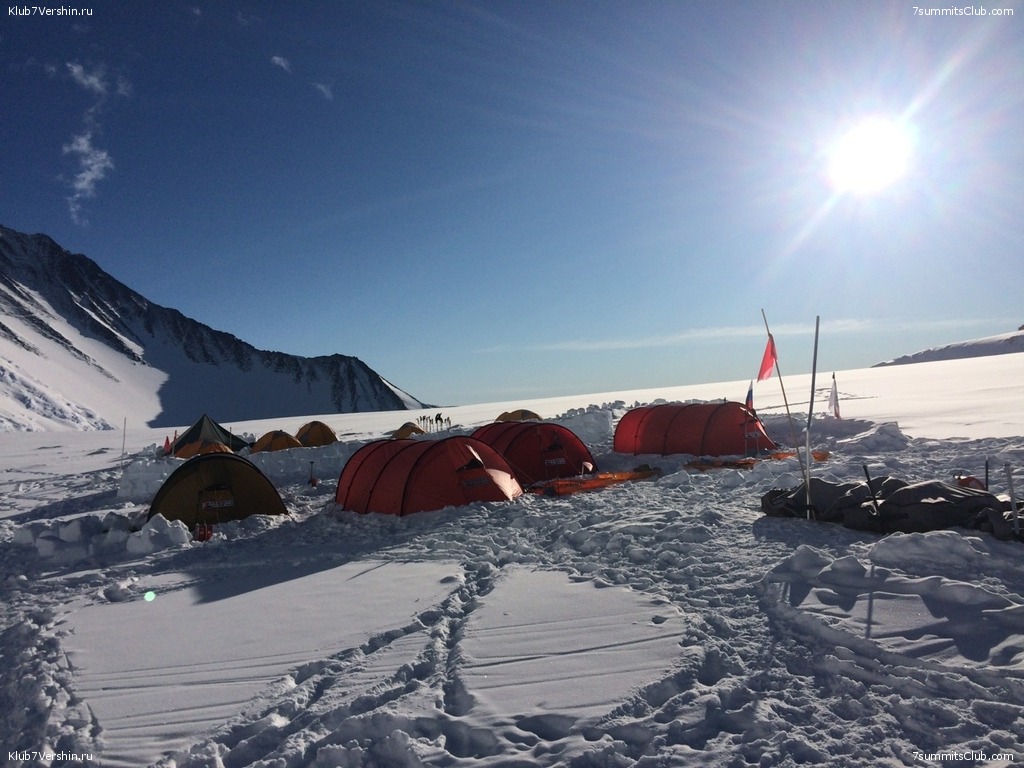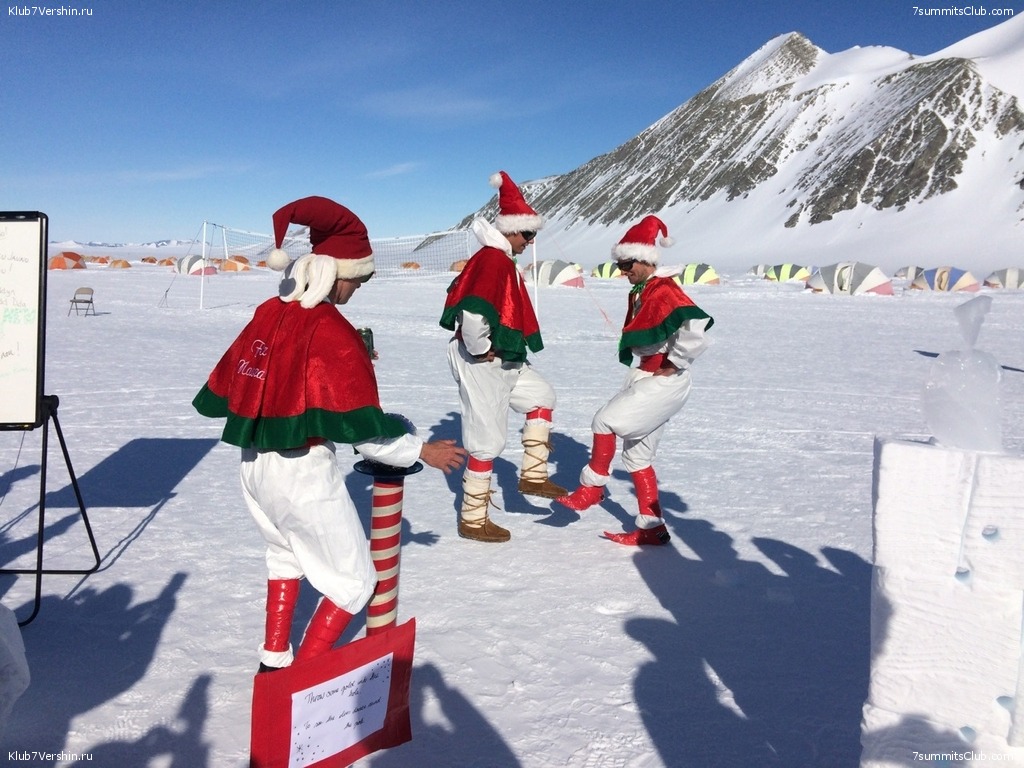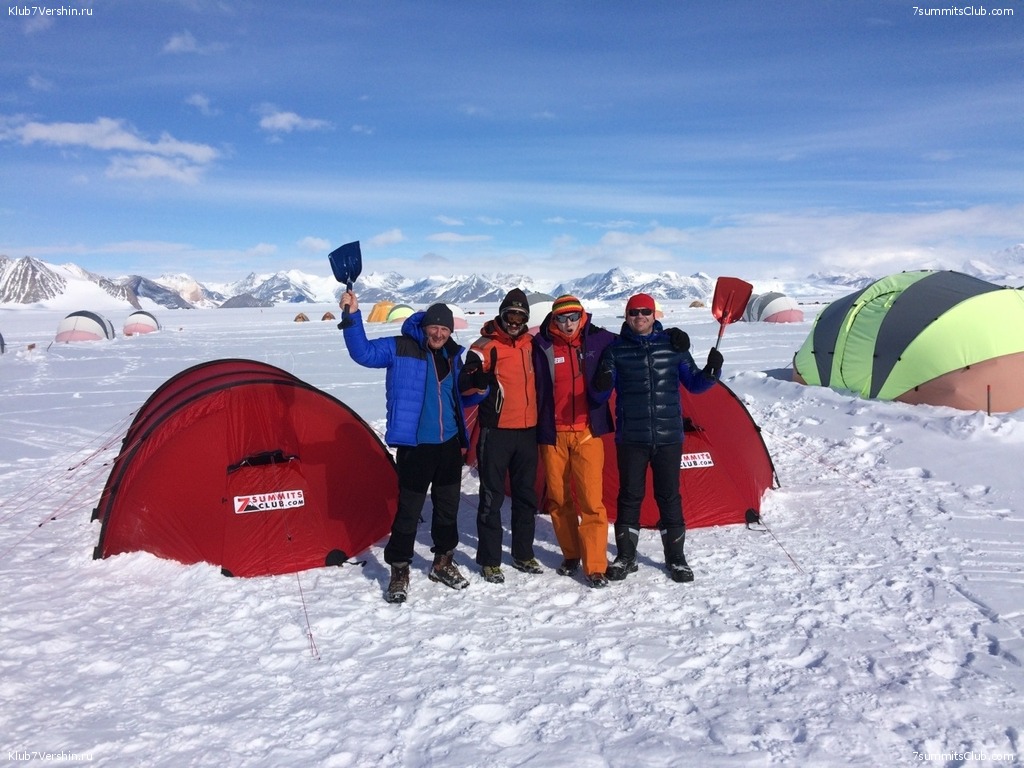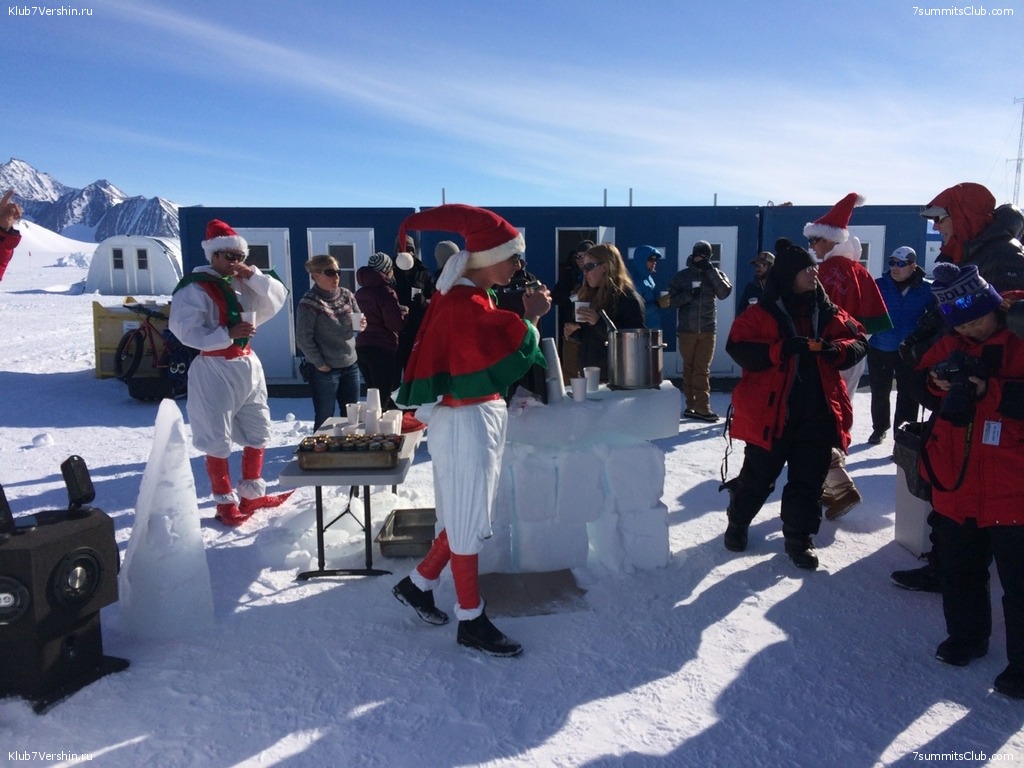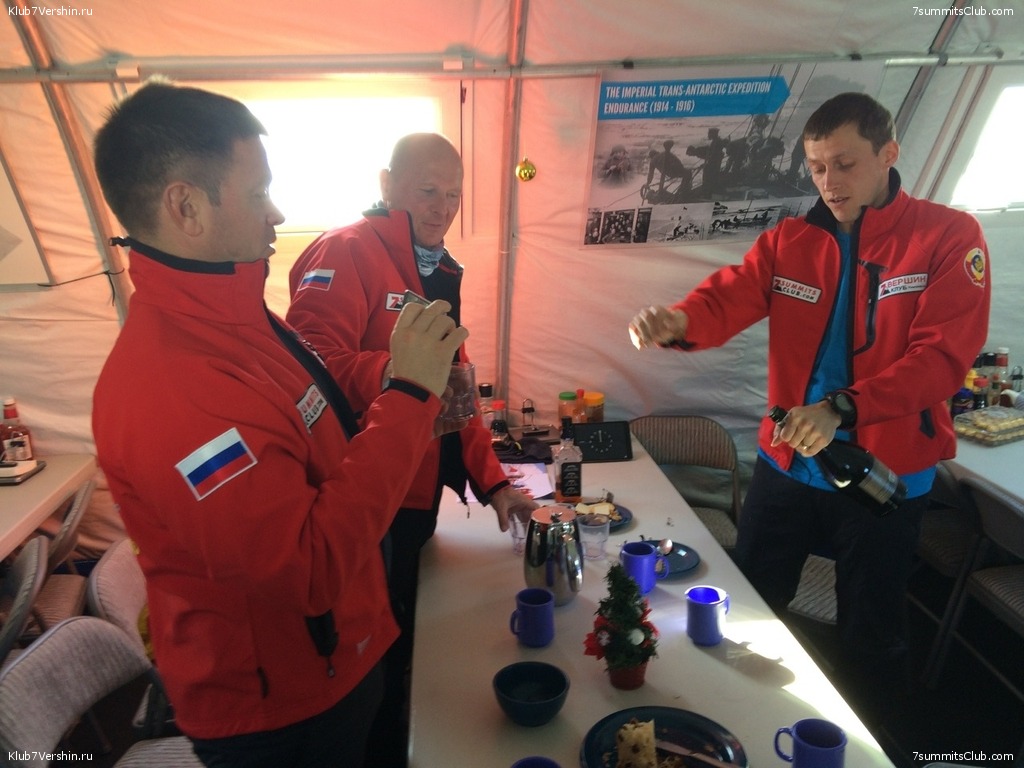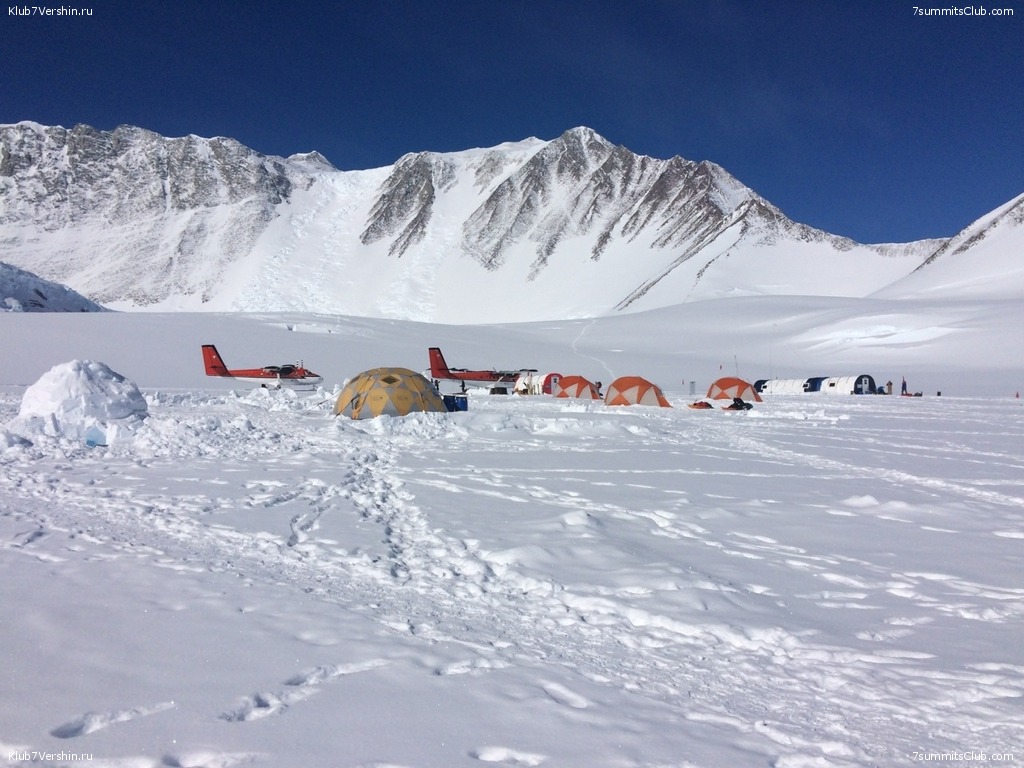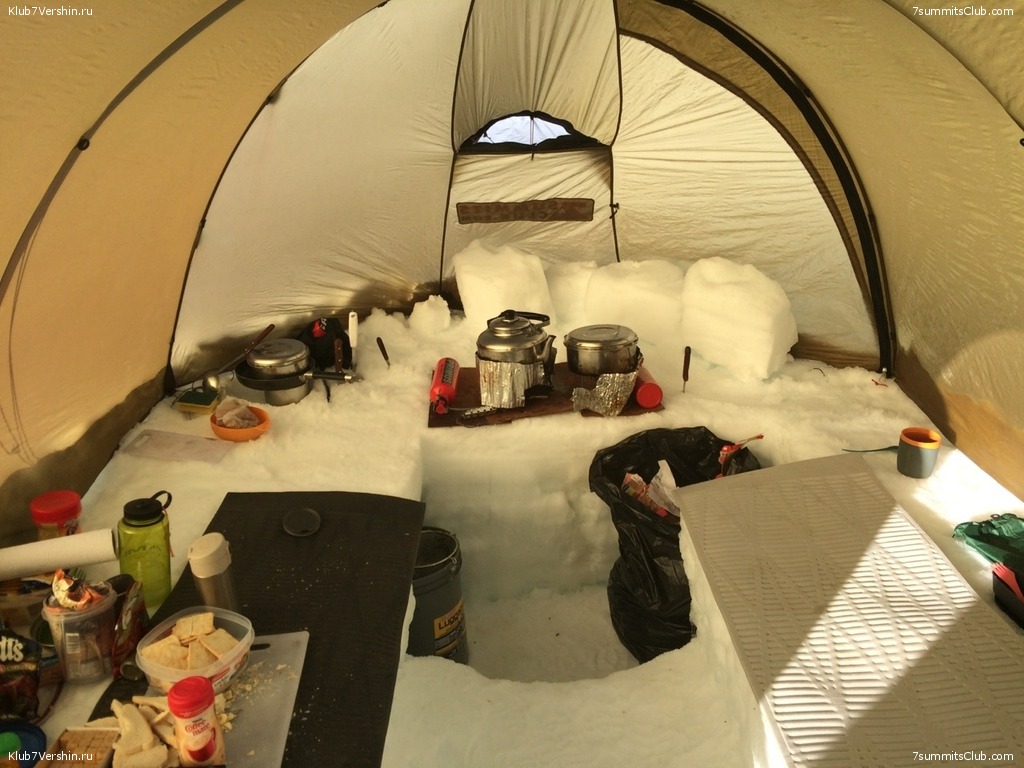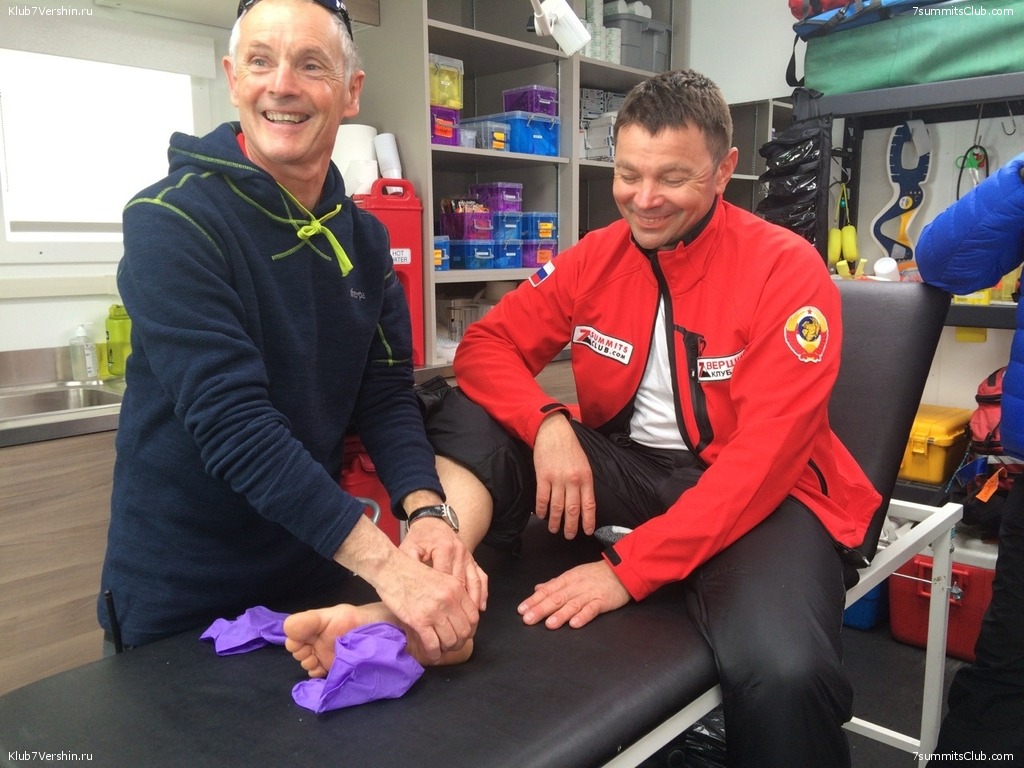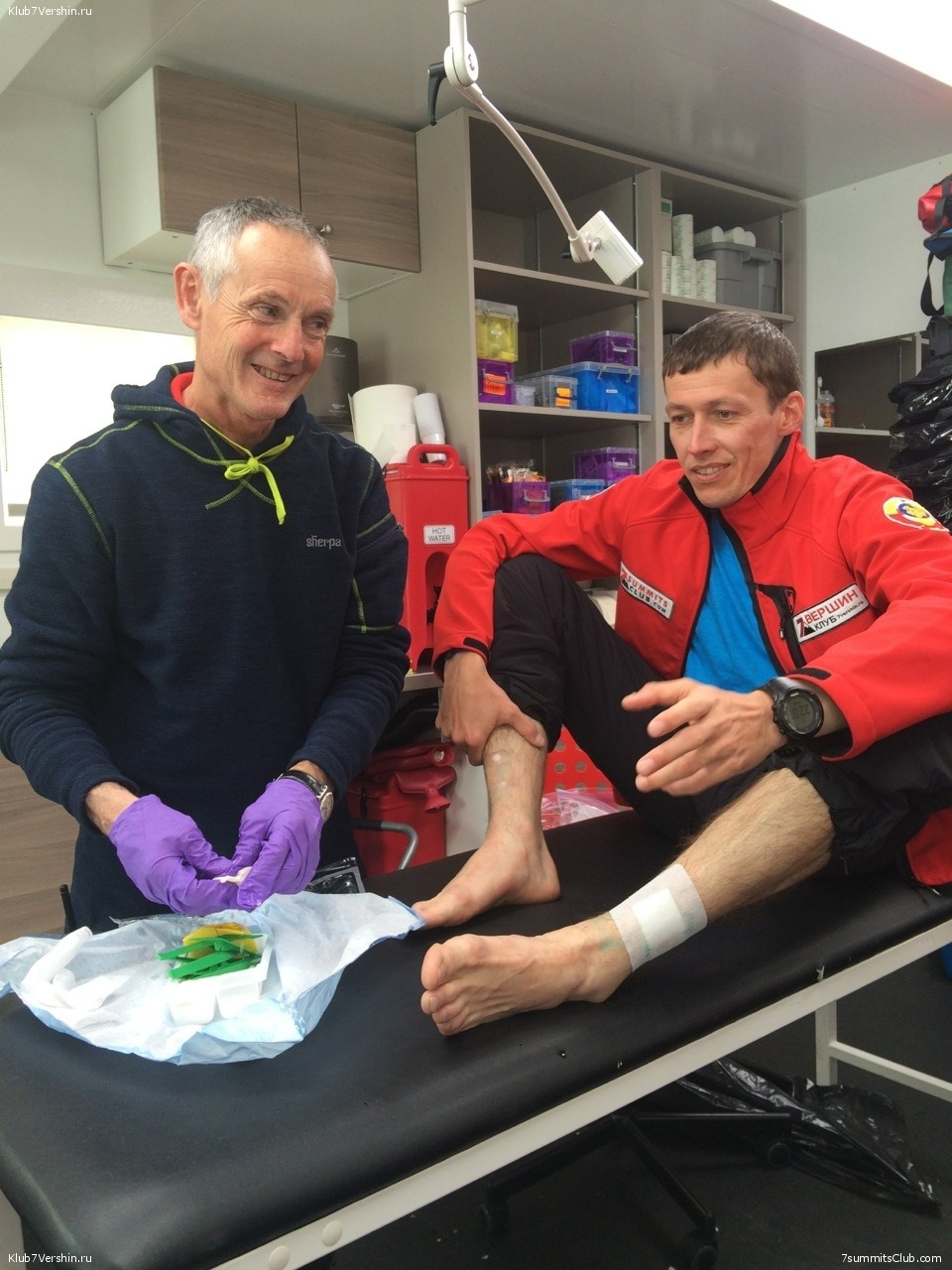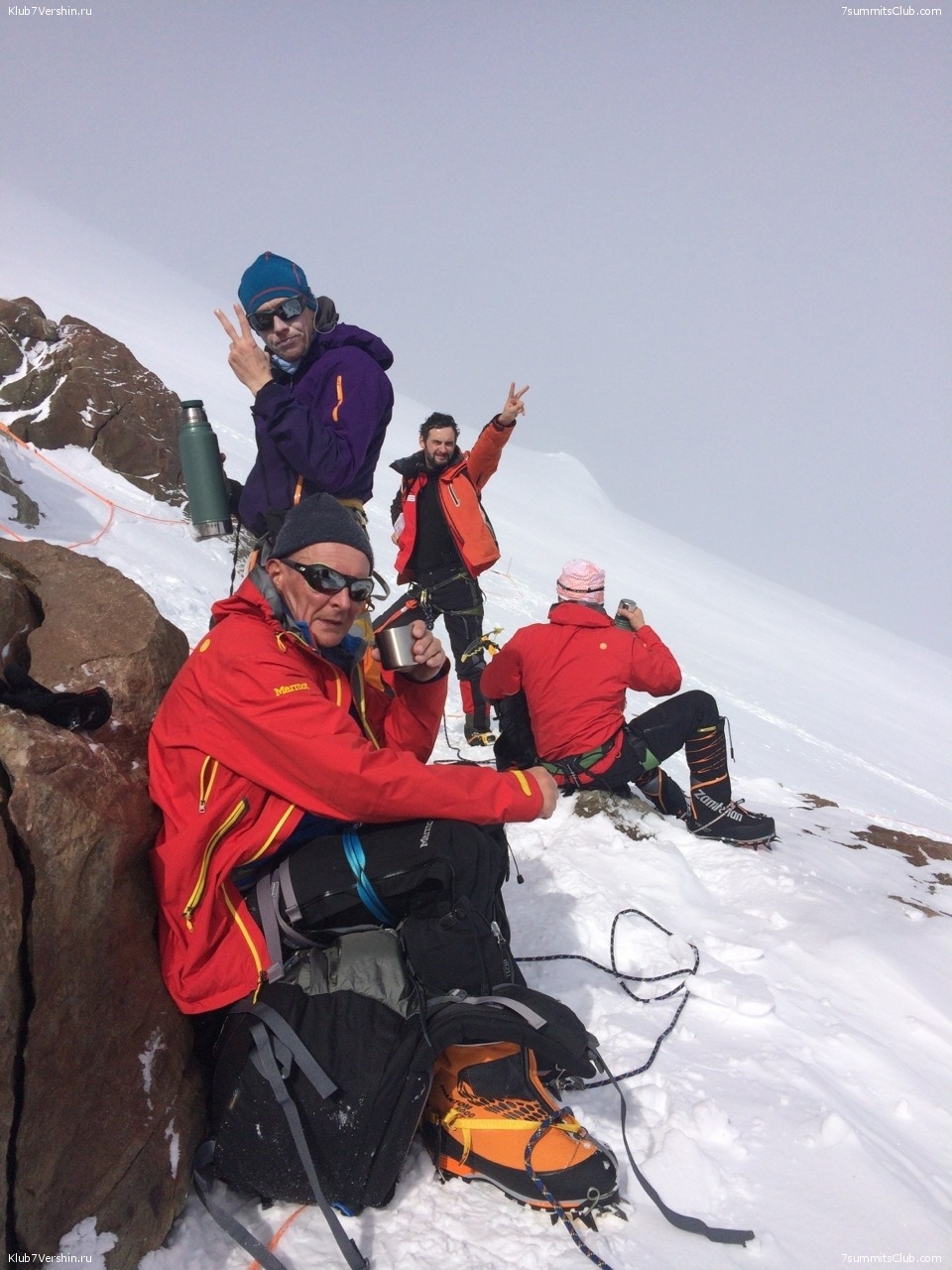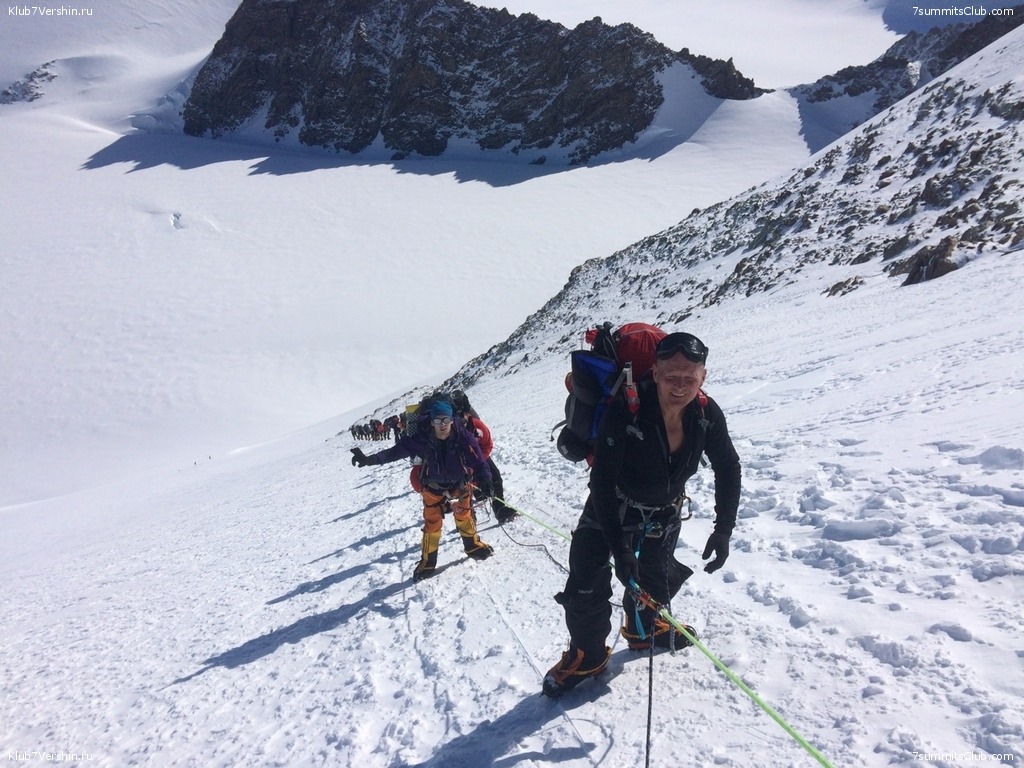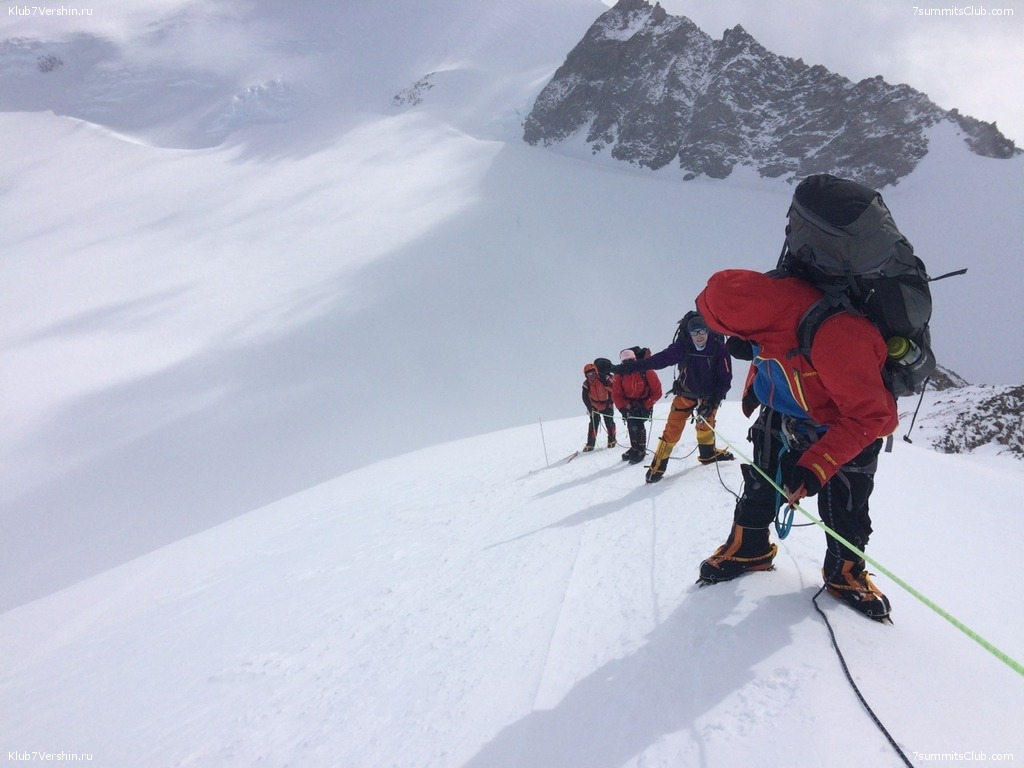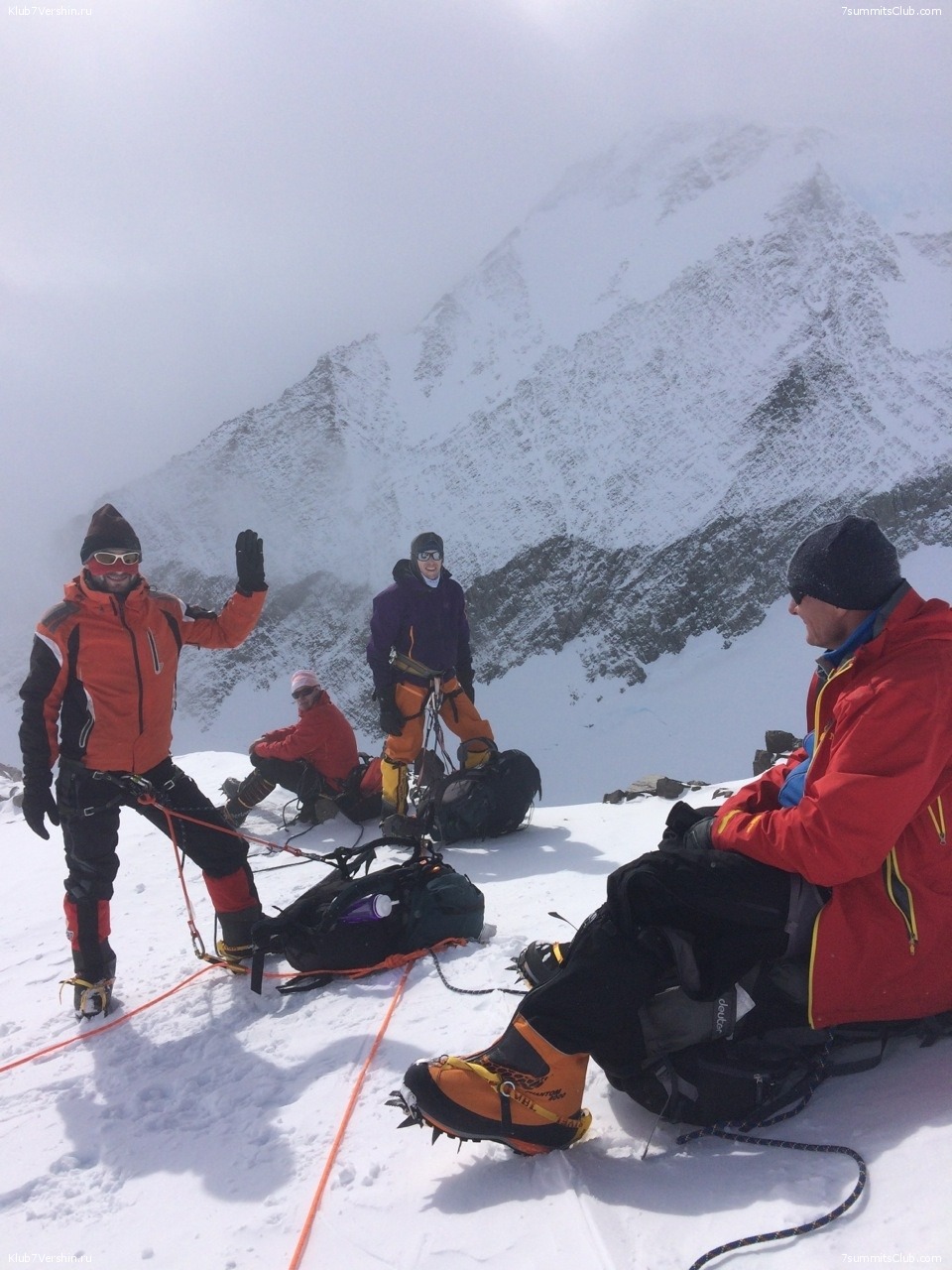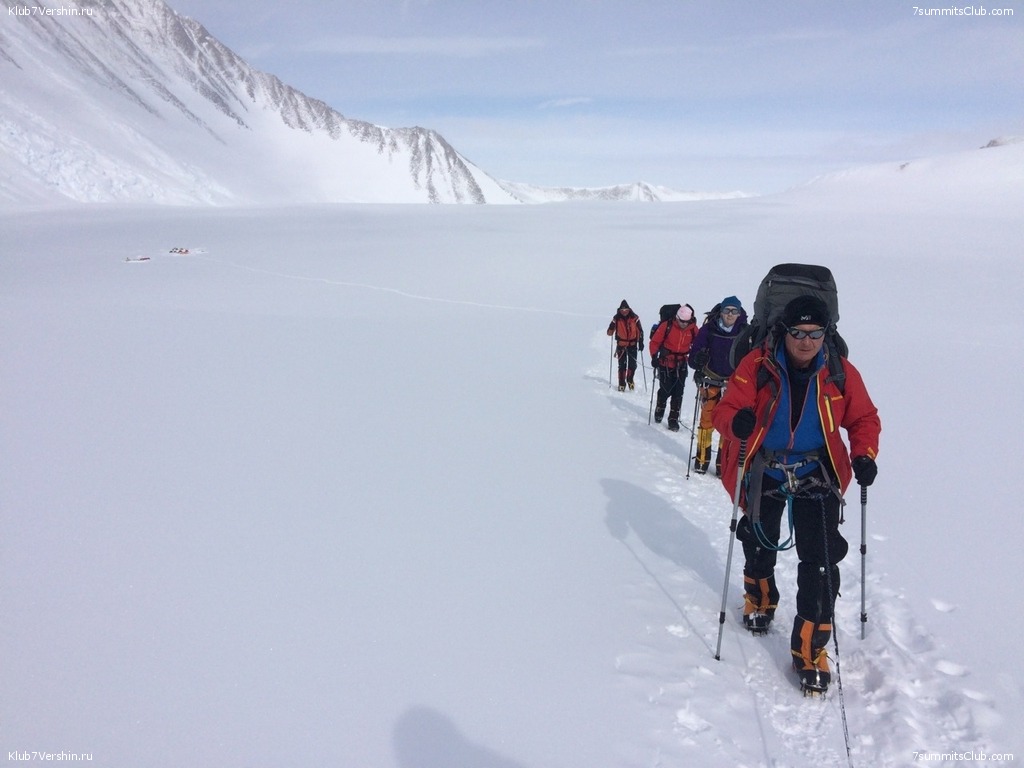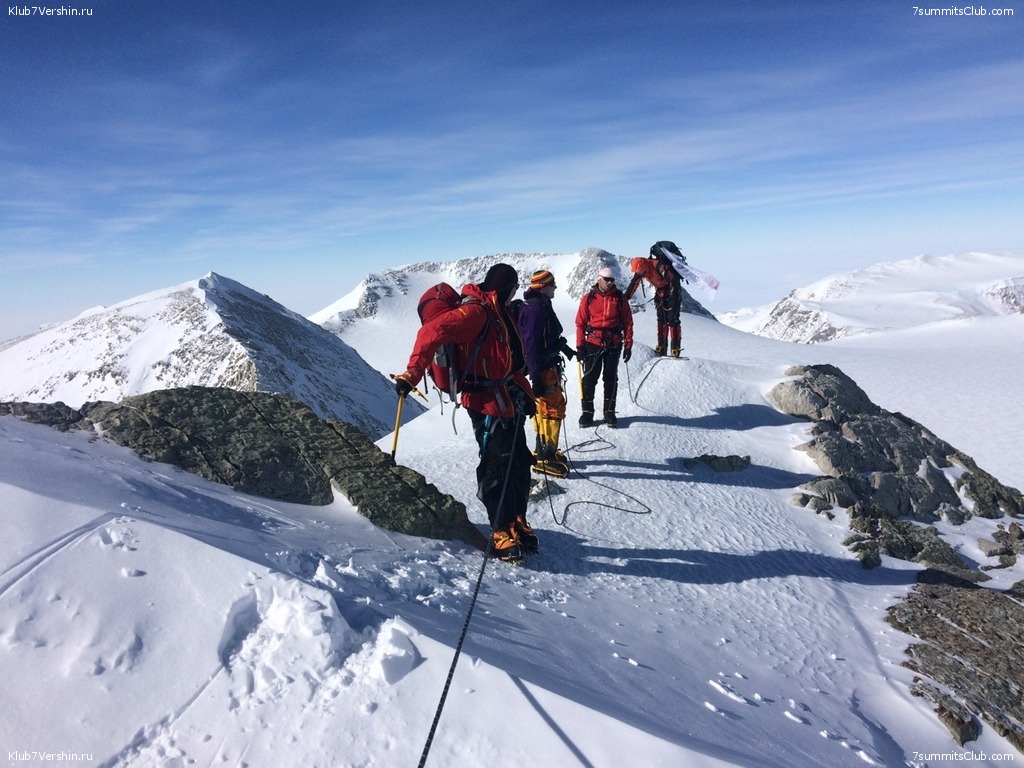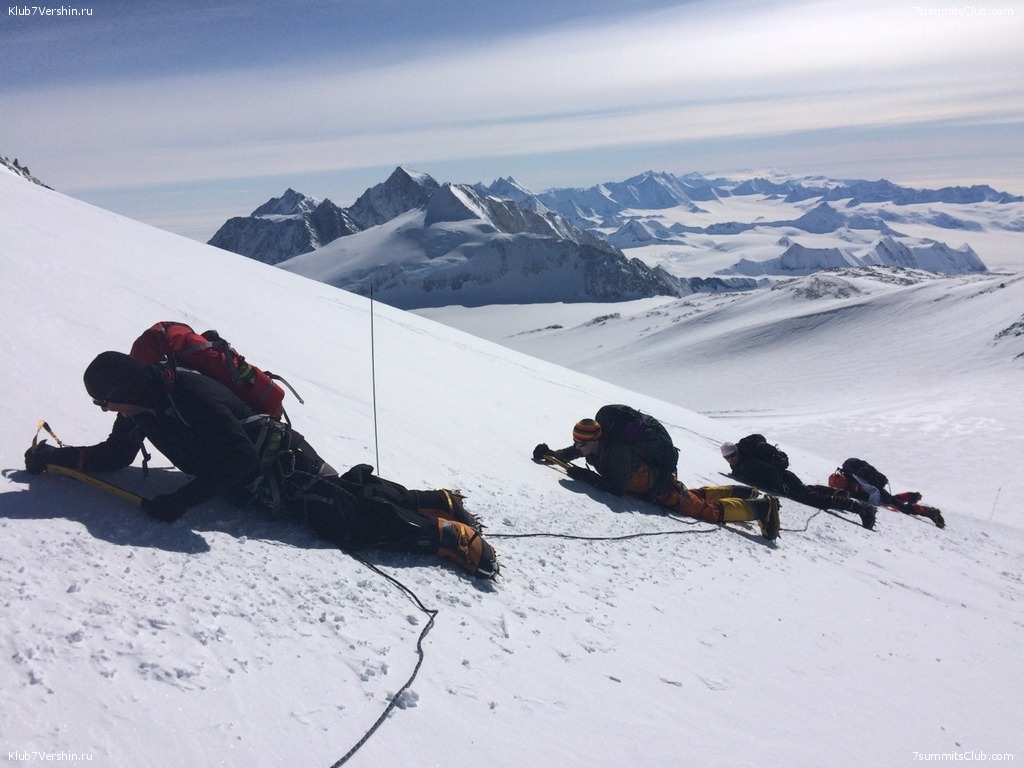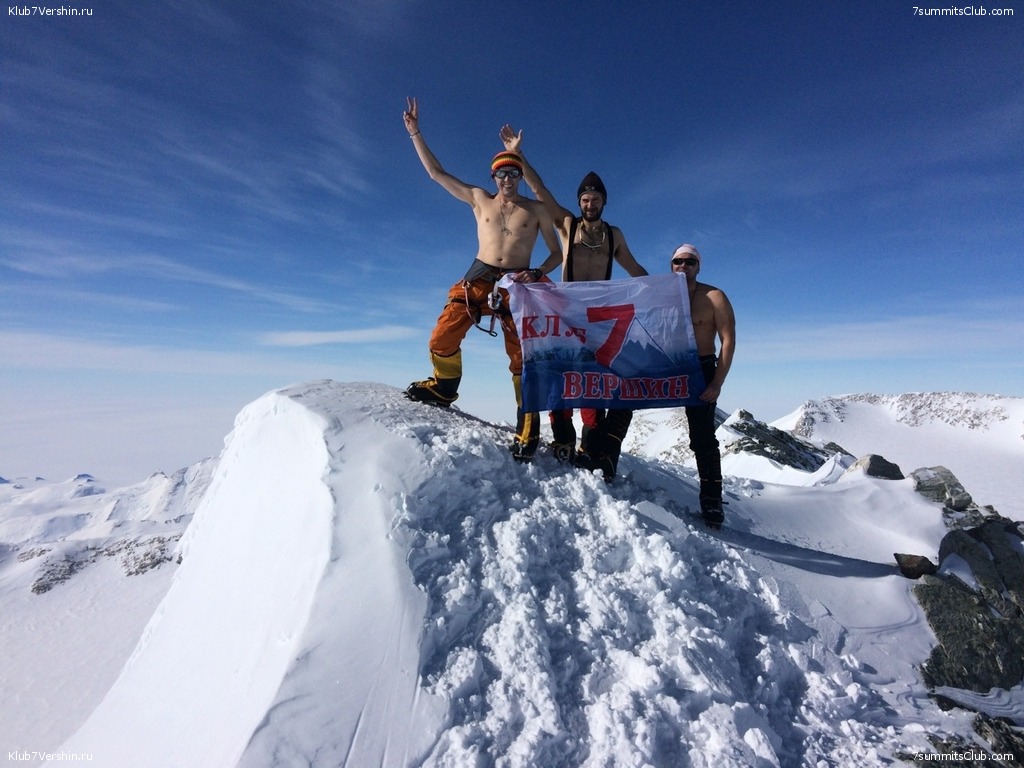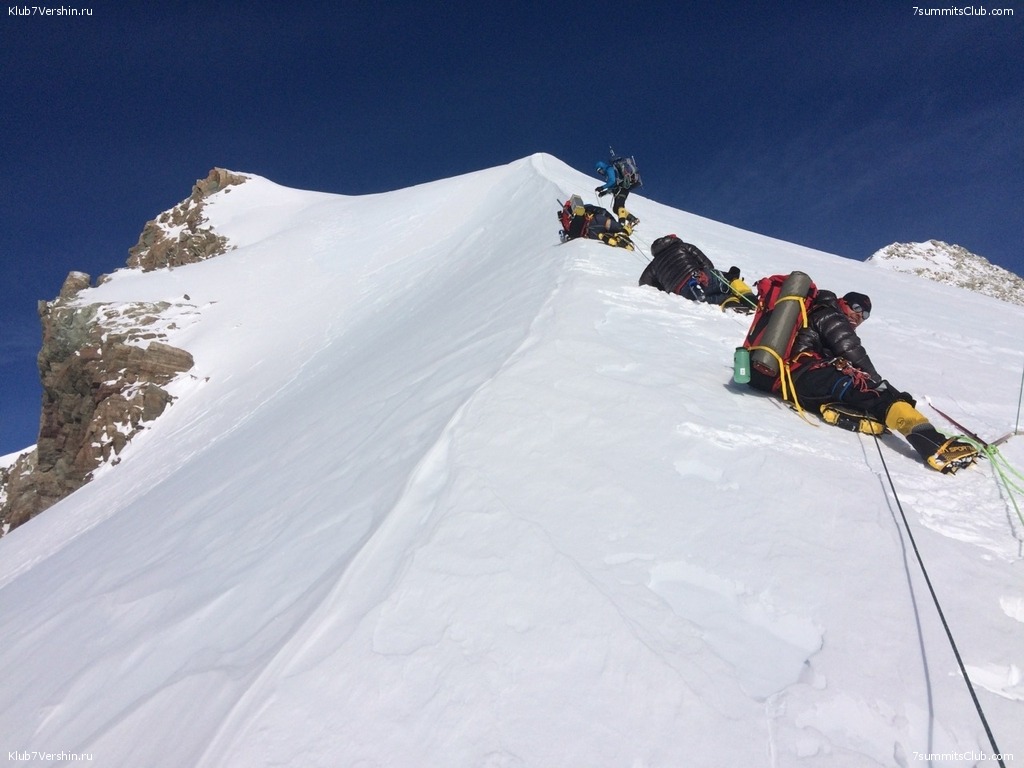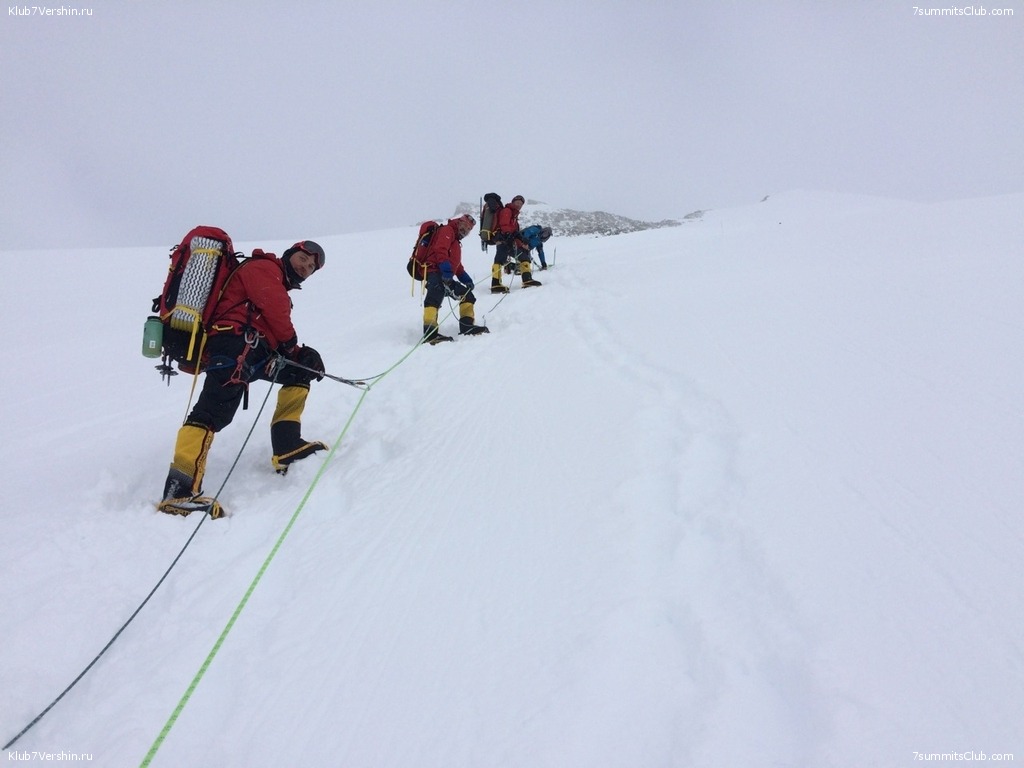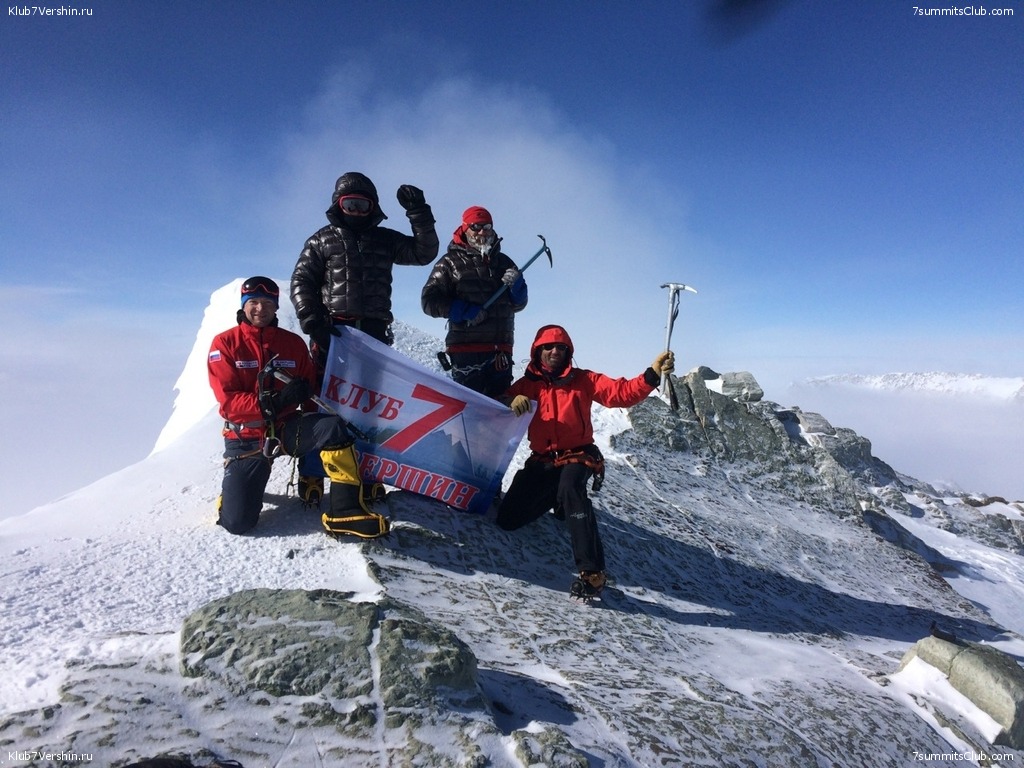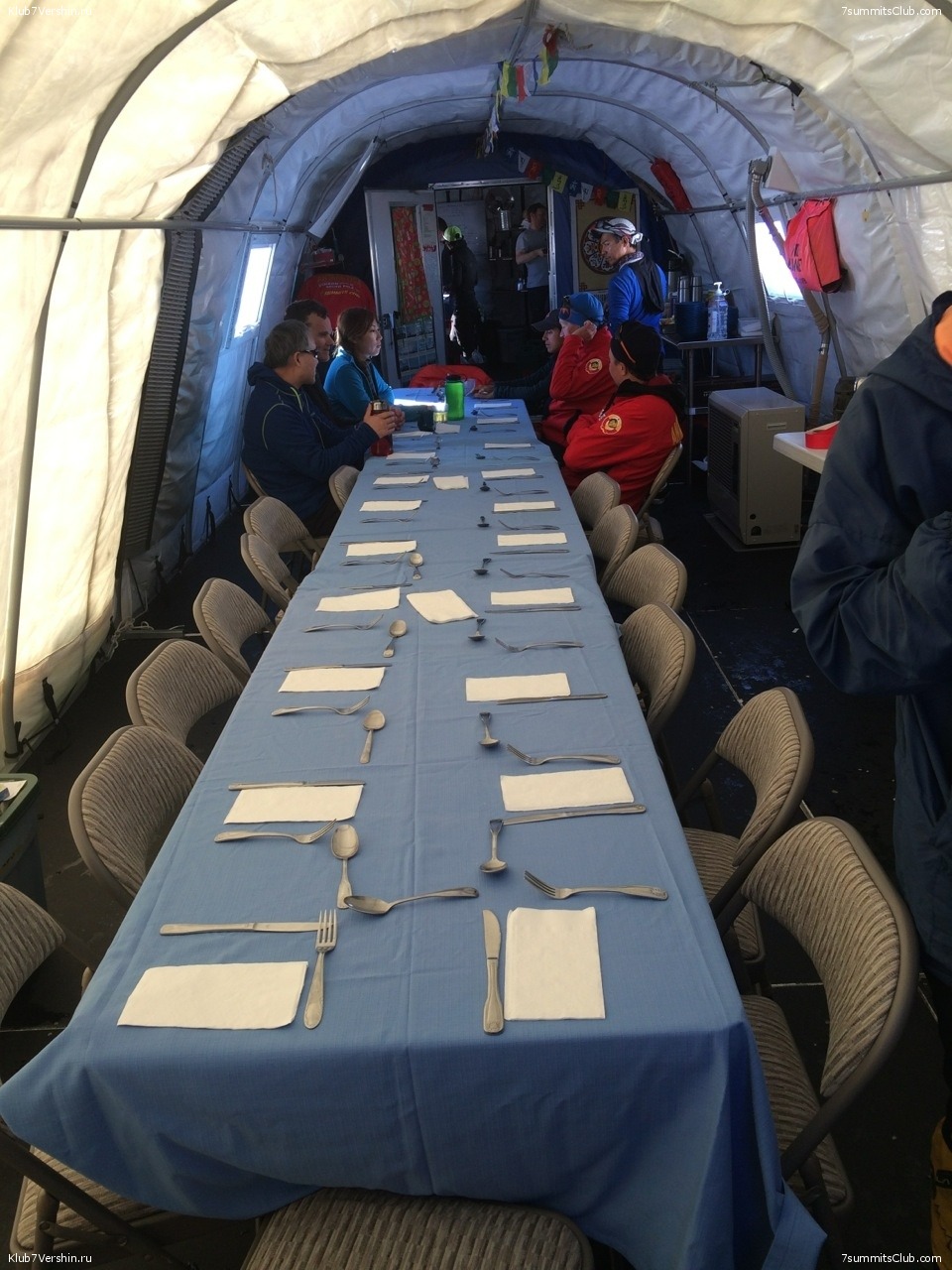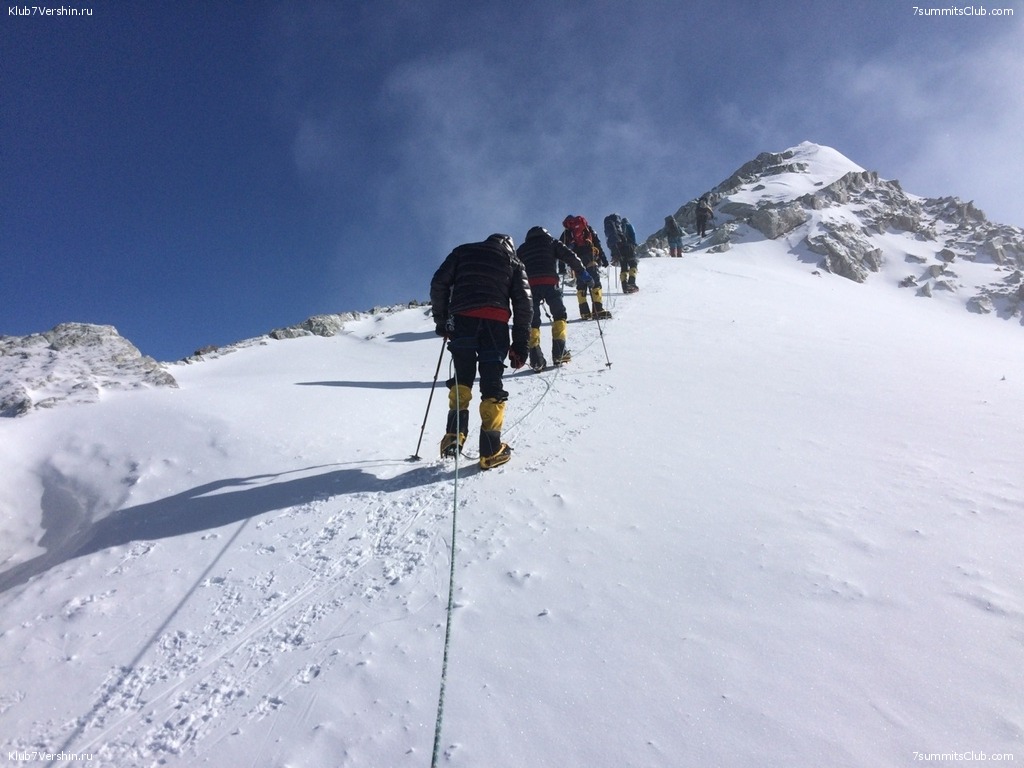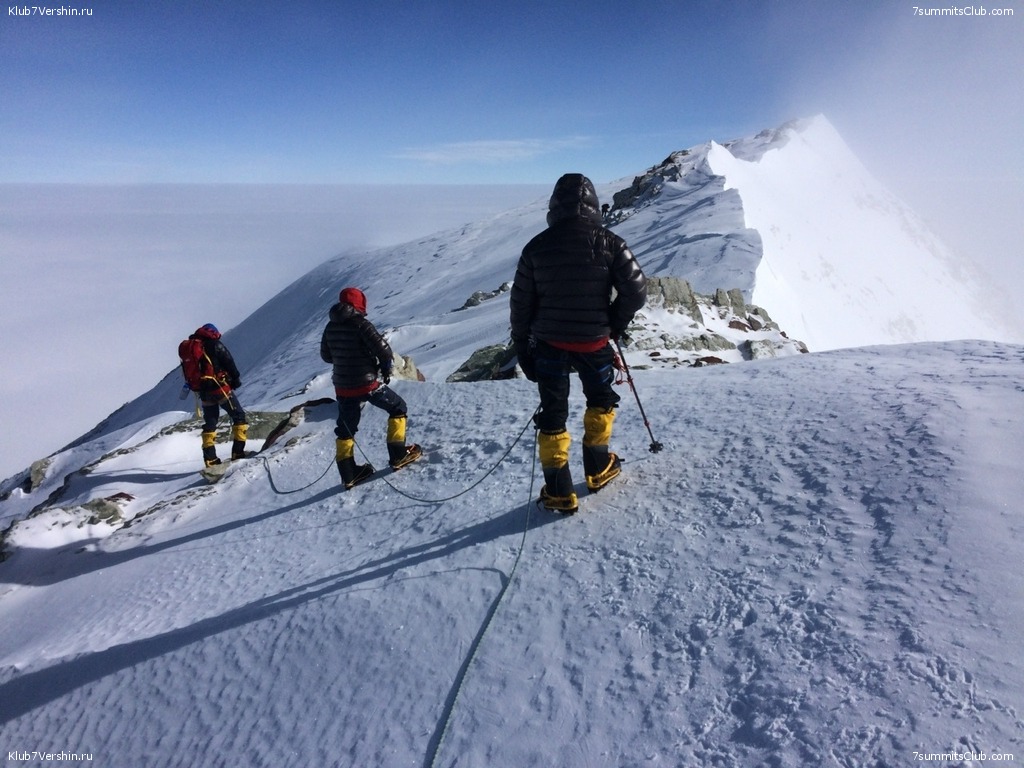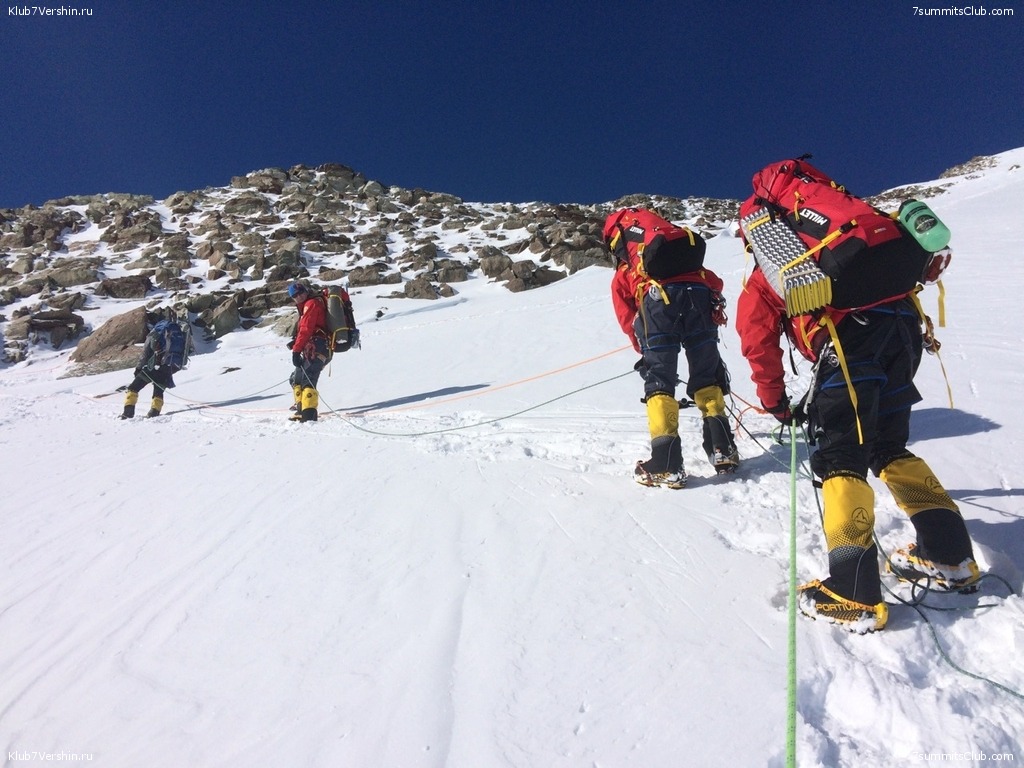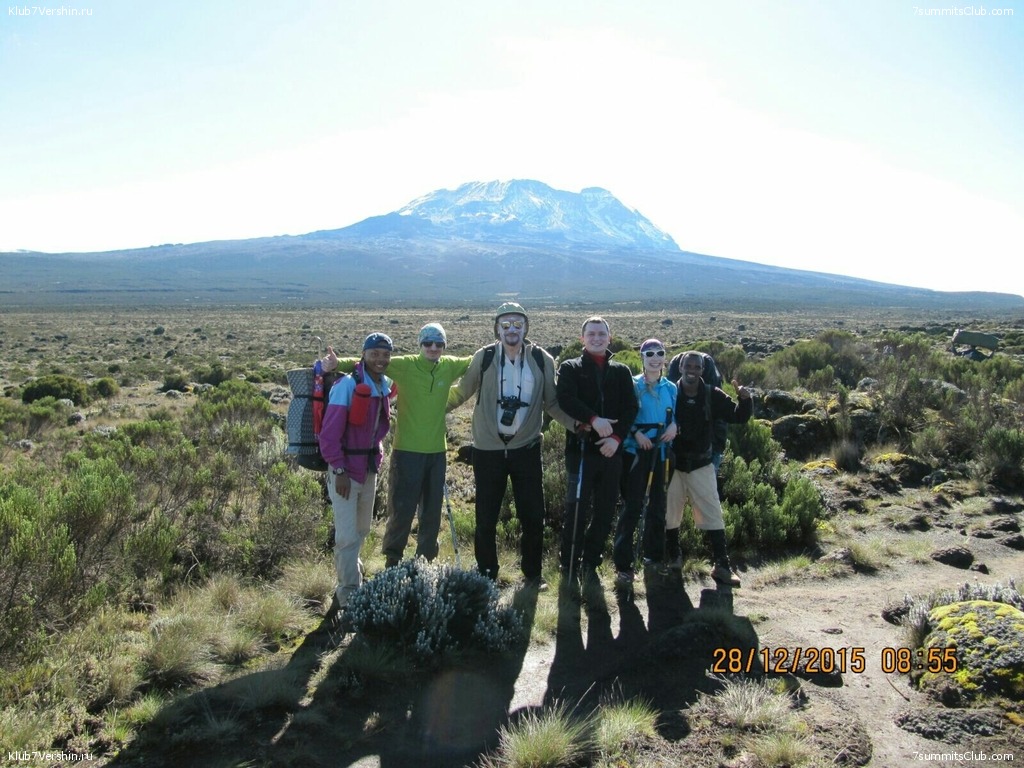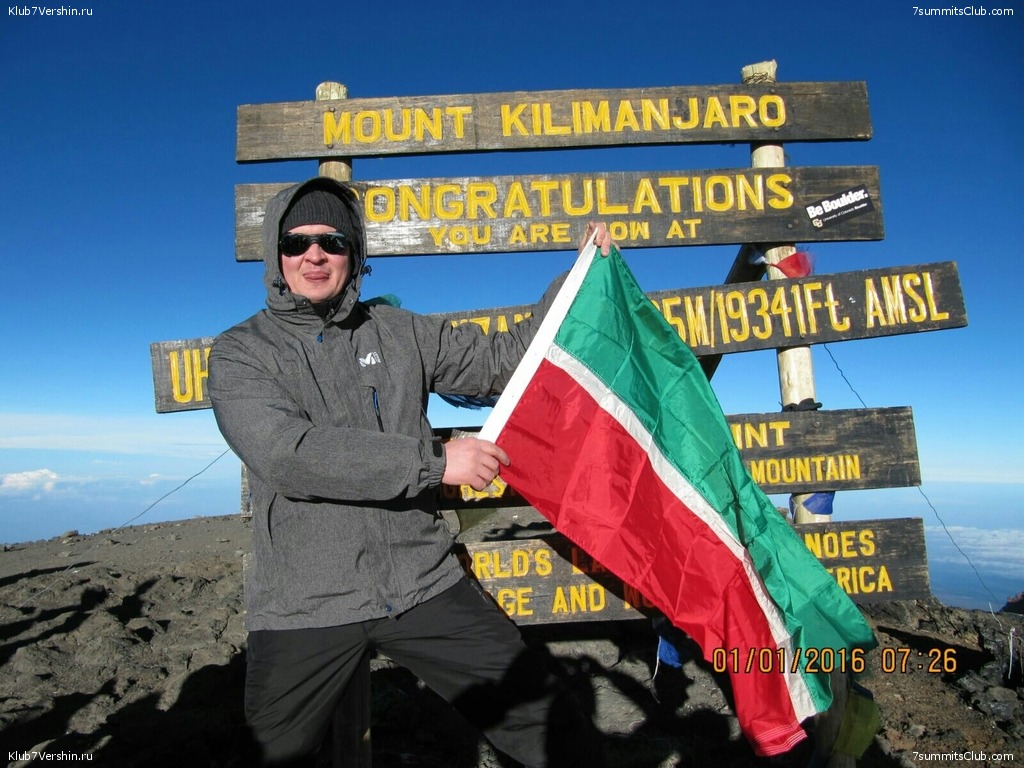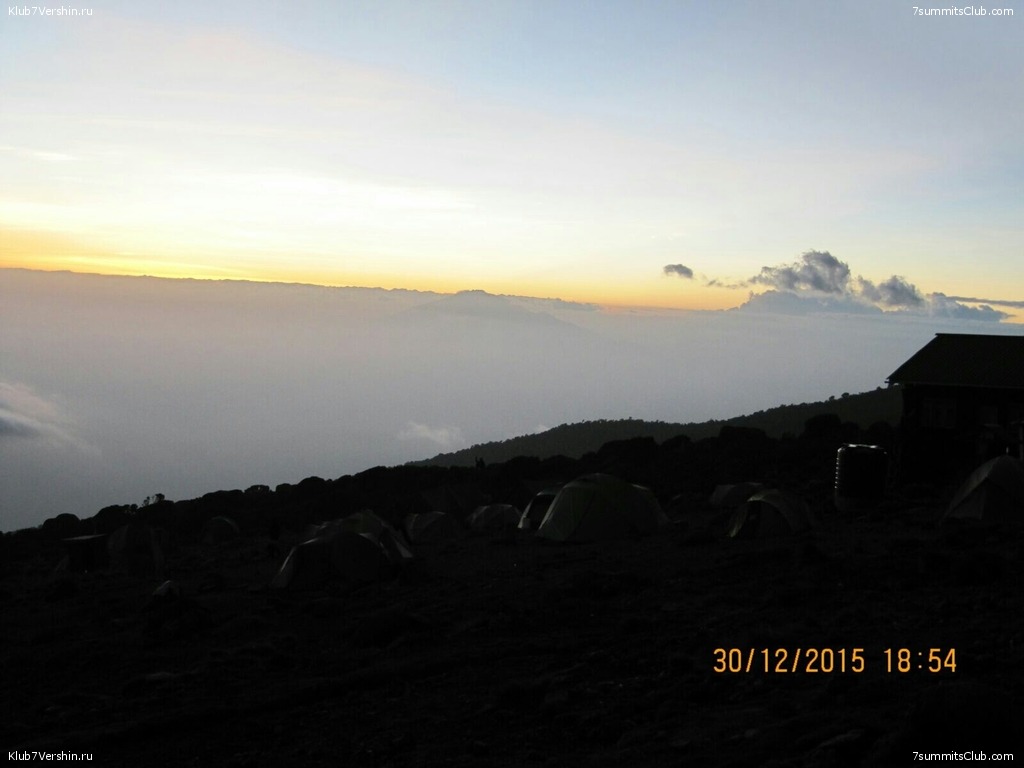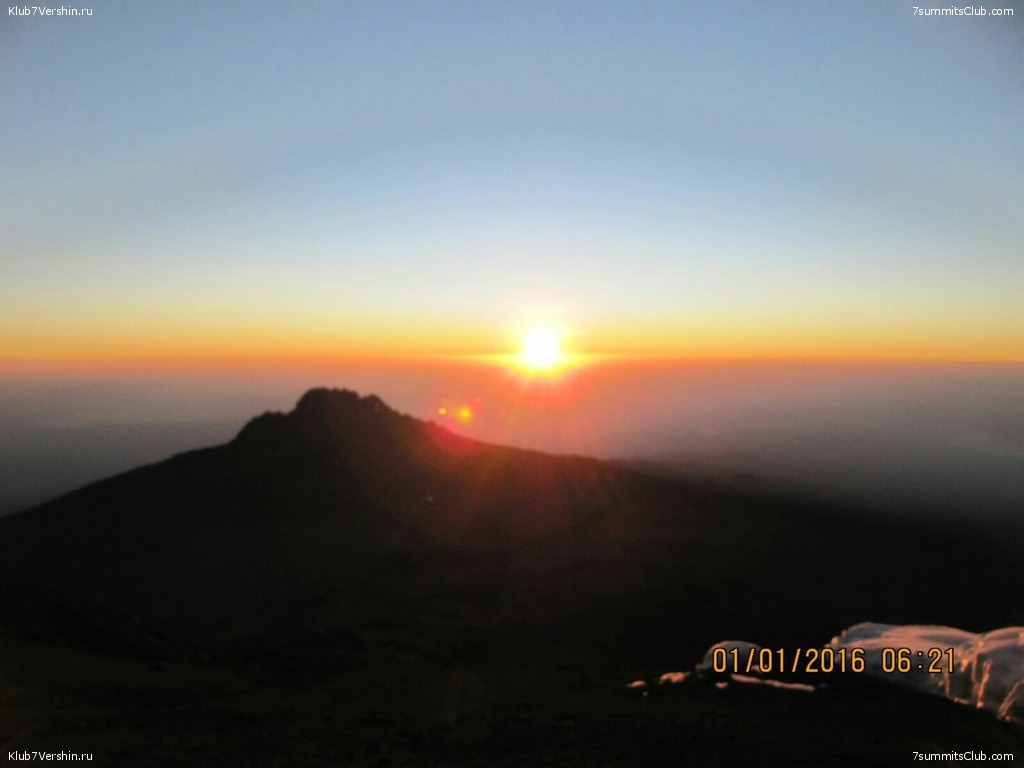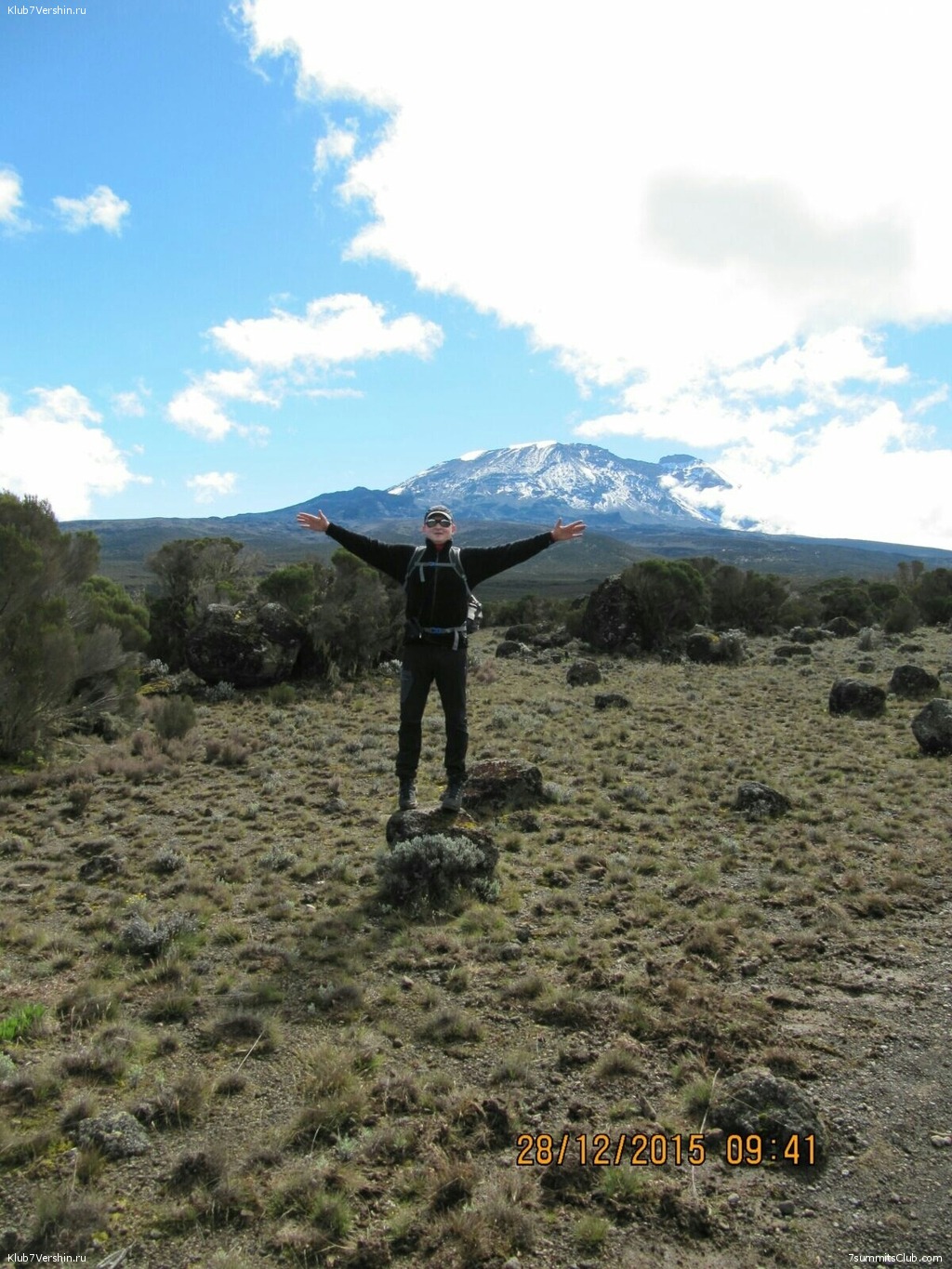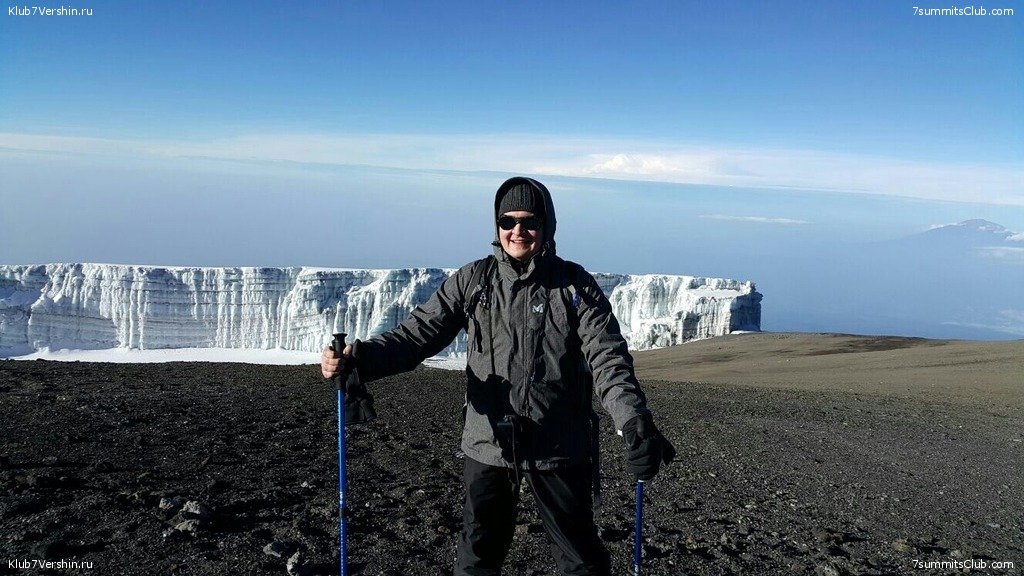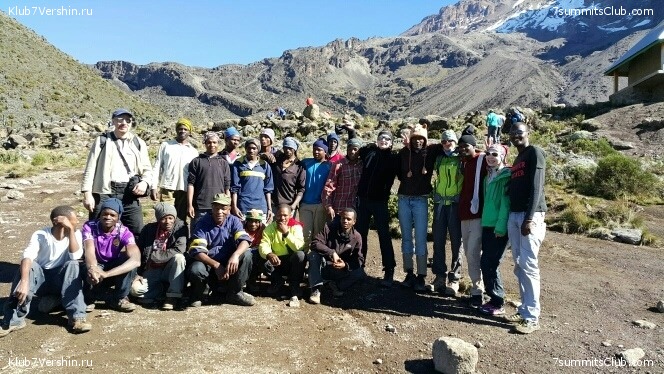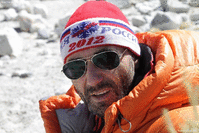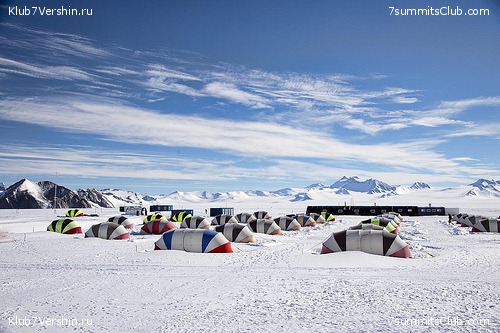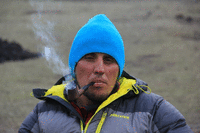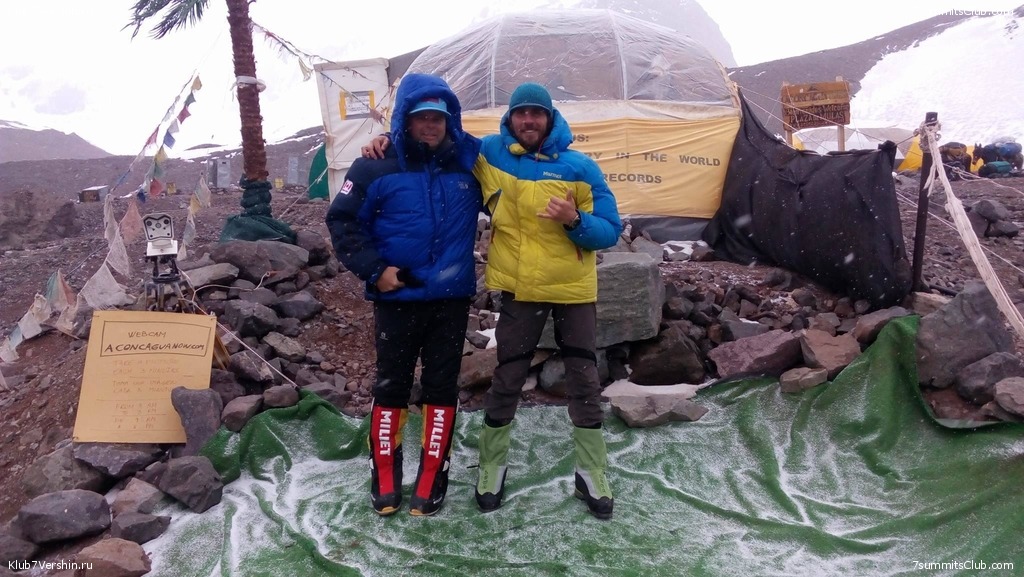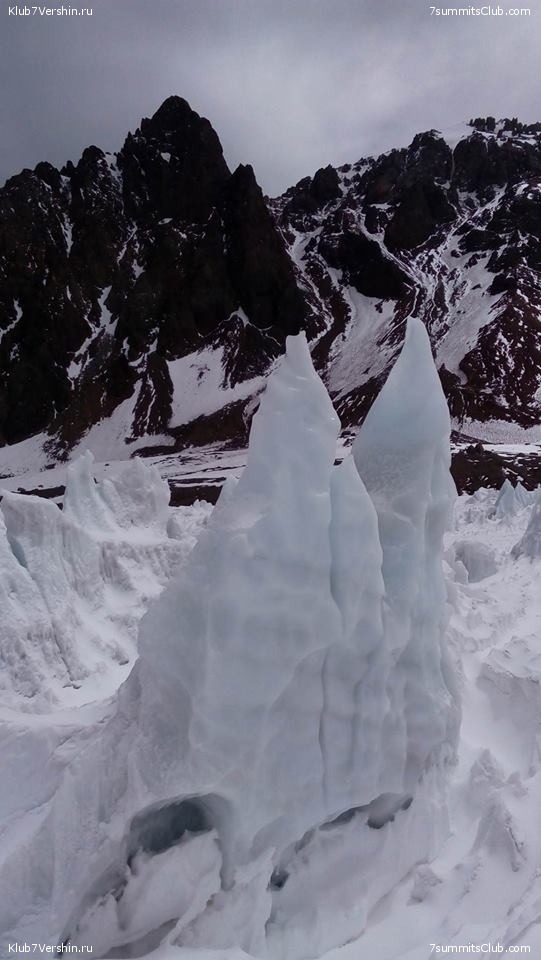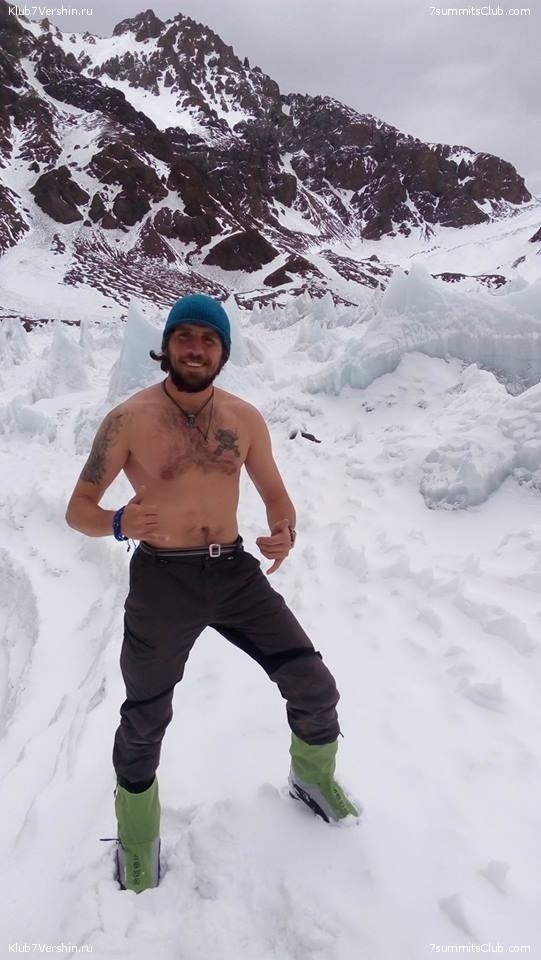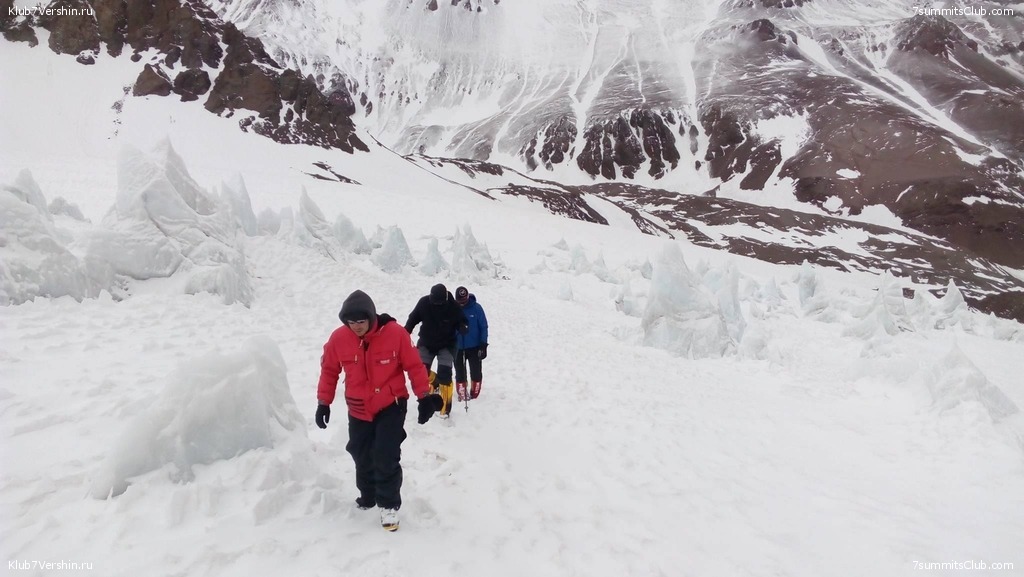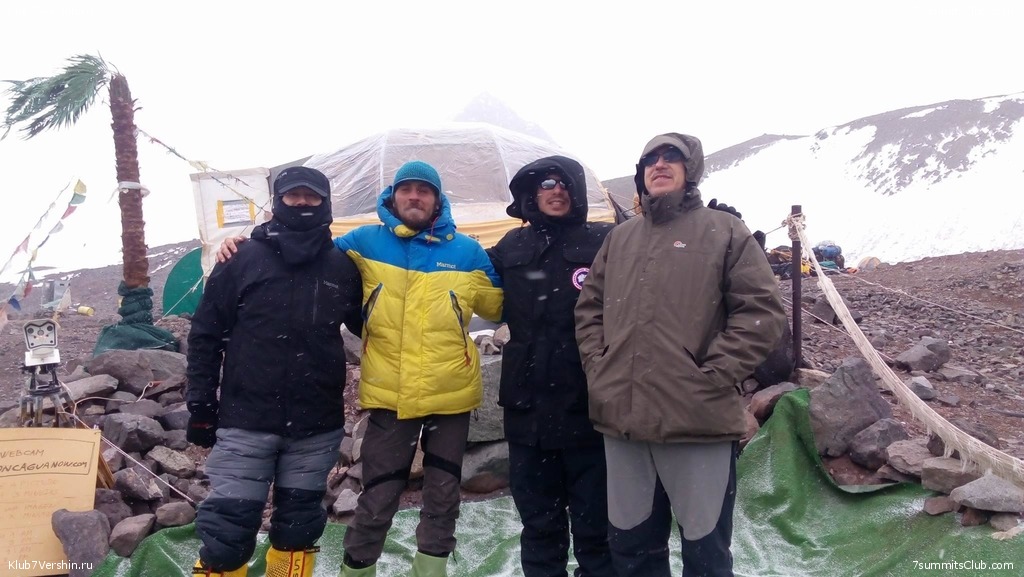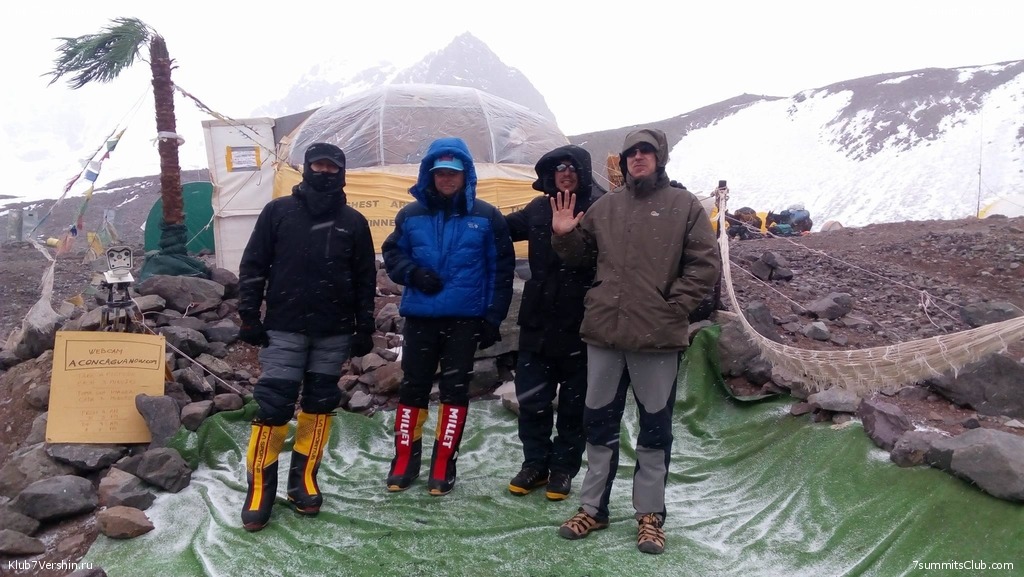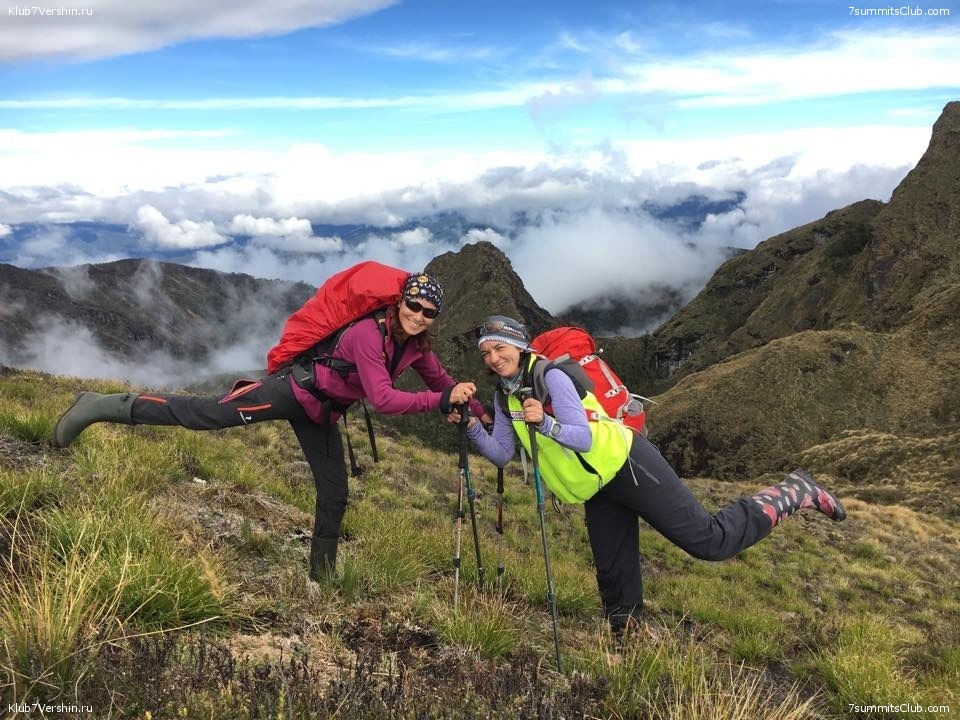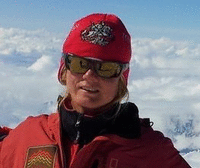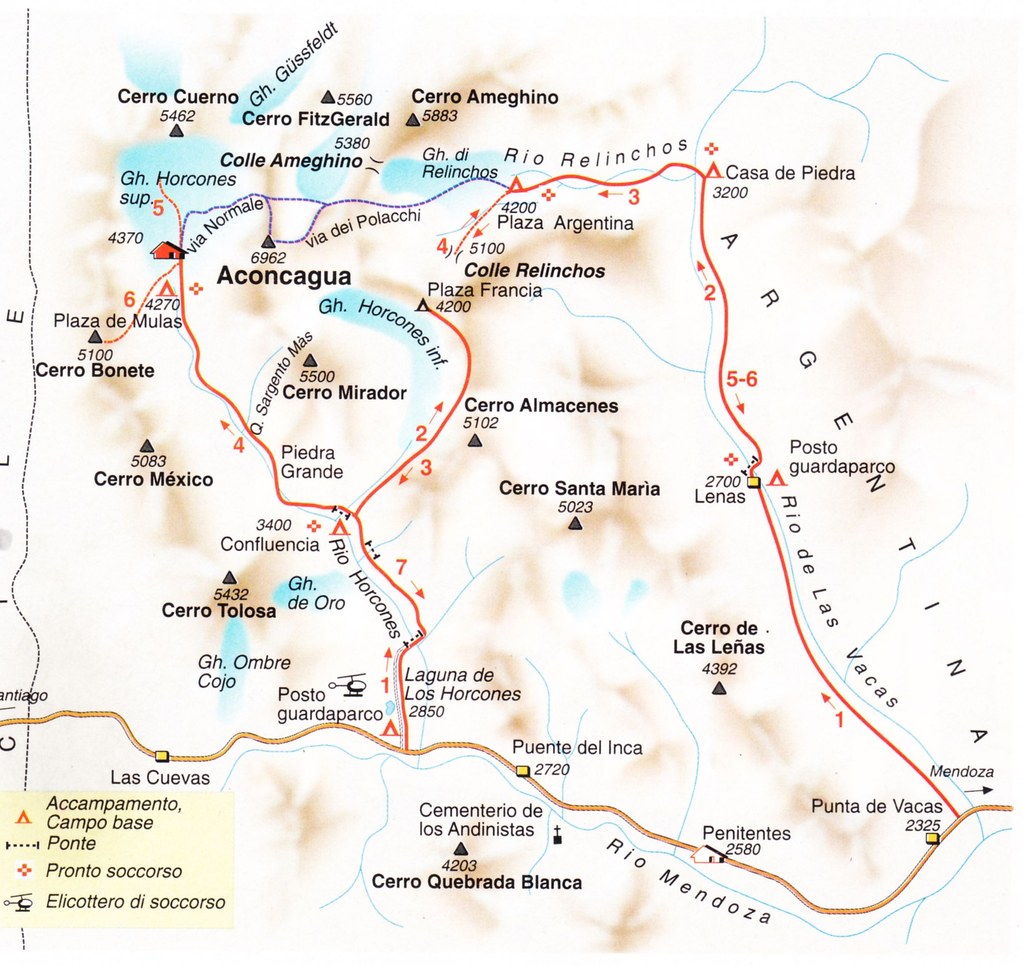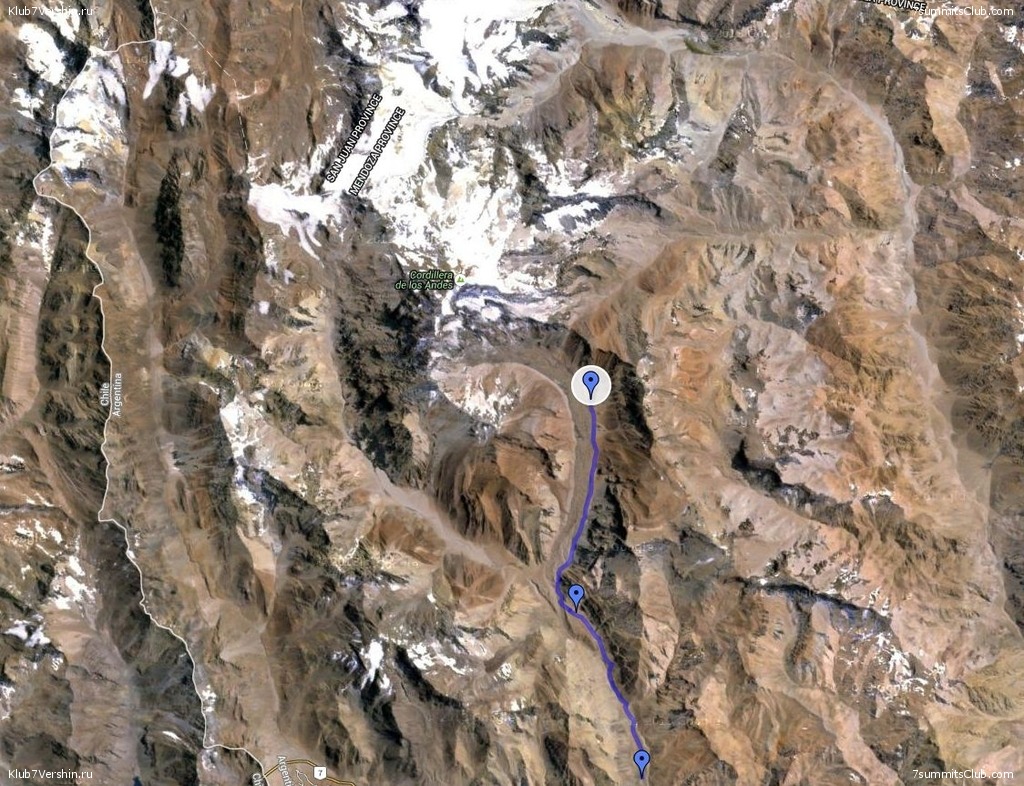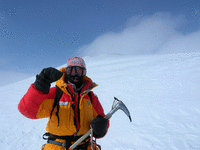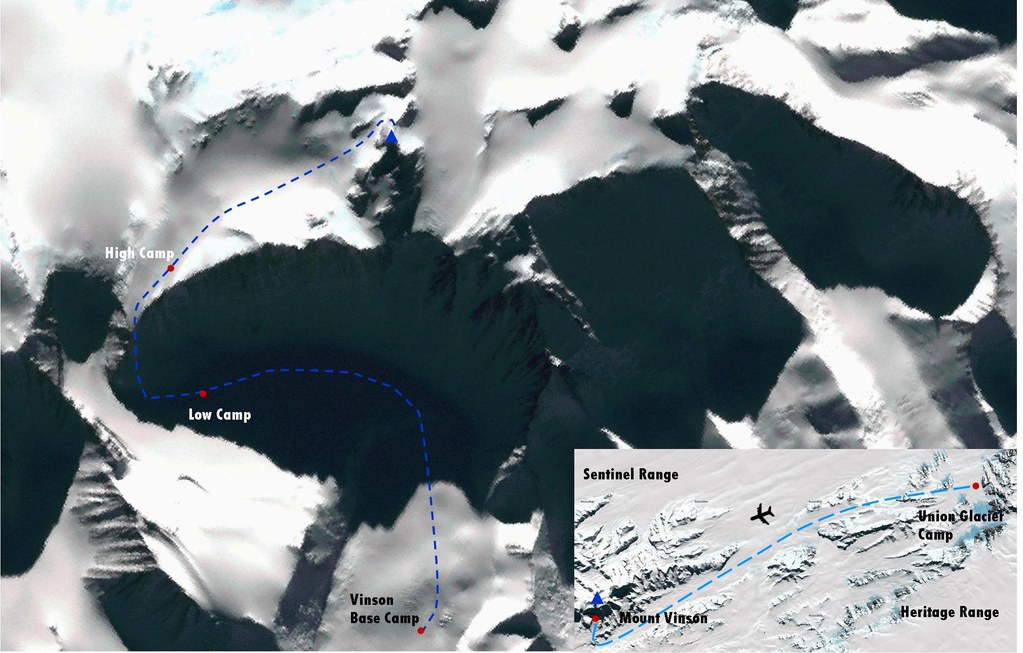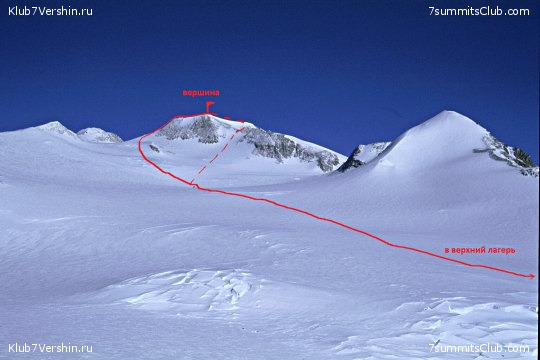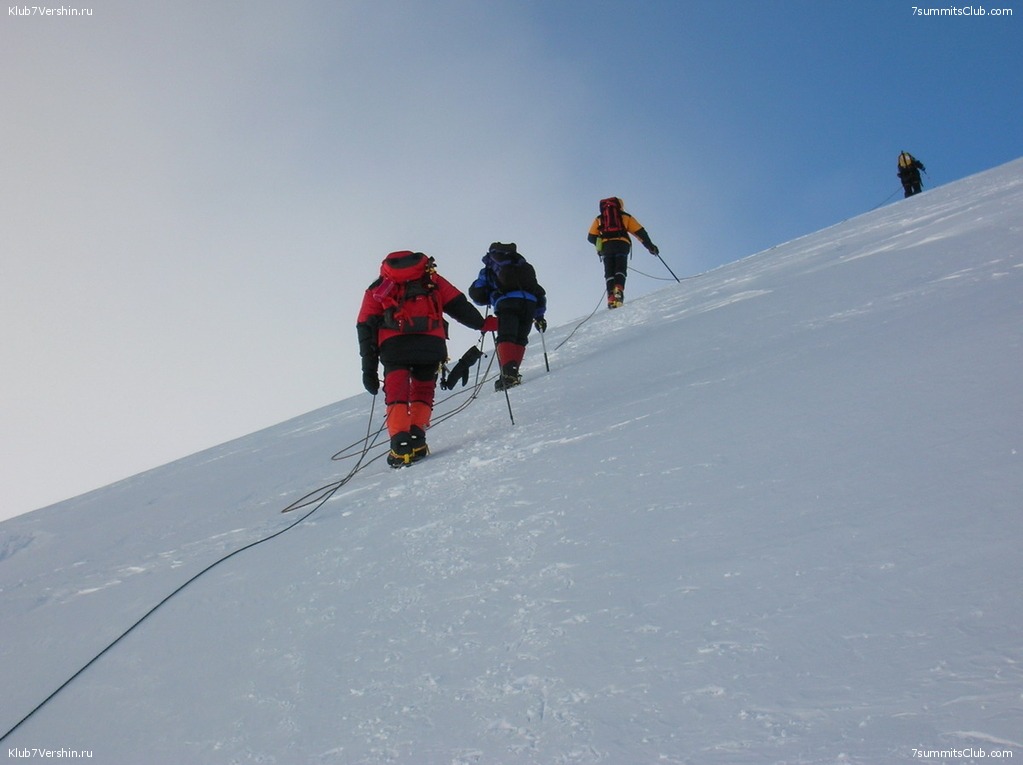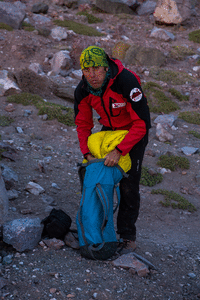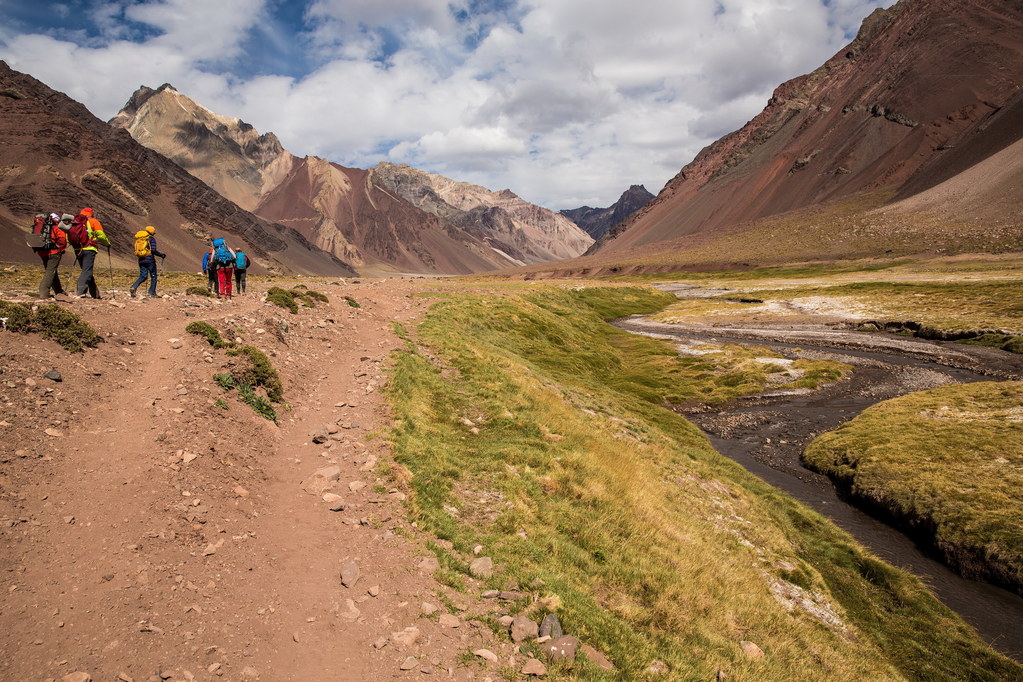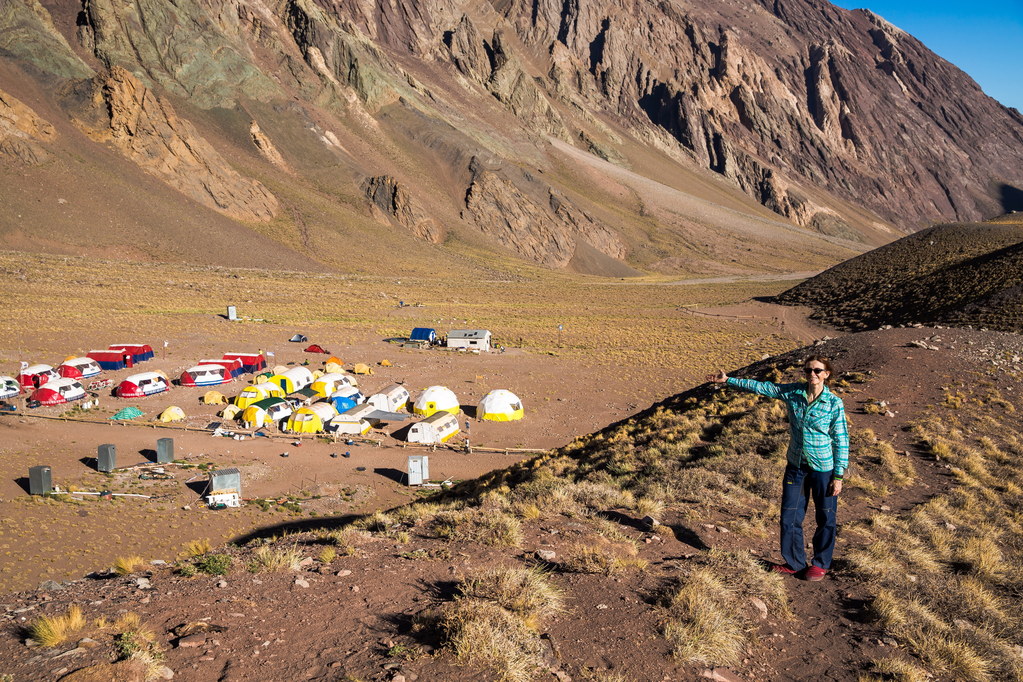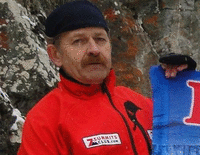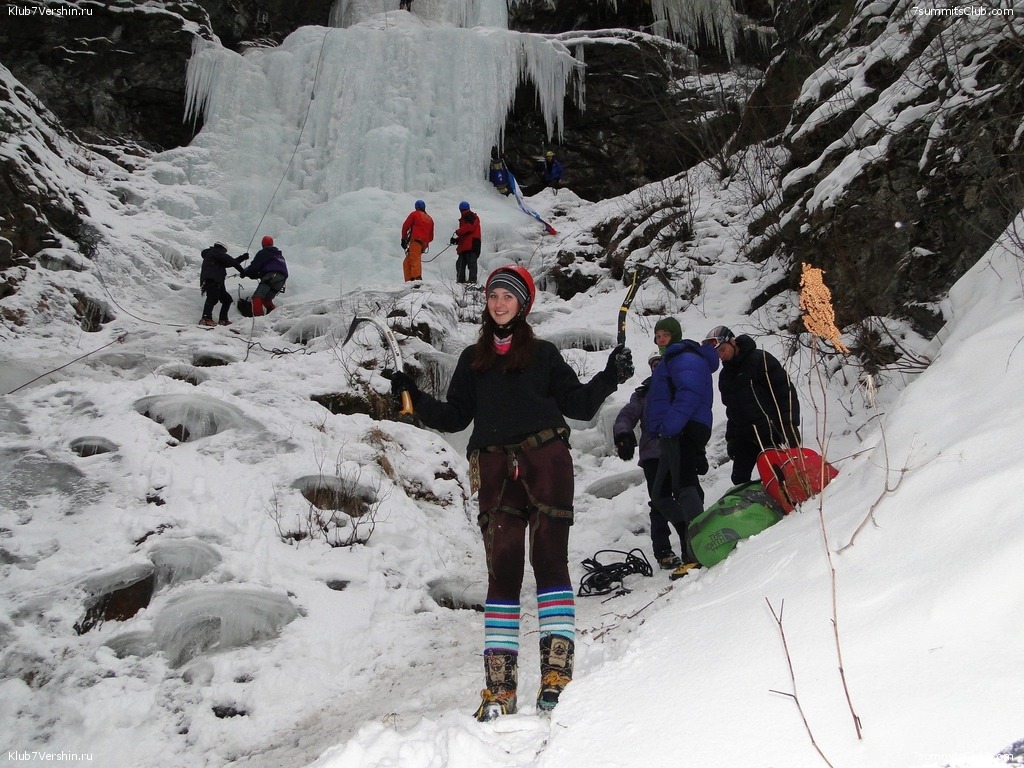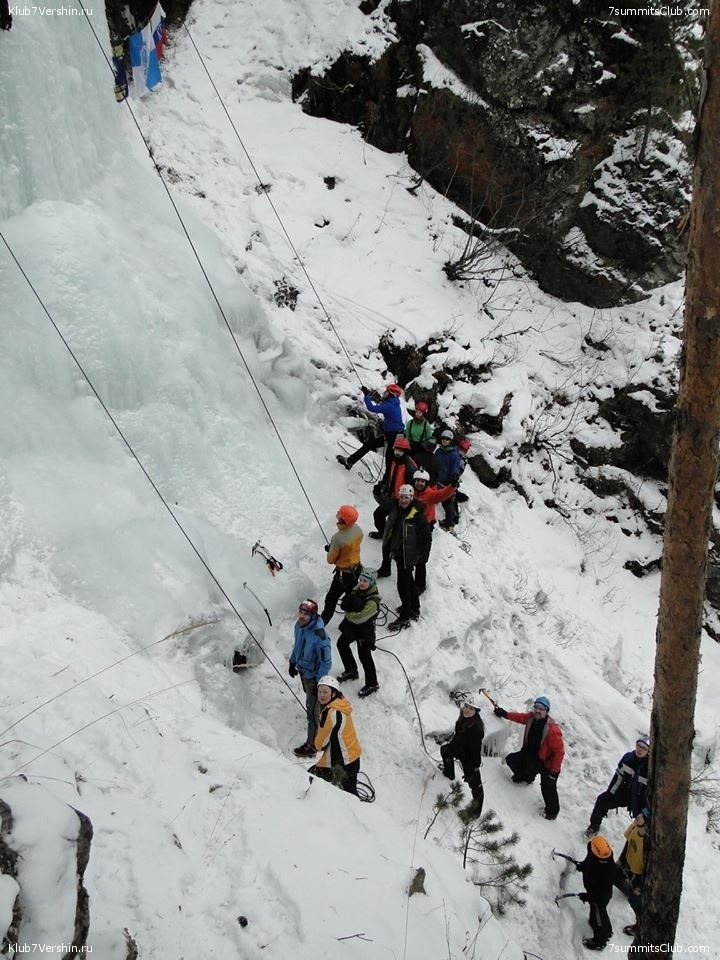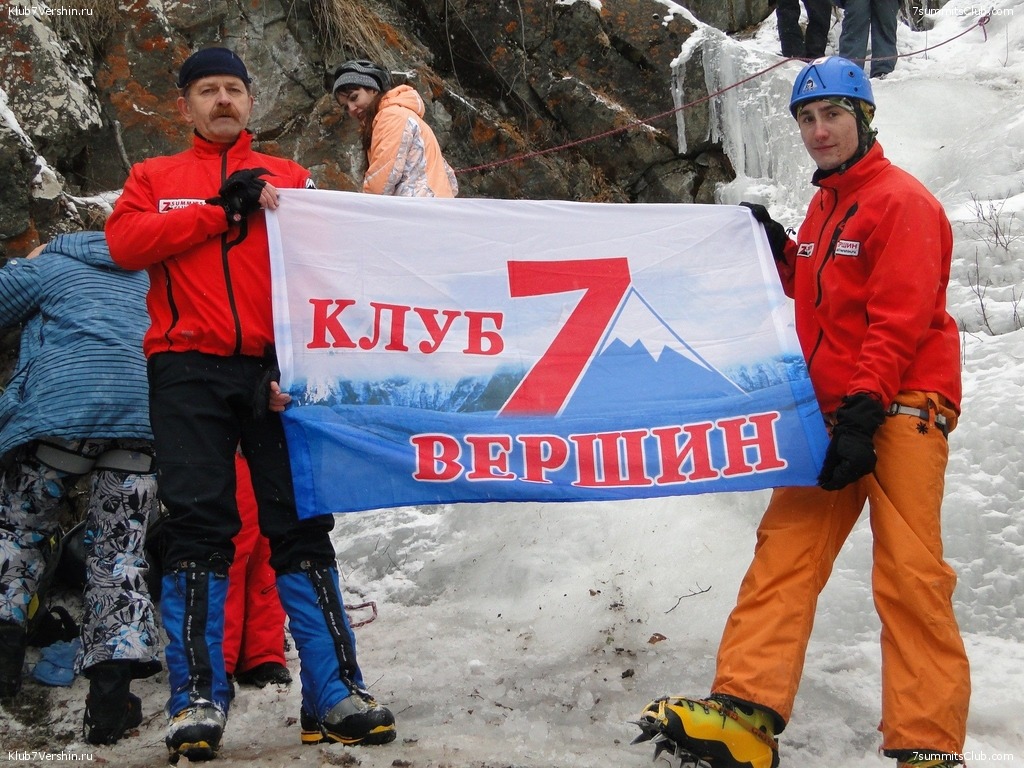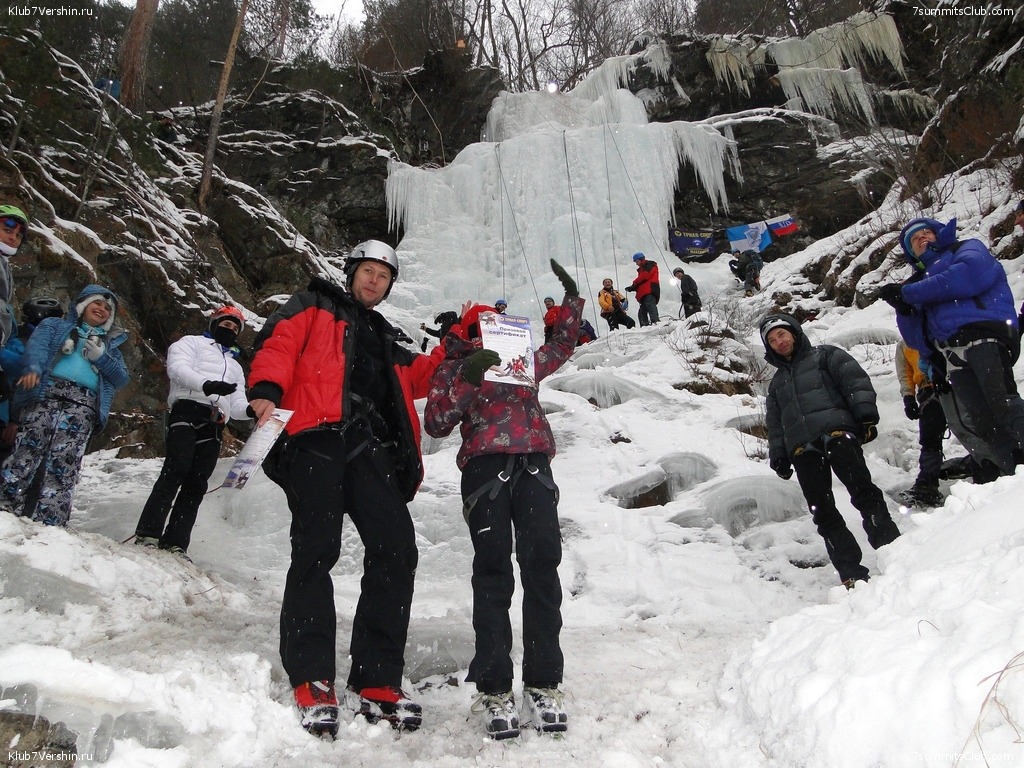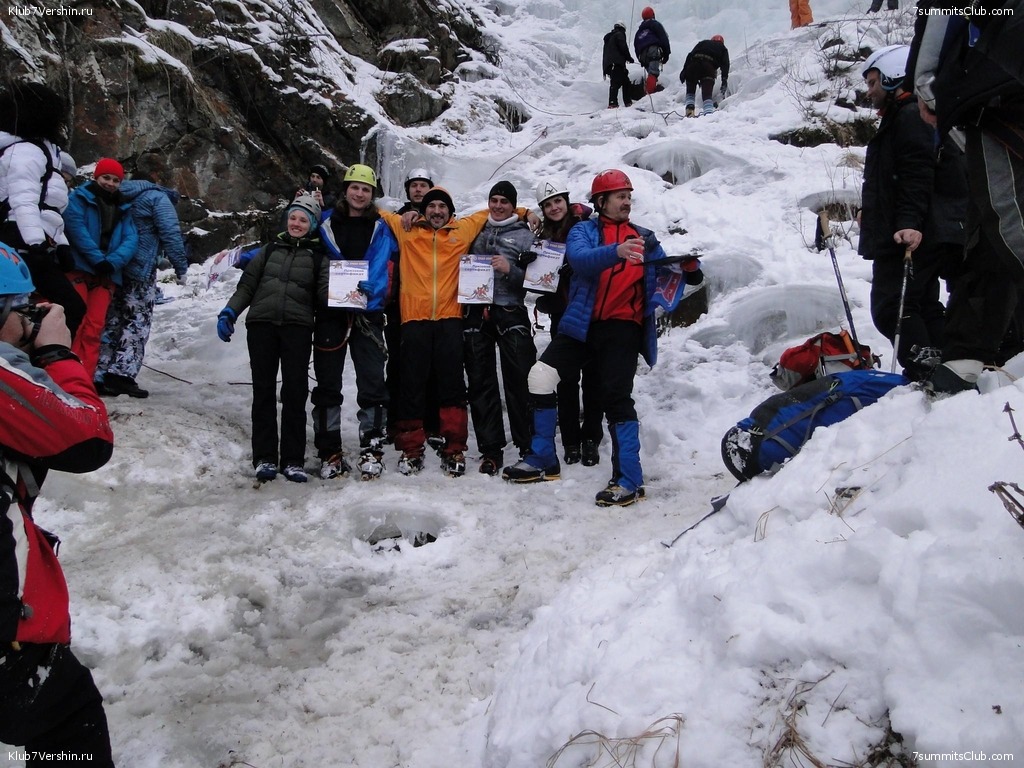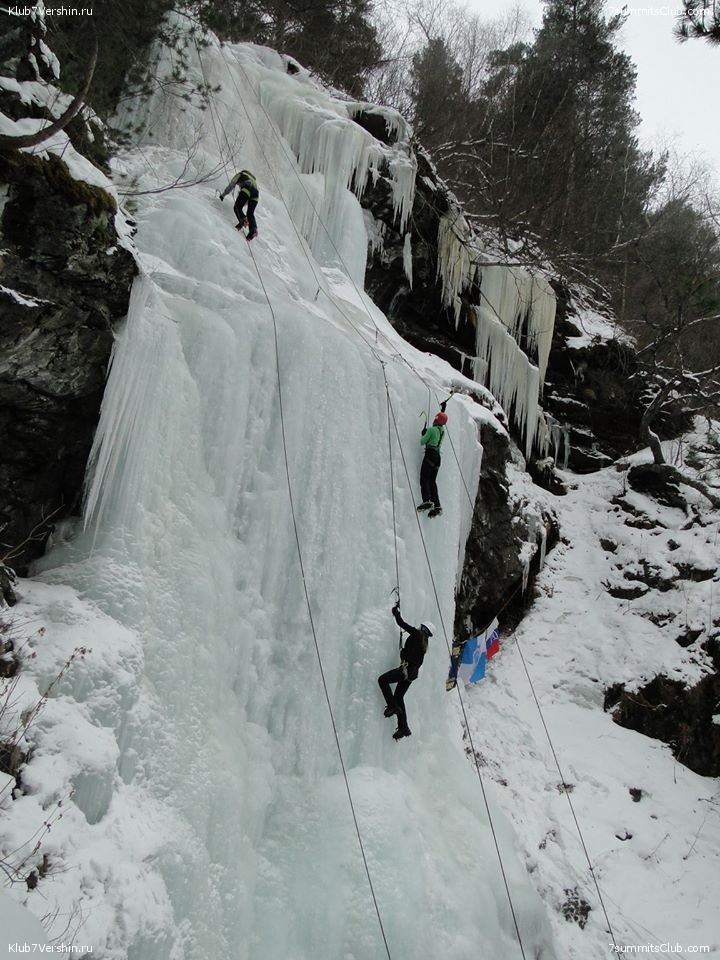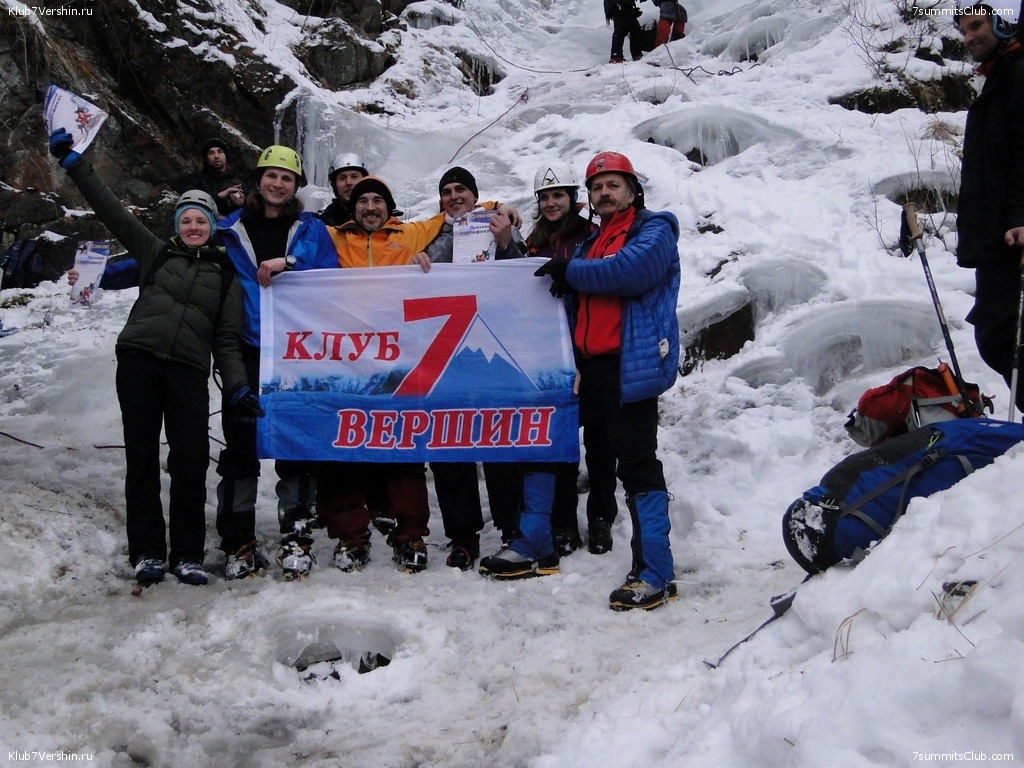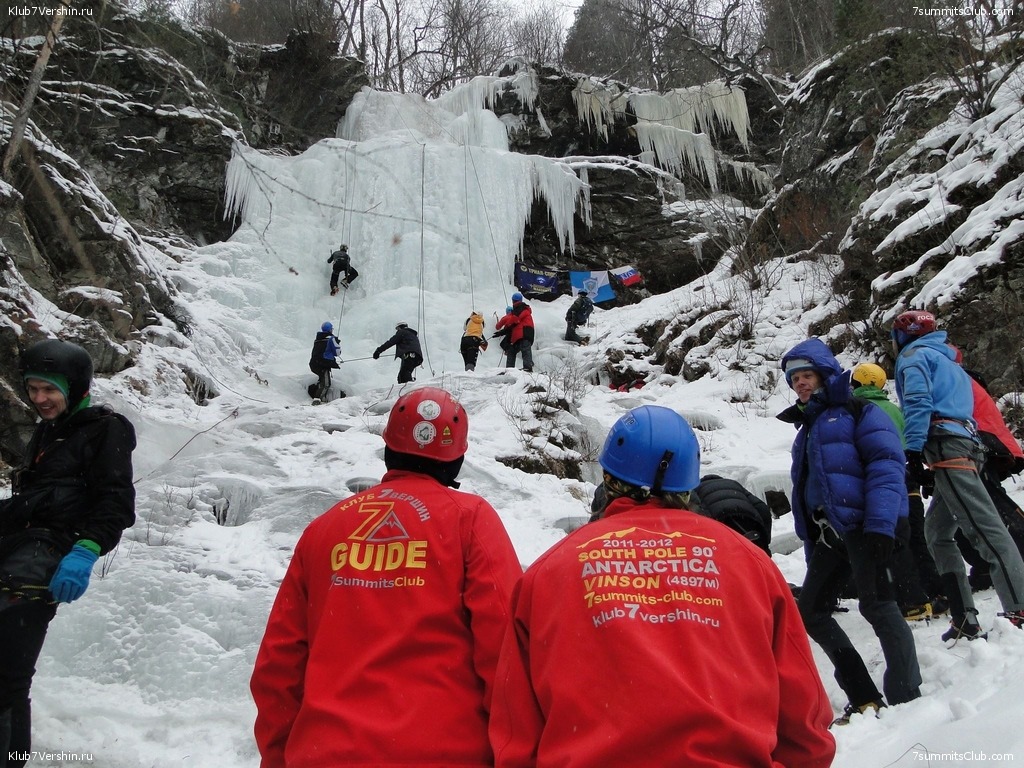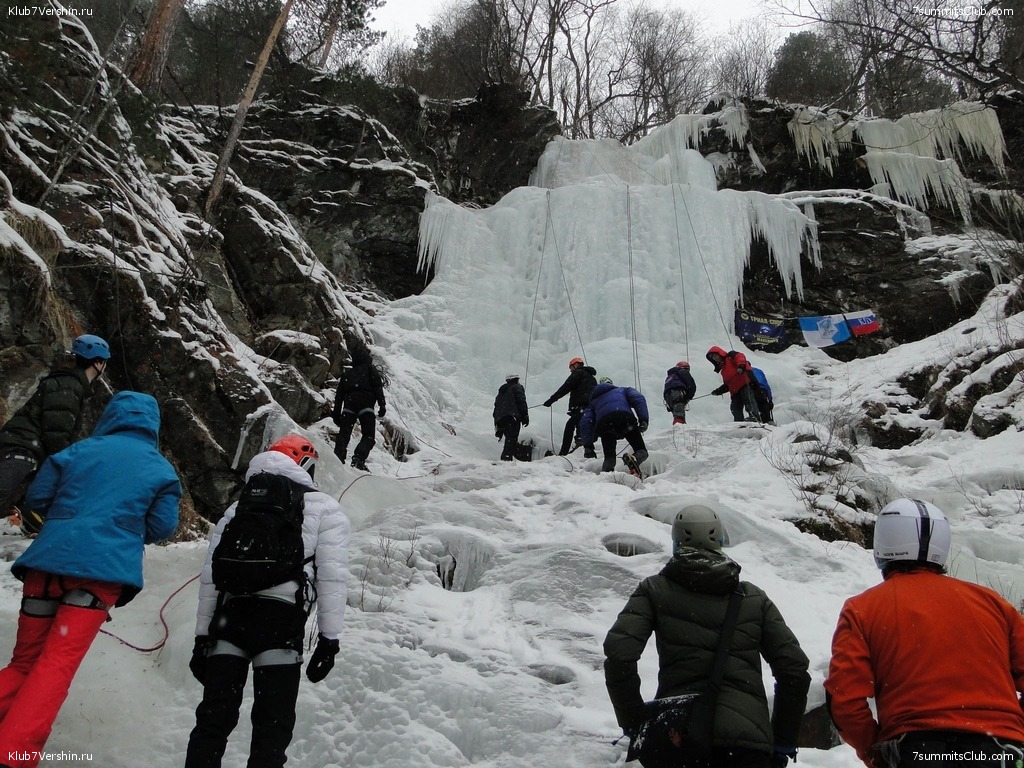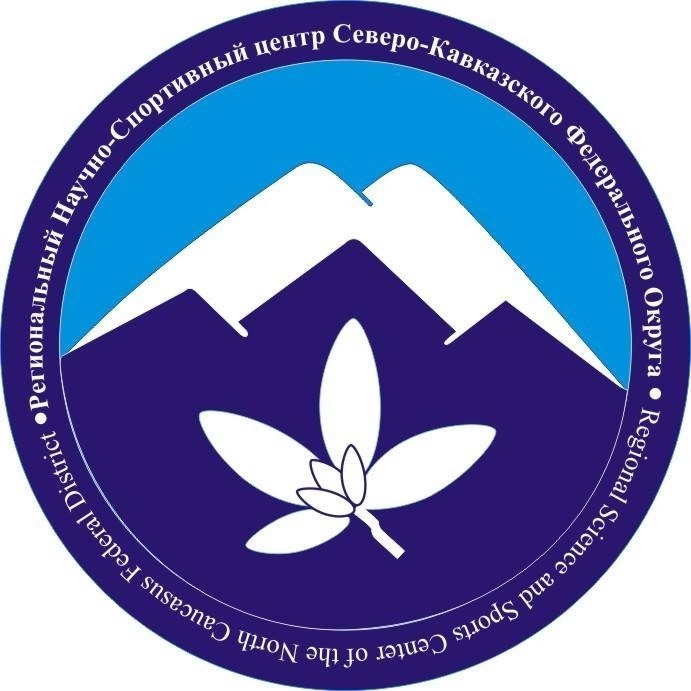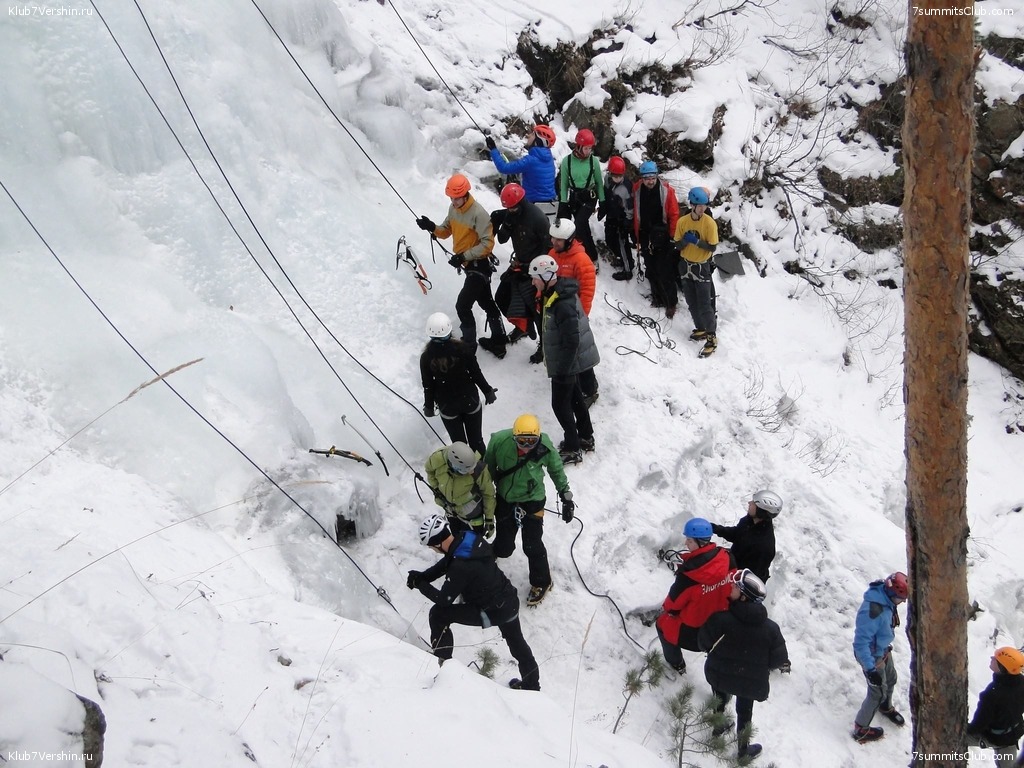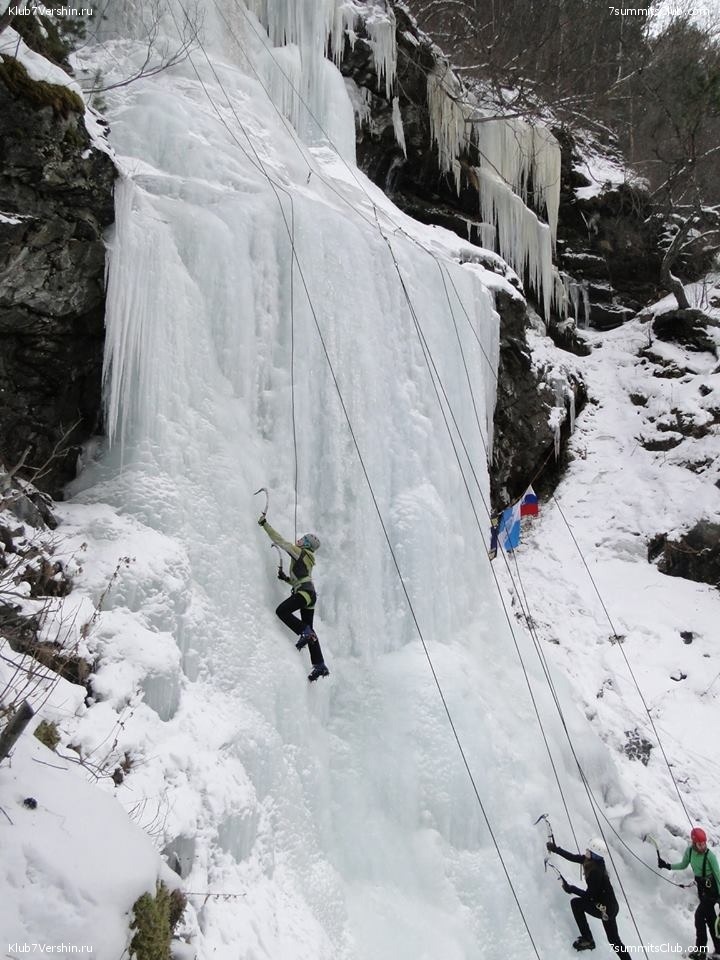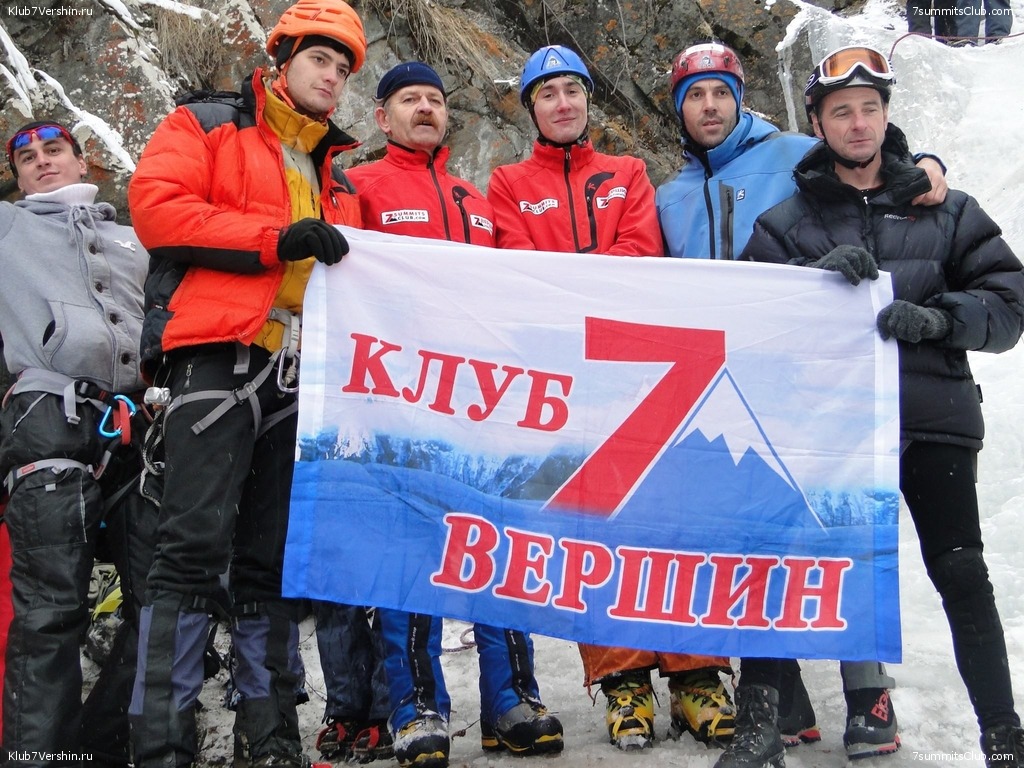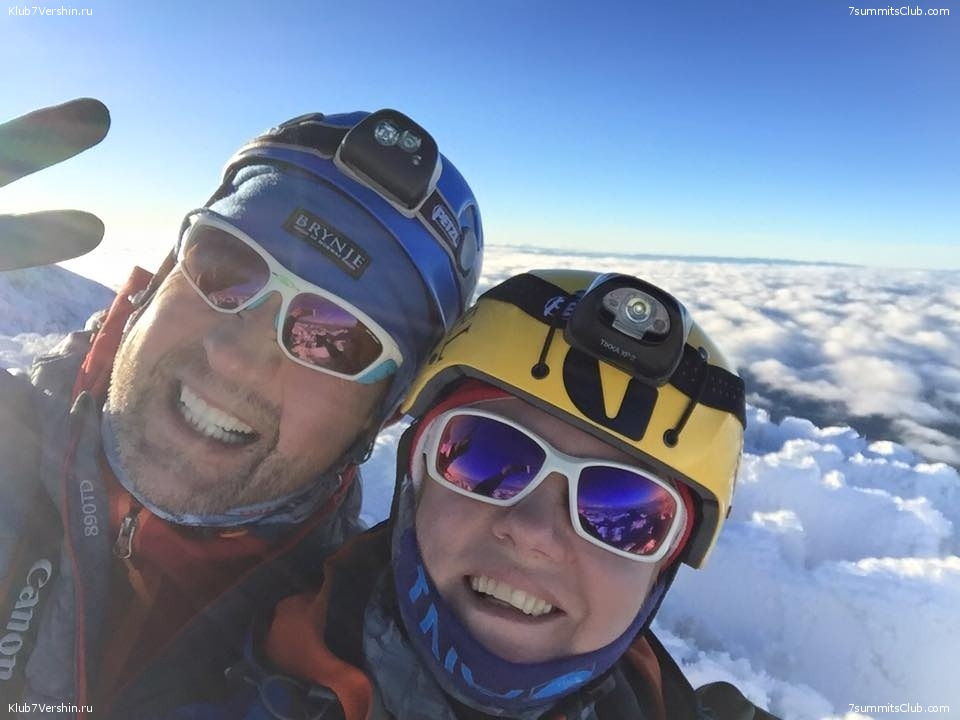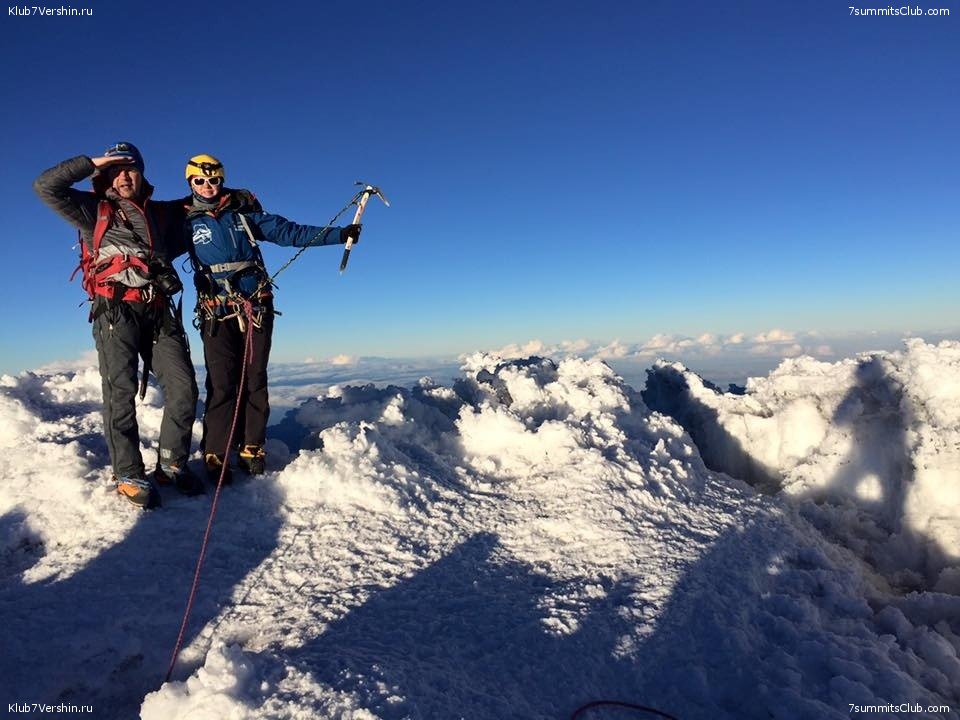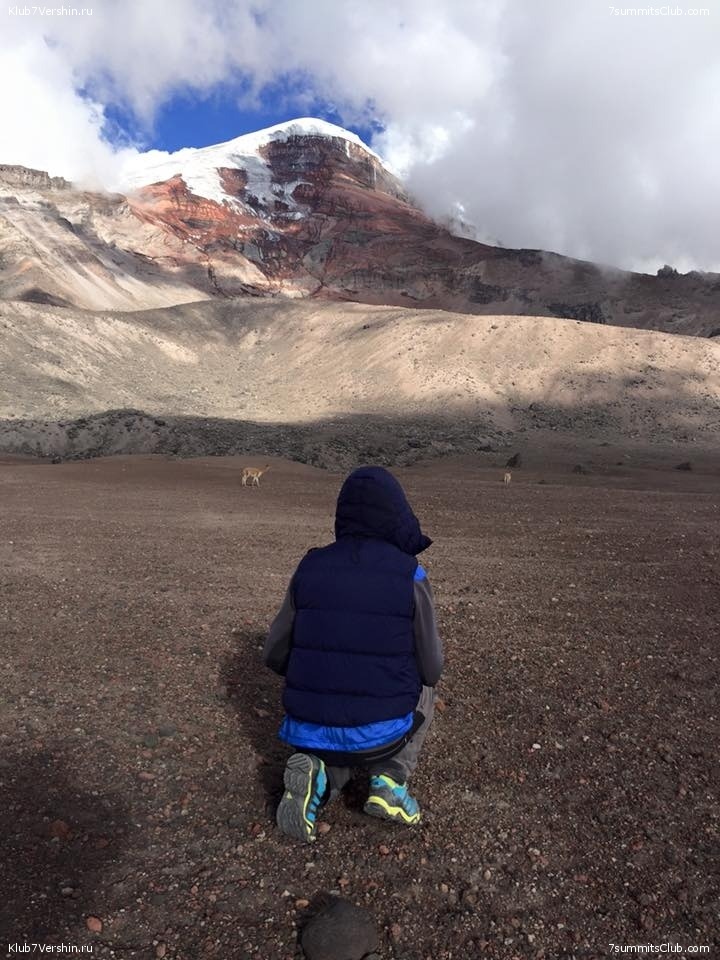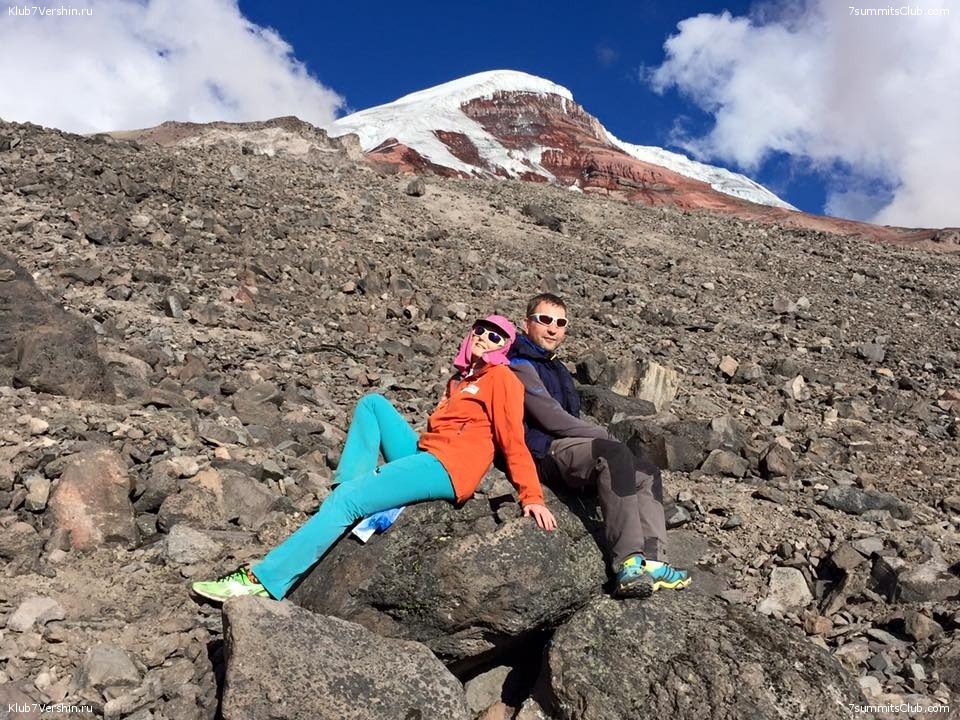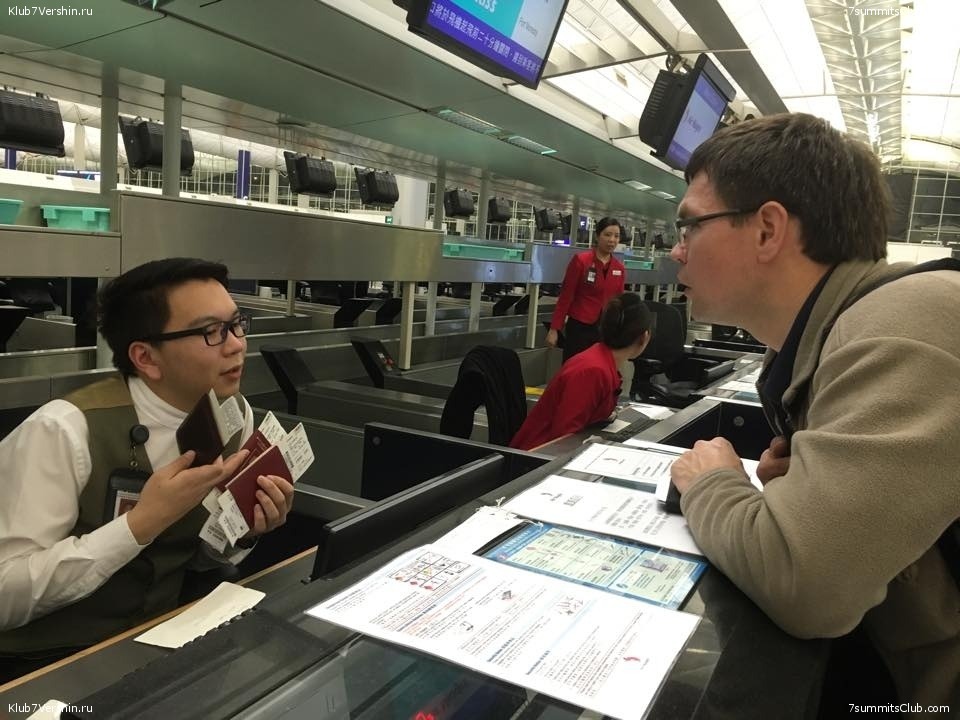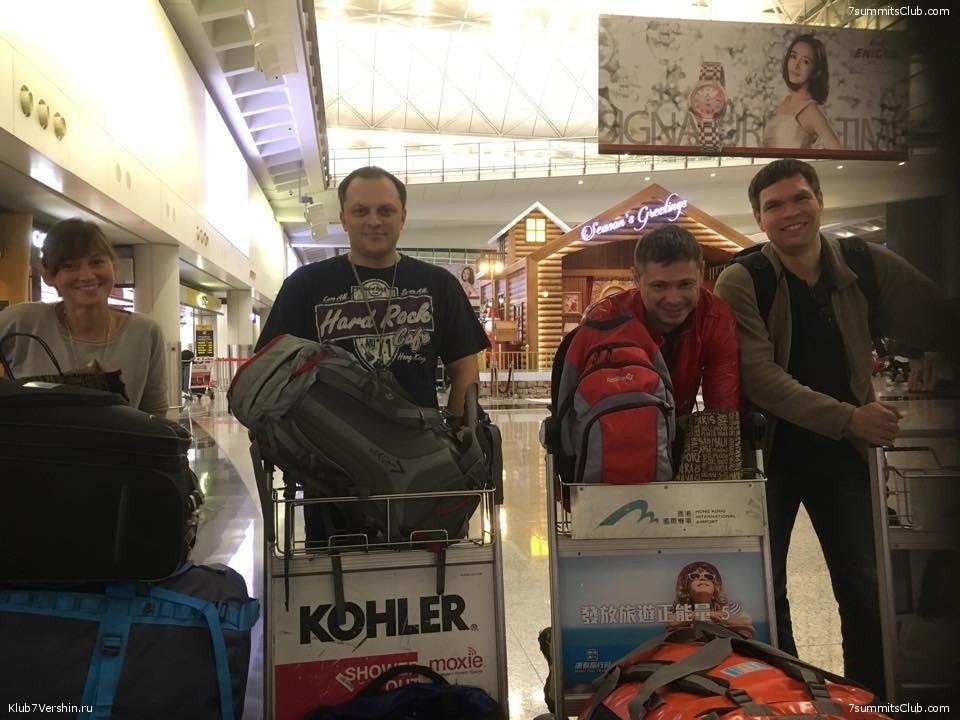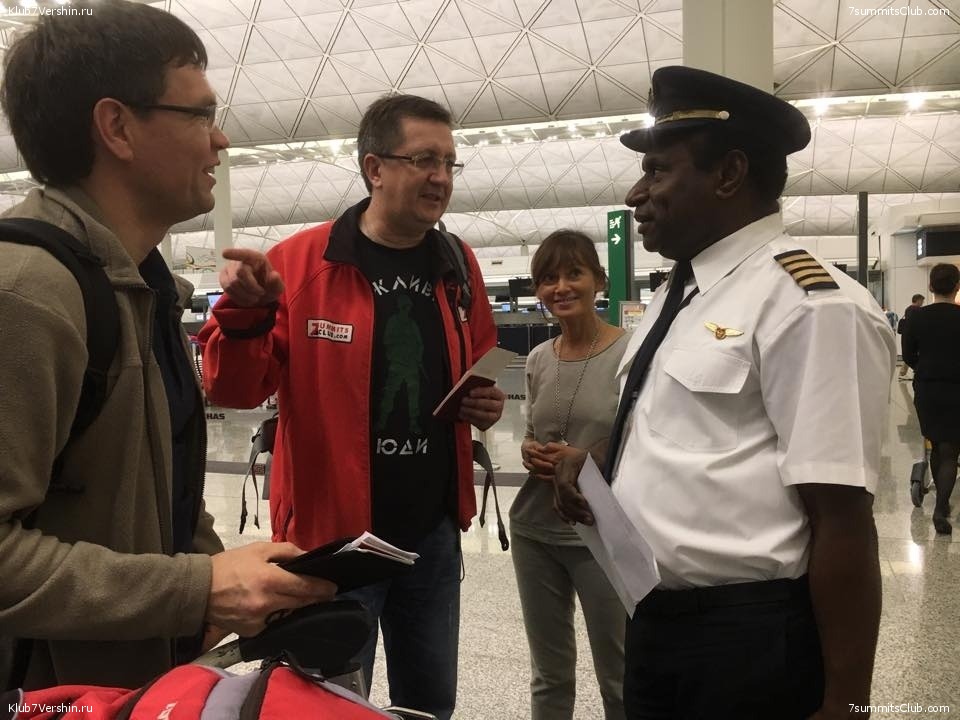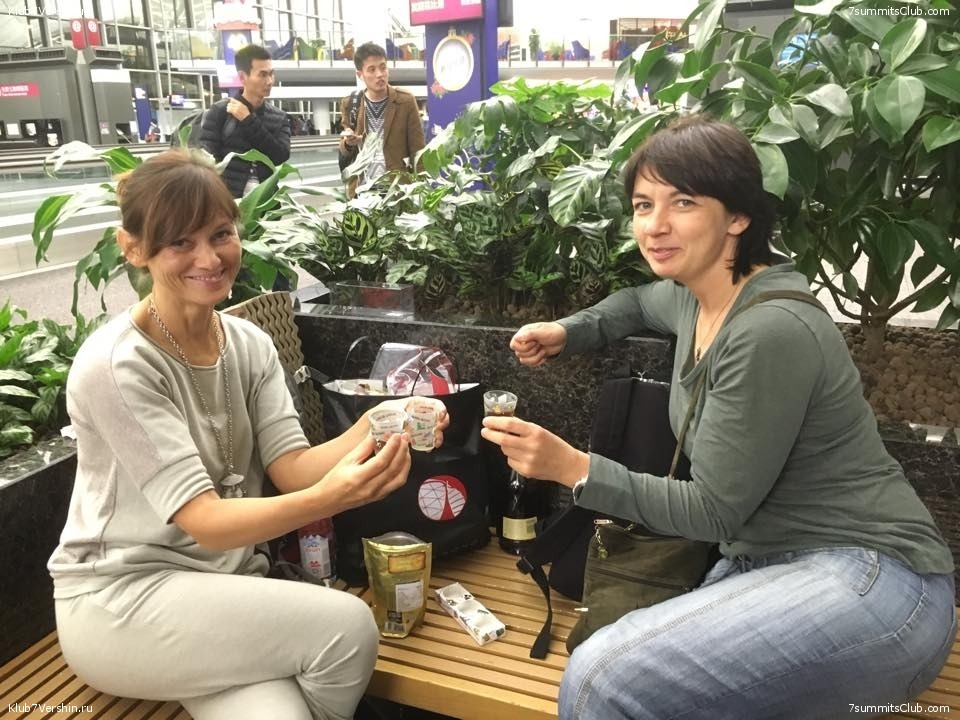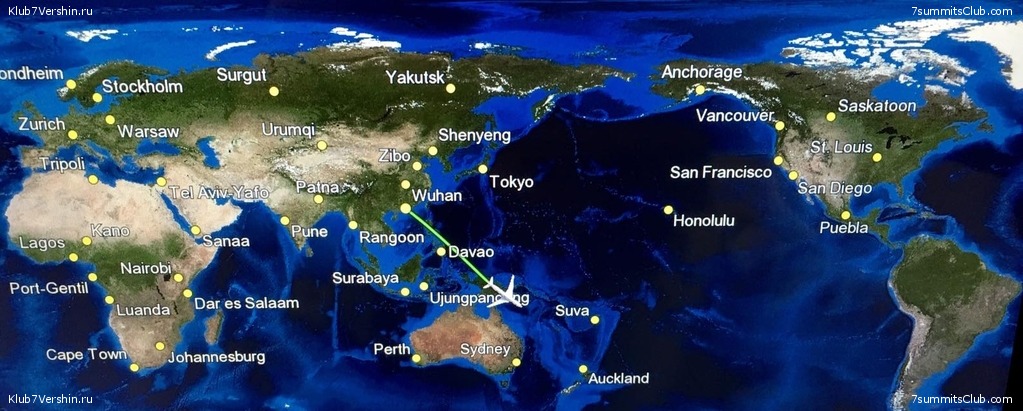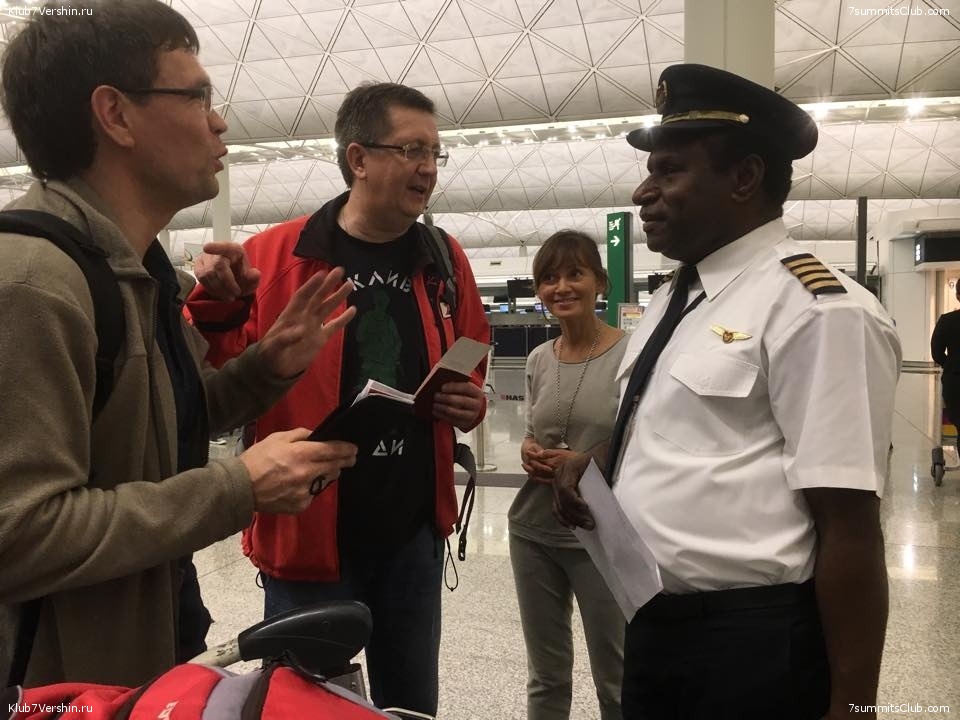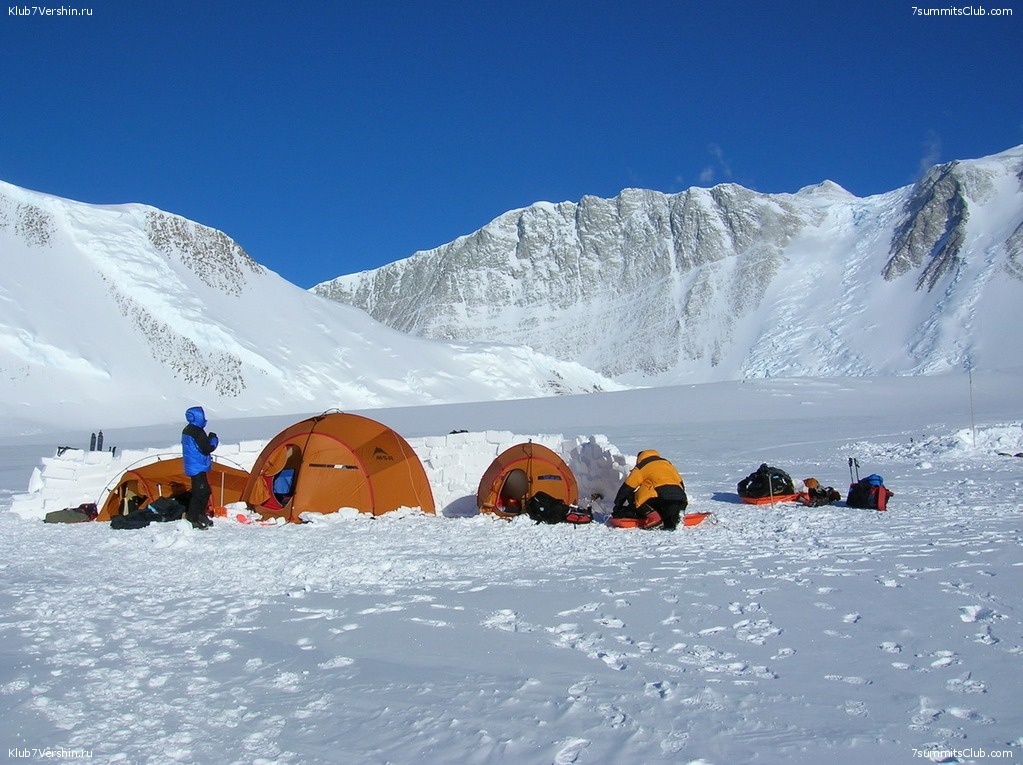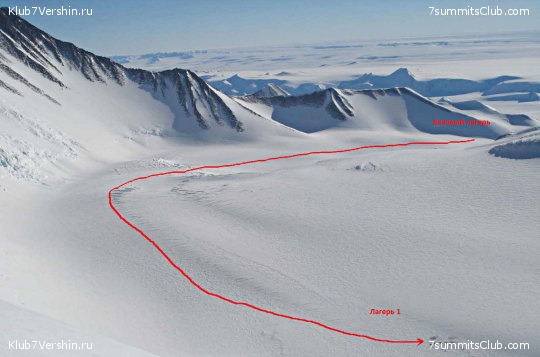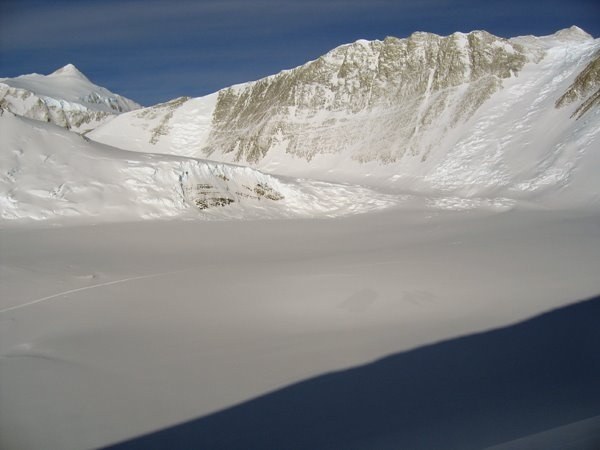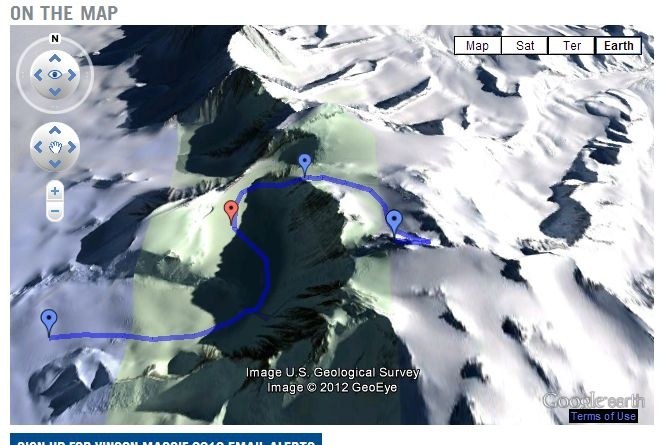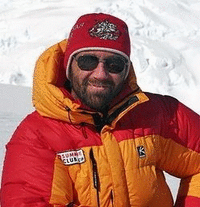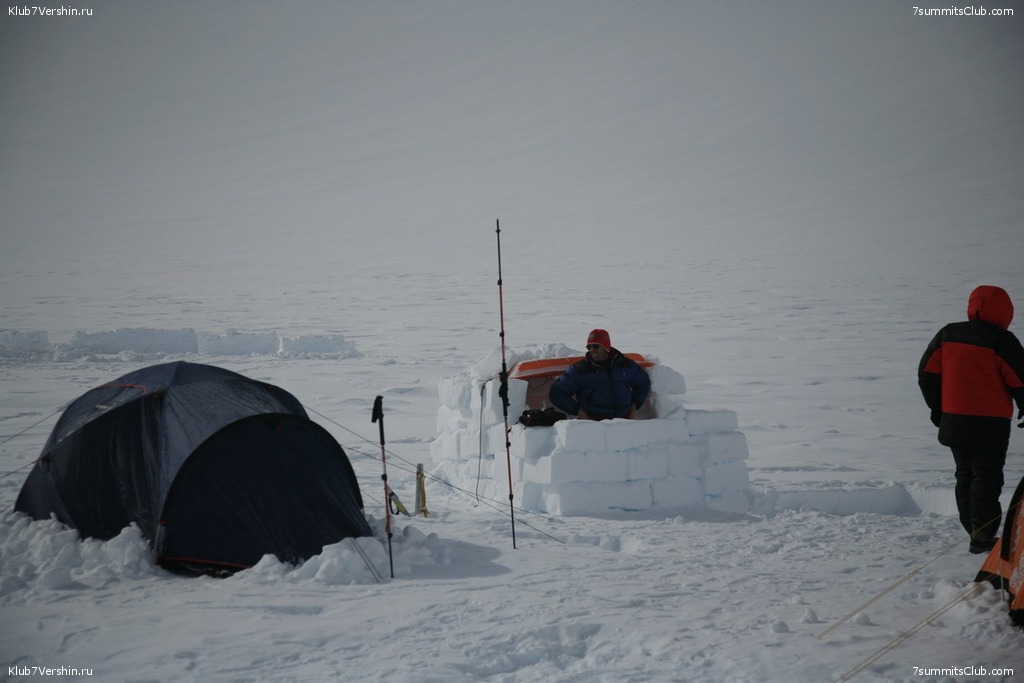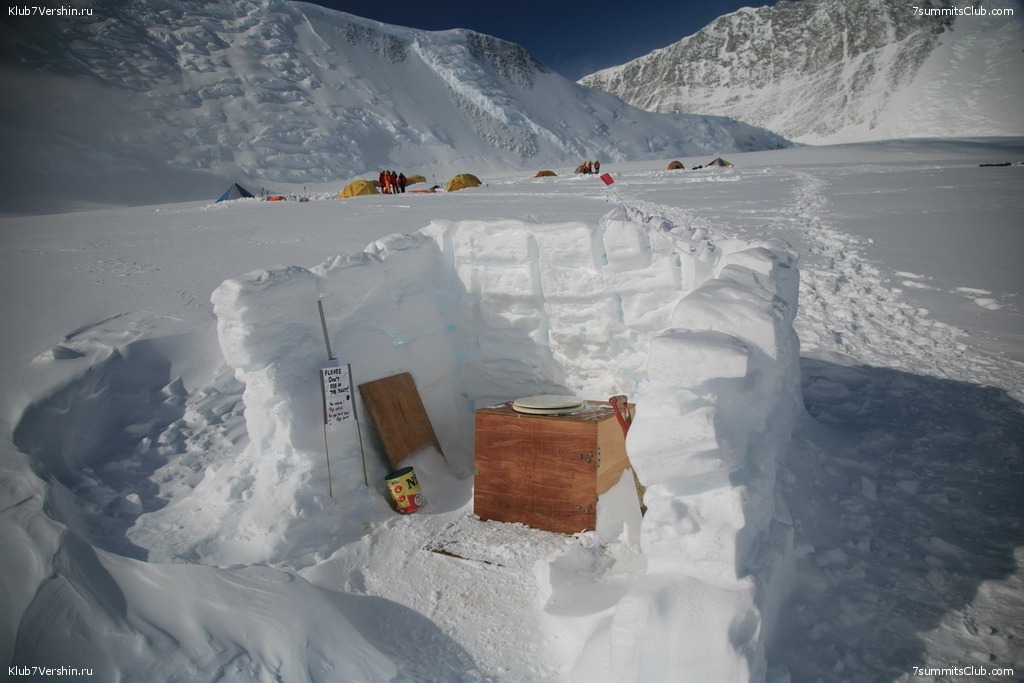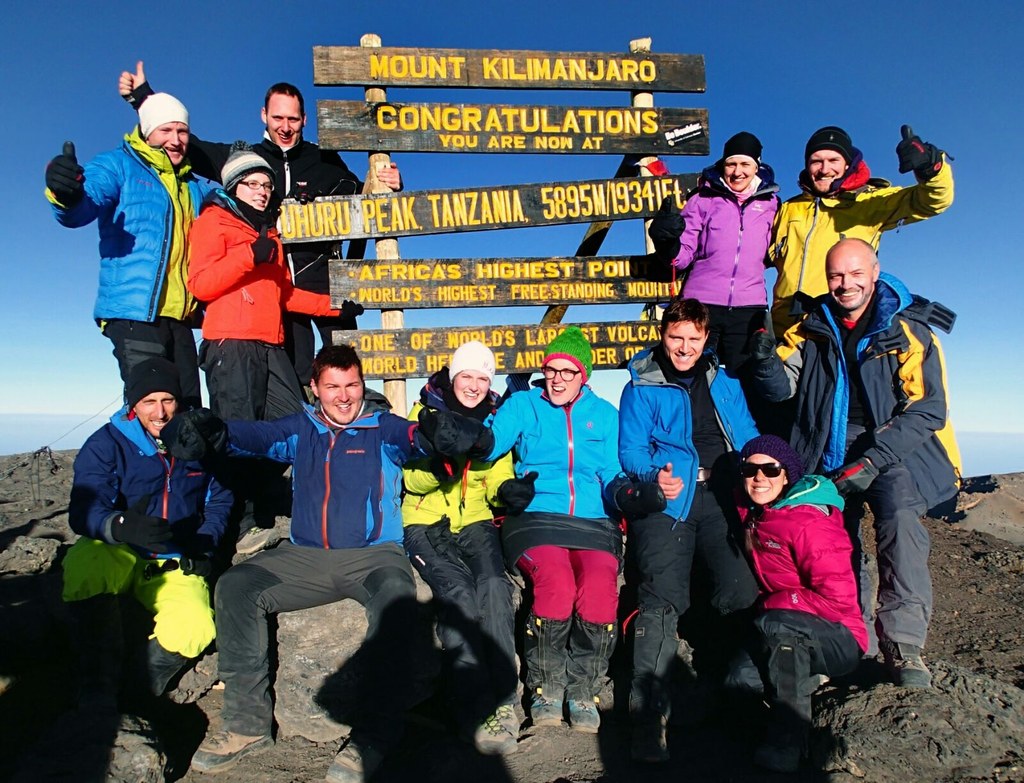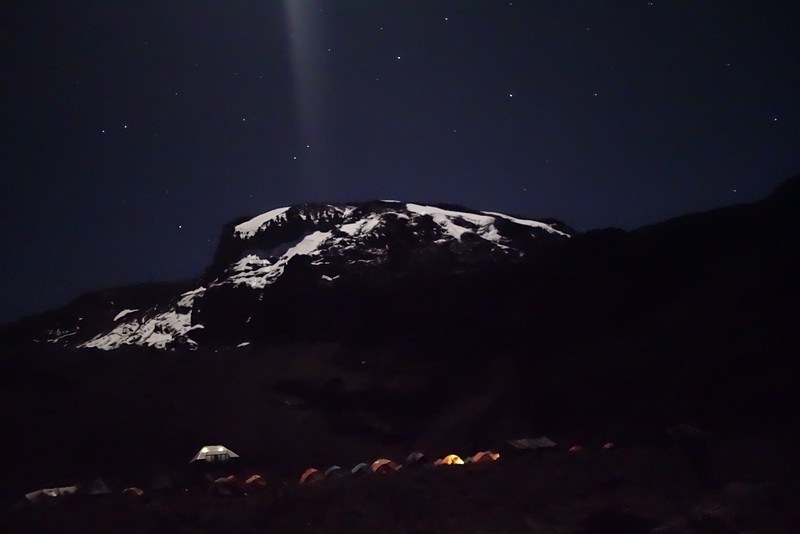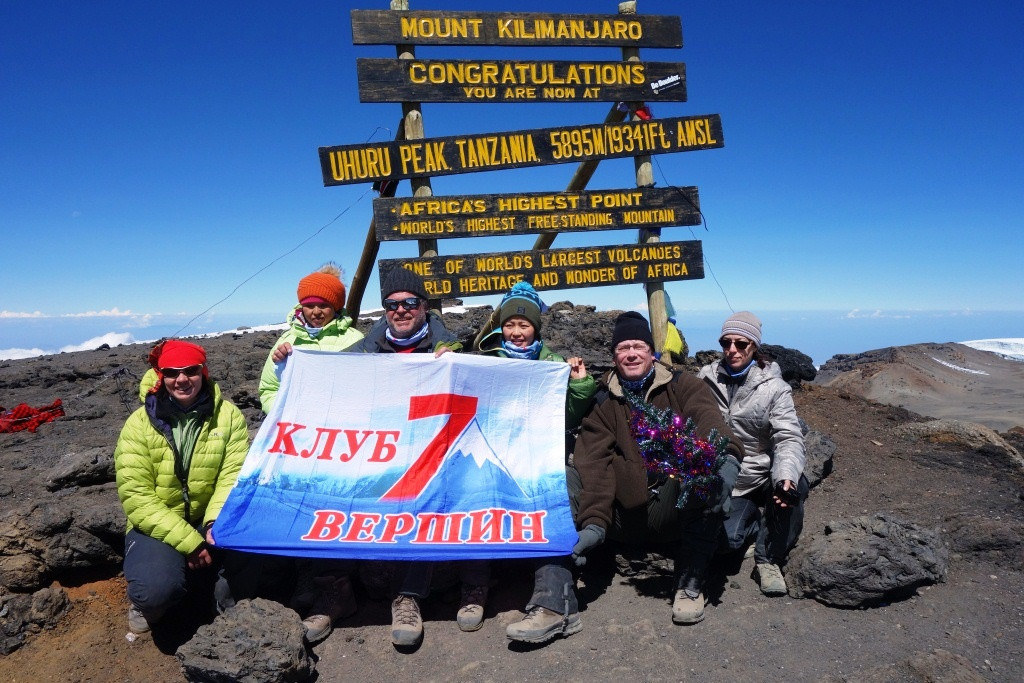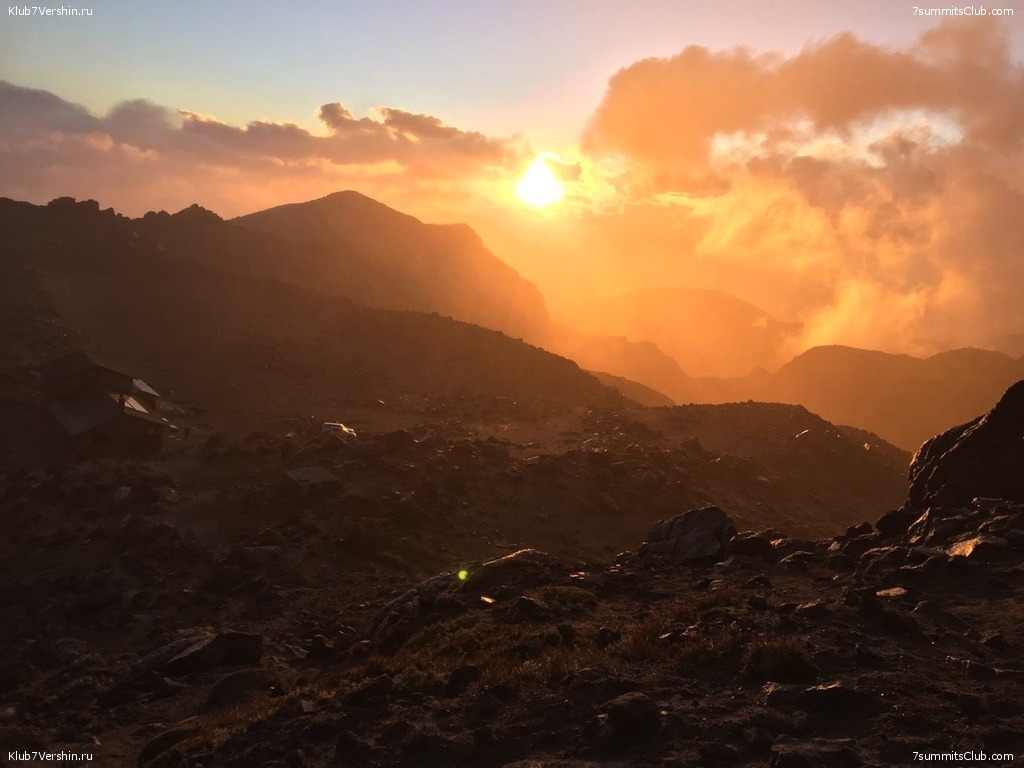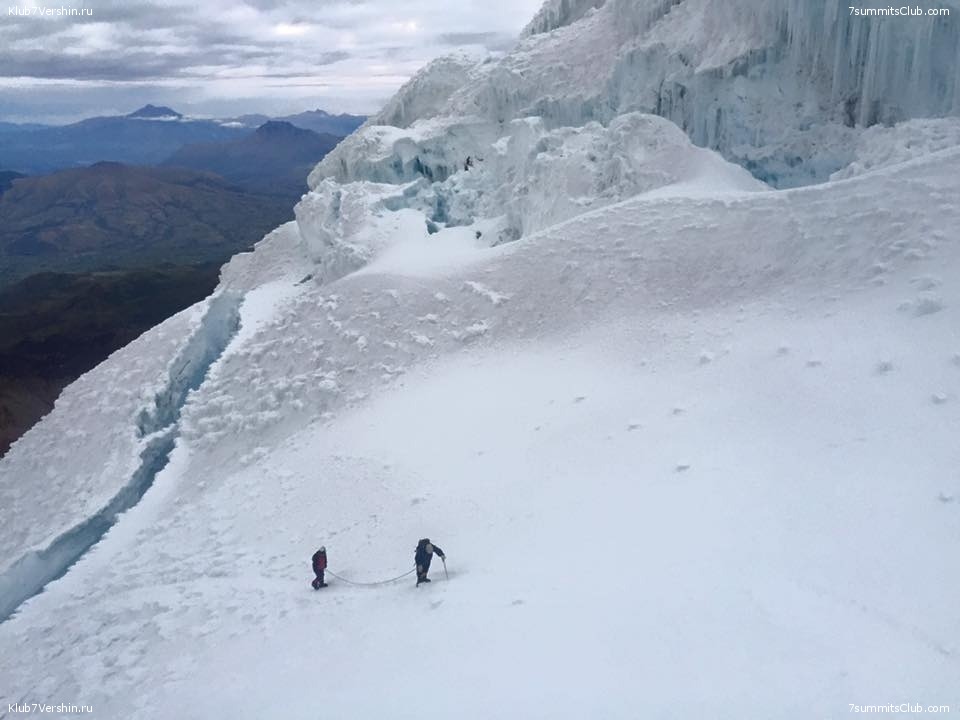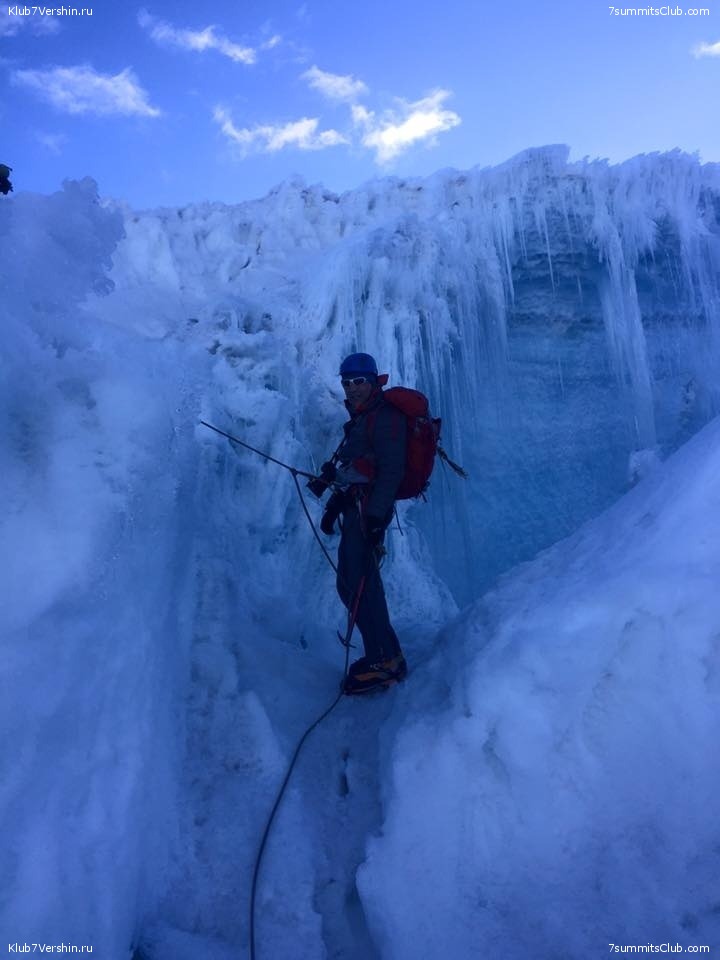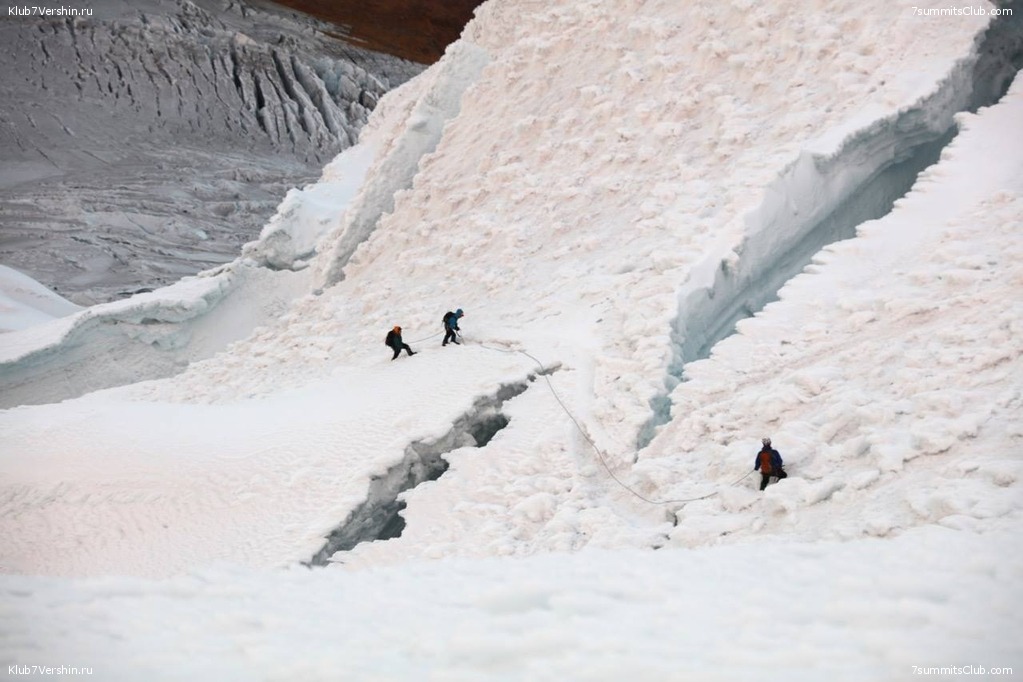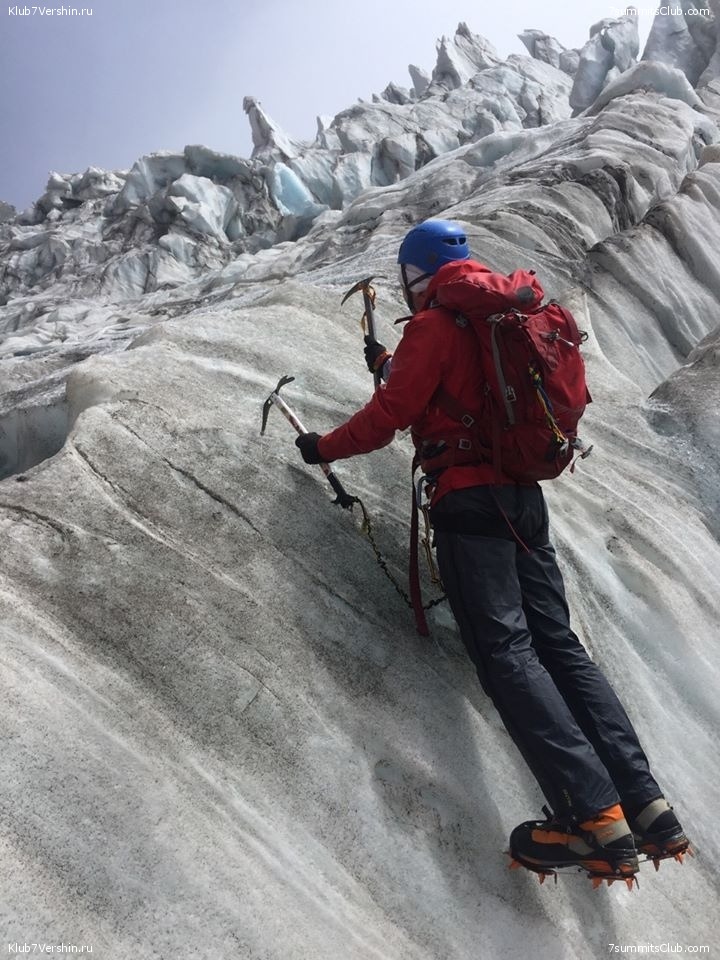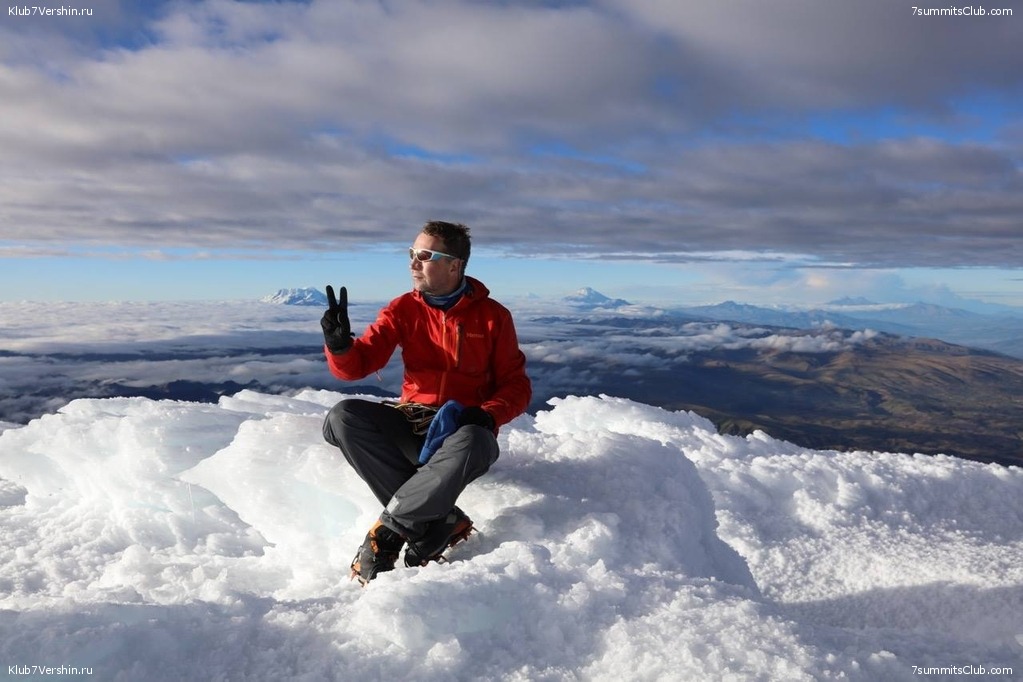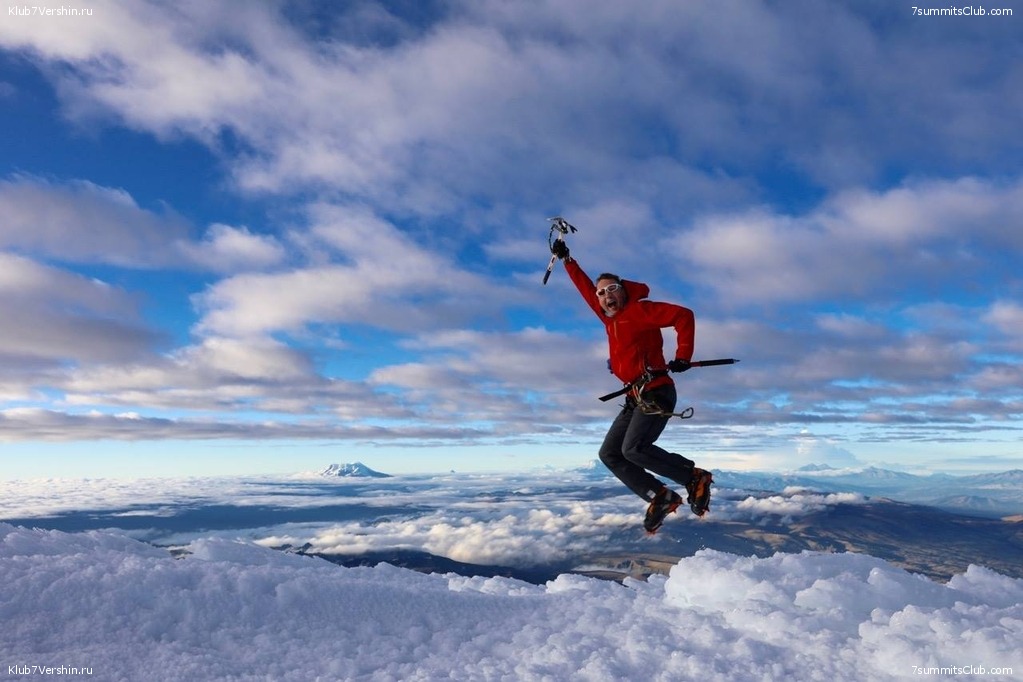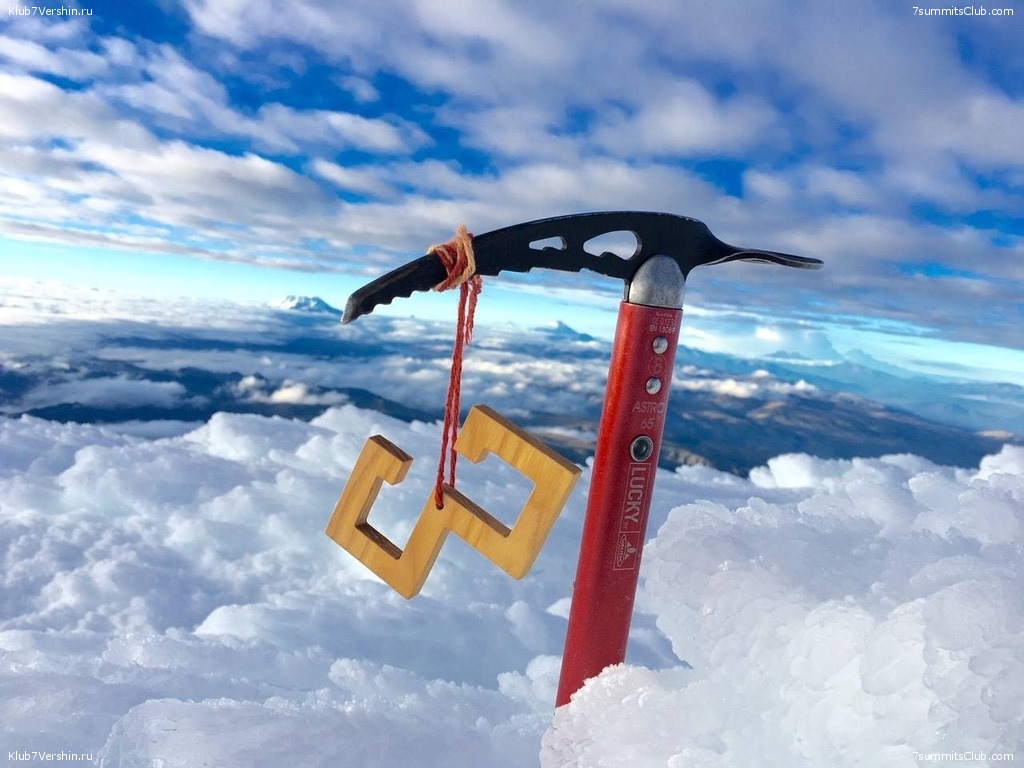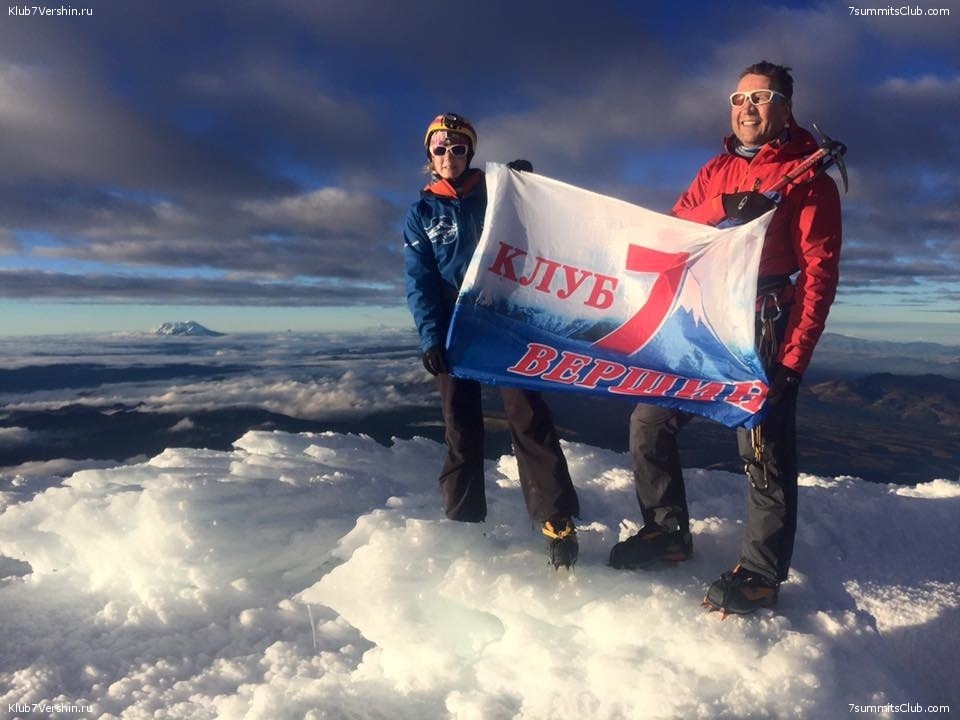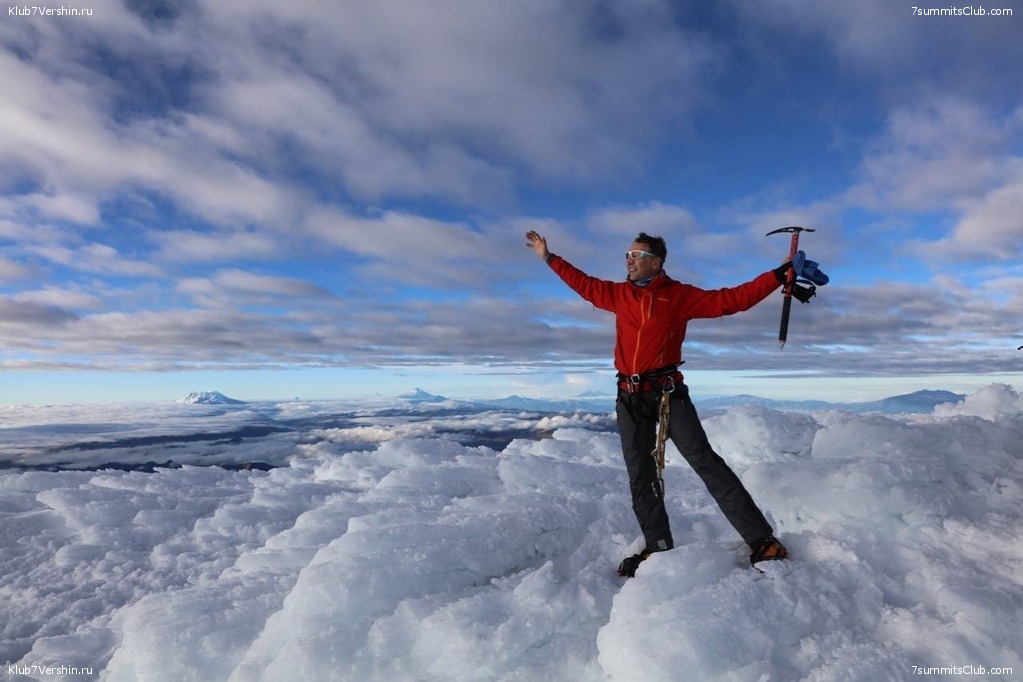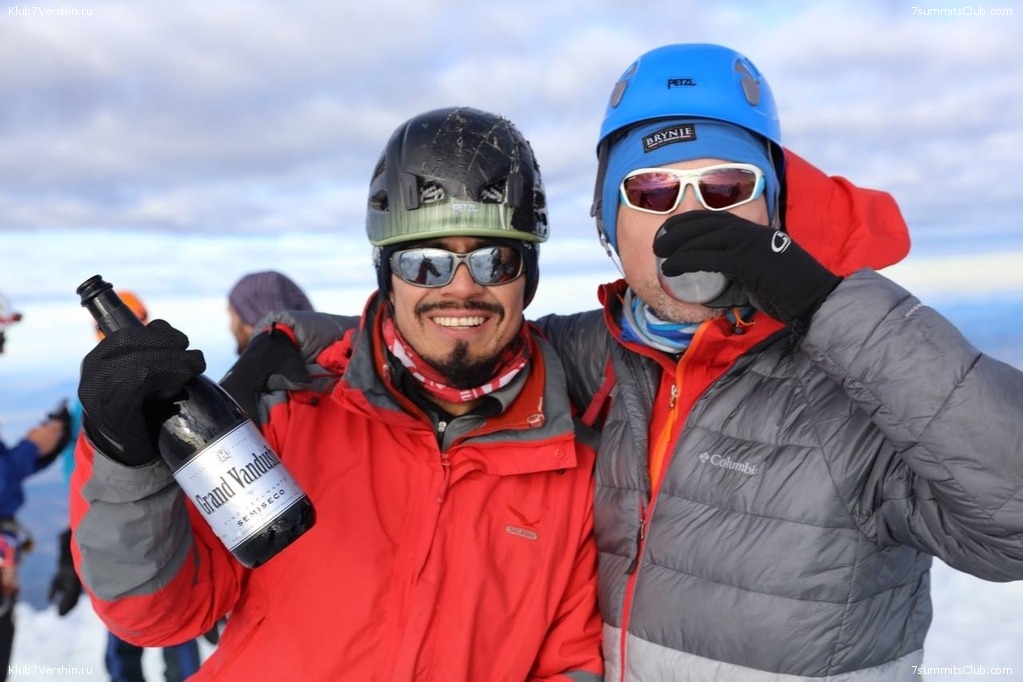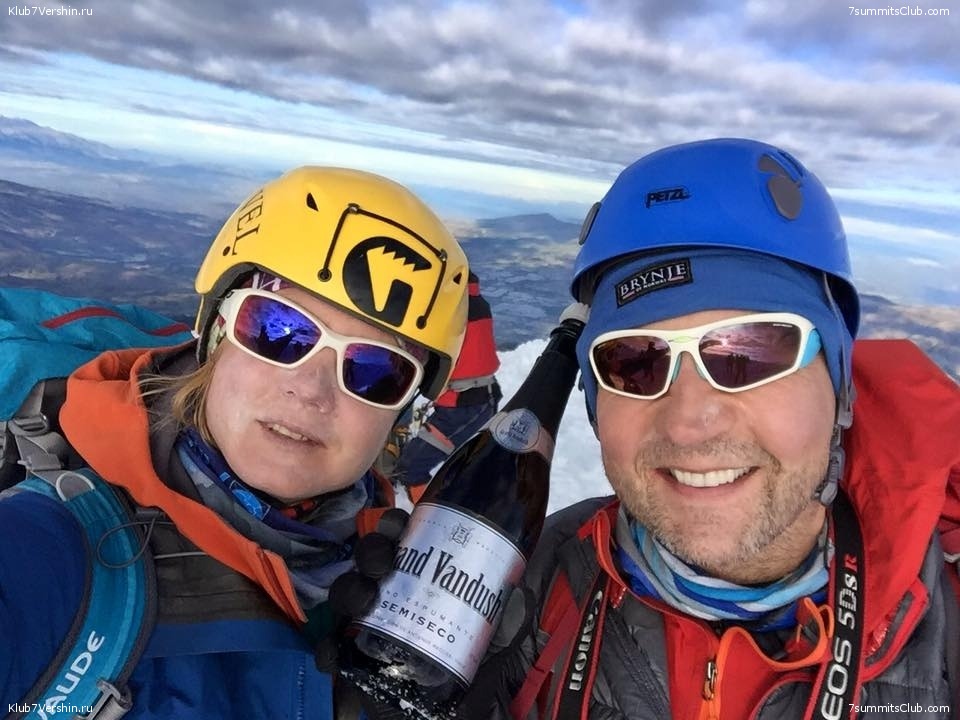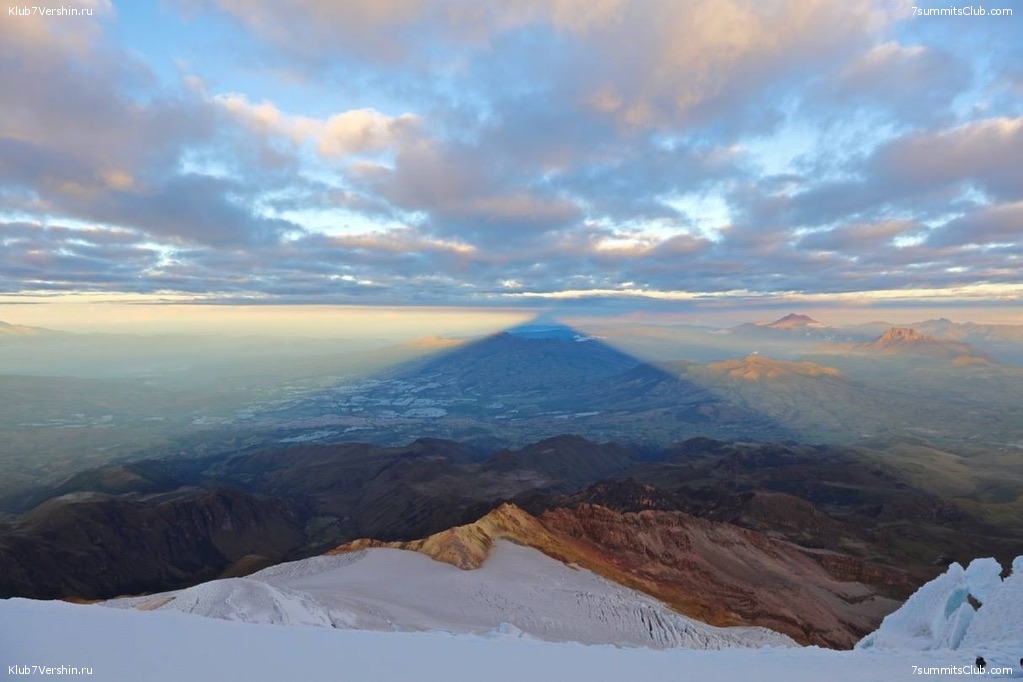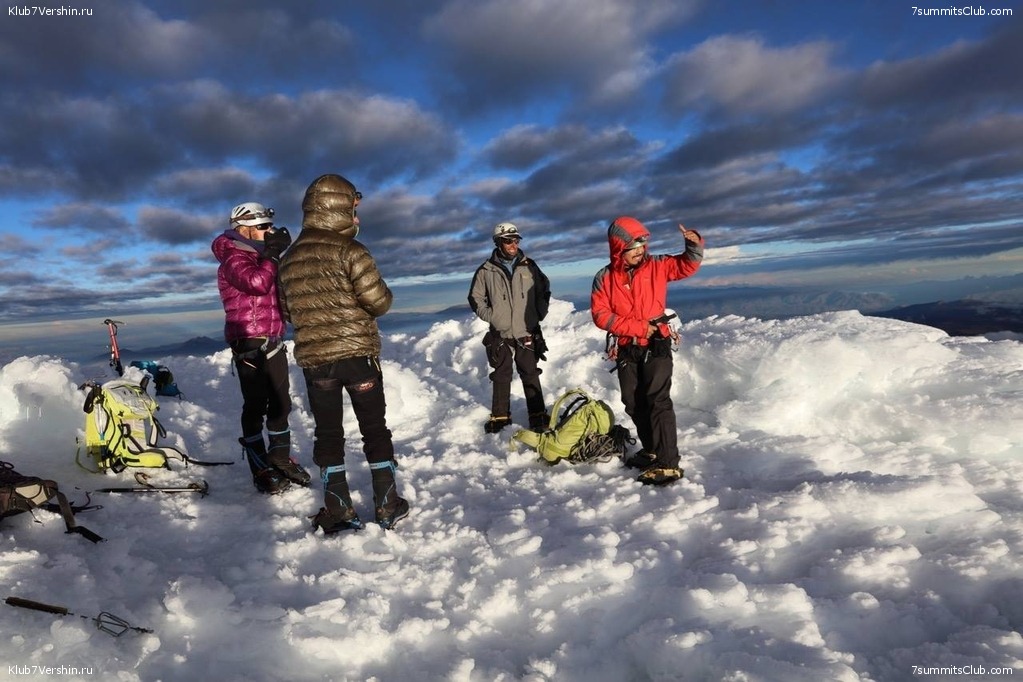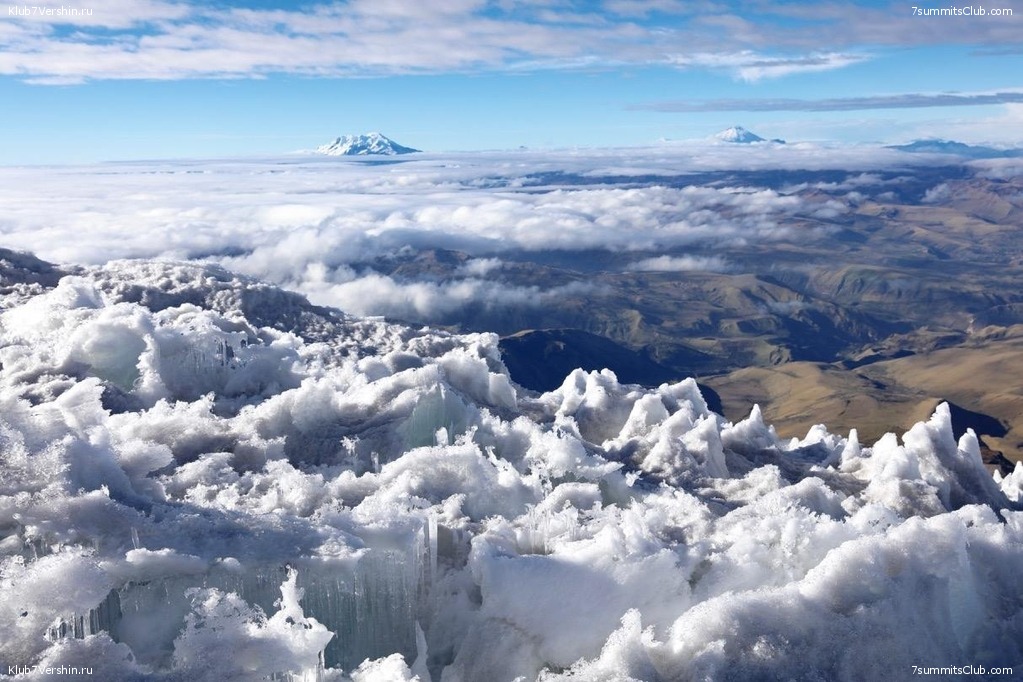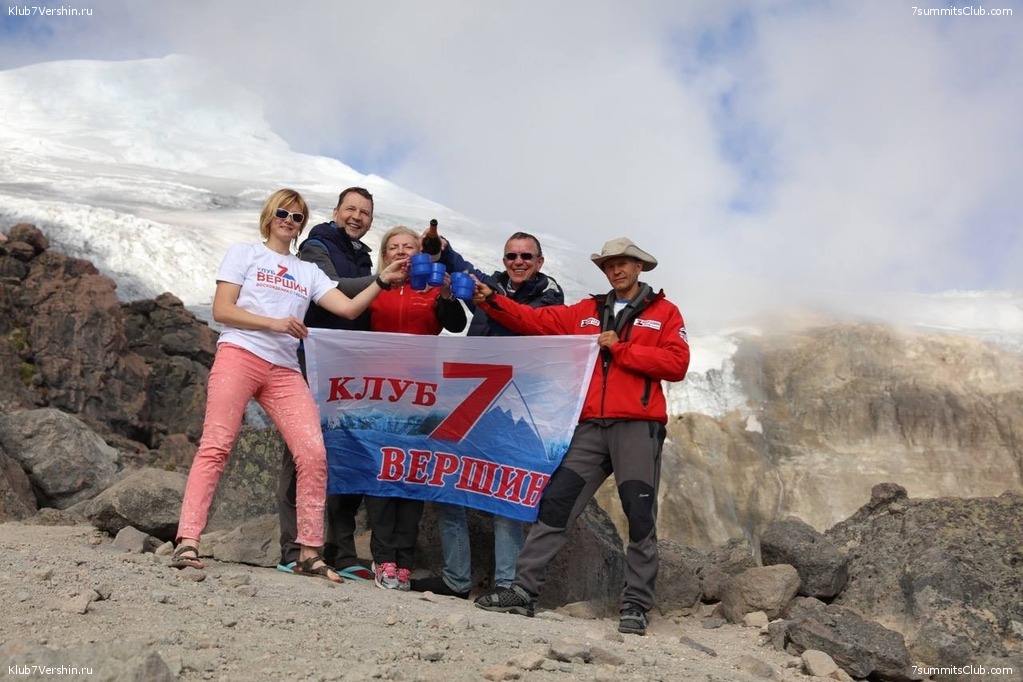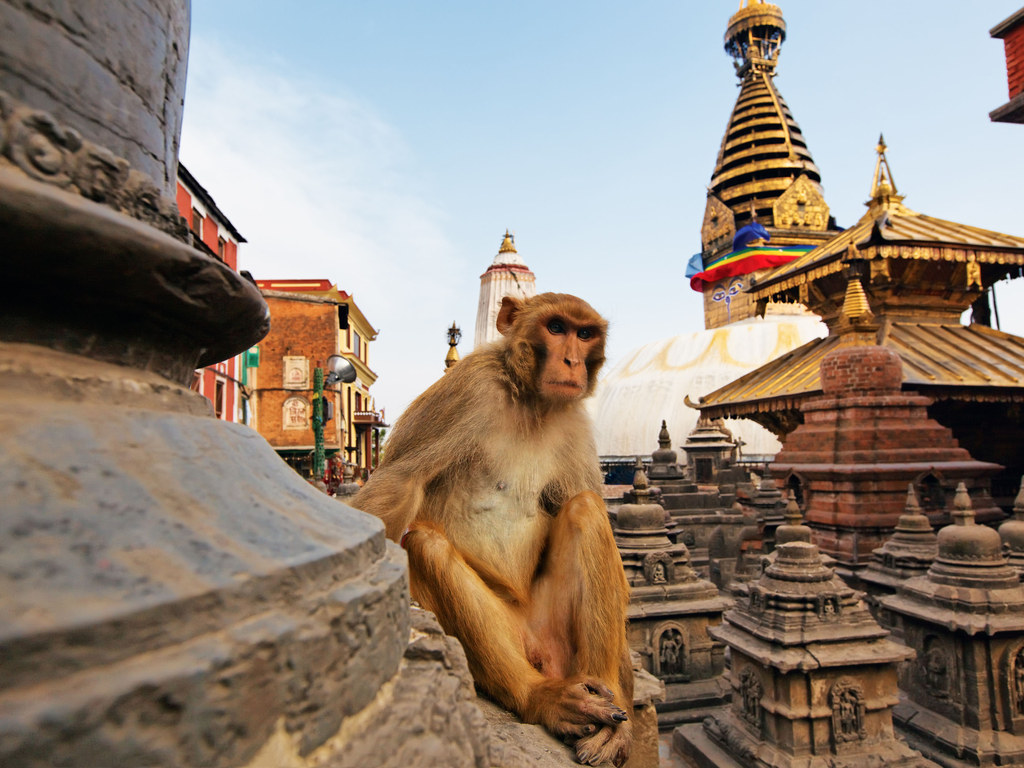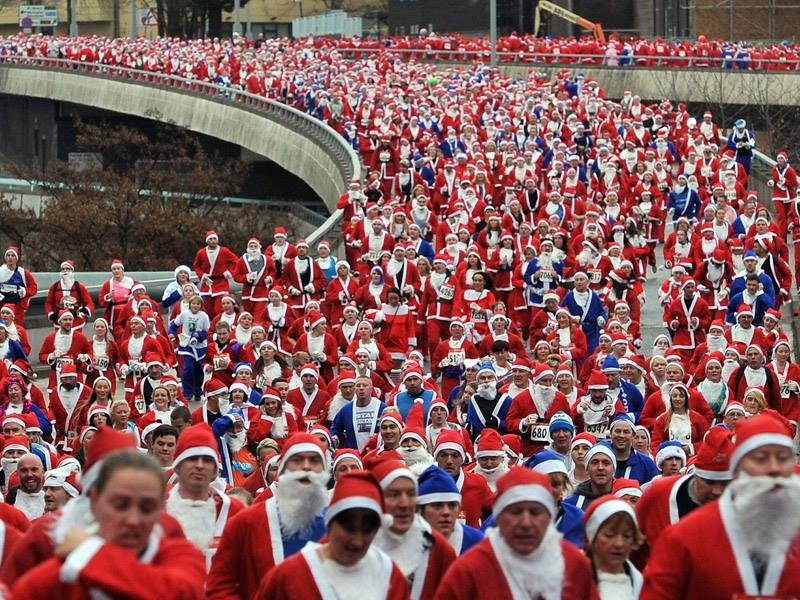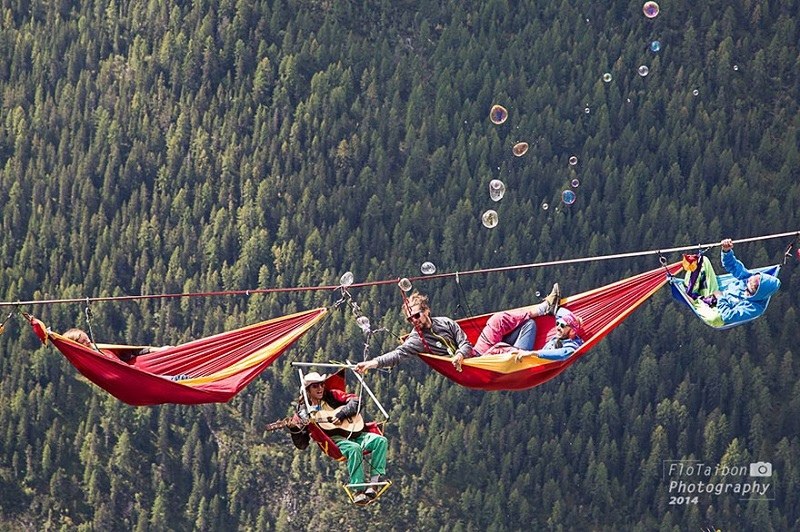All news - Page 249
Expedition on Aconcagua: this time without the summit. PHOTO
Aconcagua.
Vladimir Kotlyar: Unfortunately, we have not reached the top of Aconcagua. Sergey was very froze and we decided to go down ...
Vladimir Kotlyar: Unfortunately, we have not reached the top of Aconcagua. Sergey was very froze and we decided to go down ...
SUMMIT! Congratulations to our friends on the successful ascent of Kilimanjaro! PHOTOS
Kilimanjaro.
News by Yuri Gurgov from Tanzania: a team consisting of four friends successfully climbed the highest peak in Africa, Mount Kilimanjaro. At the top there were: YURI Gurgov, Gleb GOGOLENKO, Igor Koval and Mikhail Komarov. The group climbed ...
News by Yuri Gurgov from Tanzania: a team consisting of four friends successfully climbed the highest peak in Africa, Mount Kilimanjaro. At the top there were: YURI Gurgov, Gleb GOGOLENKO, Igor Koval and Mikhail Komarov. The group climbed by the route Lemosho.
Congratulations to all guys with the summit! We wish to continue the route to the all Seven!
Photo gallery of the second group of 7 Summits Club on the Vinson Massif
Vinson.
January 5, 2016 the second in season team of 7 Summits Club under the leadership of Alexander Abramov climbed to the highest point of Antarctica.Alexander Abramov reported from the summit of Vinson Massif: "Our whole team has reached the ...
January 5, 2016 the second in season team of 7 Summits Club under the leadership of Alexander Abramov climbed to the highest point of Antarctica.
Alexander Abramov reported from the summit of Vinson Massif: "Our whole team has reached the top - Mikhail, Roman, Janusz, Kirill and, of course, I, Alexander. Kirill then immediately “stripped” to celebrate it... It's nothing, because the weather is perfect. We walked all the time in the windless, it was hot. Can you imagine such Antarctica "!
Photo gallery of the first group of 7 Summits Club on the top of the Vinson Massif
Vinson.
December 27, 2015 a team of 7 Summits Club led by Alexander Abramov climbed the highest point of Antarctica. Hello! This is Alex Abramov. I run my report from the summit of the Massif Vinson. We are the first and only team, which today ...
December 27, 2015 a team of 7 Summits Club led by Alexander Abramov climbed the highest point of Antarctica.
Hello! This is Alex Abramov. I run my report from the summit of the Massif Vinson. We are the first and only team, which today climbed to the highest point. The weather is beautiful, and it is almost no wind! I did not even put a down jacket ... there are lovely views around, however, some clouds, but no wind .. We took a chance, went out in bad weather, and guessed. At the top are staying now: Alexey, Dmitry, Vasily, and our American friends ANI guides Scott, Næss and Andy. And, of course, your humble servant, Alexander Abramov.
New Year on Kilimanjaro. Some results
Kilimanjaro.
We want to congratulate you with New Year! Let it will bring good luck and will open new horizons! And also we would like to draw some conclusions on the completion of the New Year period on Kilimanjaro Namely, we want to note that last ...
We want to congratulate you with New Year! Let it will bring good luck and will open new horizons! And also we would like to draw some conclusions on the completion of the New Year period on Kilimanjaro
Namely, we want to note that last month (mid Dec 2015 to mid January 2016) 9 groups with a total of 39 people climbed on Kilimanjaro with the "7 Summits Club".
Group climbed from different sides of the volcano, by the route - Marangu, Machame, Lemosho with local Tanzanian and Russian guides.
For someone Kilimanjaro was the first summit, for others it was the next peak after Everest. The youngest participant was 14 years old, the most experienced - 70. They also reached the top of Africa.
32 persons of 39 reached the highest point in Africa (Uhuru peak 5895 m), it is about 84% of successful ascents.
Photos by Ramil Biktashev, Kilimanjaro LEMOSHO 26 Dec - 3 Jan 2016. New year at the top
Group of Alexander Abramov arrived at the Union Glacier and waits for departure to Punta Arenas
Vinson.
Hello! This is Alexander Abramov from the Union Glacier. We just came from Vinson base camp. Some days here there was a very strong wind, bad weather. However, we were landed at Union Glacier ... Soon enough, that is, at about 20 hours, ...
Hello! This is Alexander Abramov from the Union Glacier. We just came from Vinson base camp. Some days here there was a very strong wind, bad weather. However, we were landed at Union Glacier ... Soon enough, that is, at about 20 hours, Ilyushin should theoretically arrive. Weather is improving, wind calmed down ...
I think, to a meeting in Punta Arenas tomorrow. Bye!
Vladimir Kotlyar from the Plaza de Mulas Camp: our group is acclimatizing and will be waiting for the weather. PHOTOS
Aconcagua.
Hello! Here Vladimir Kotlyar a guide of the 7 Summits Club from Plaza de Mulas. Today we had an active rest day. We walked on a glacier, had a walk to the old, but the broken shelter. In general, we are quietly acclimatizing. Now we have ...
Hello! Here Vladimir Kotlyar a guide of the 7 Summits Club from Plaza de Mulas. Today we had an active rest day. We walked on a glacier, had a walk to the old, but the broken shelter. In general, we are quietly acclimatizing. Now we have passed the "Medical check" - in the morning. A couple of people asked to visit second time. But we hope we will catch up by acclimatization. And basically, we feel good, ready for the climb. The only thing - that the bad weather. So we will be waiting, looking out a weather window.
Best regards, from our team!
Message of Olga Rumyantsev from Papua New Guinea: the group successfully reached the summit of Giluwe and came down ..
Giluwe.
Post illegible, in the finale, you can make out the following: We waded through swamps, across the marshes. Finally, we got the highest volcano in Australia and Oceania - Giluwe ... Now the team is down in the hotel: washed, resting ...
Post illegible, in the finale, you can make out the following:
We waded through swamps, across the marshes. Finally, we got the highest volcano in Australia and Oceania - Giluwe ... Now the team is down in the hotel: washed, resting ... the next two days we will get acquainted with the local culture.
Ludmila Korobeshko started working with the second group in Ecuador
Ludmila Korobeshko: Hello! Yesterday, on January 6, our first expedition to Ecuador ended and immediately began the second: 4 participants arrived as a new group. Today we have acclimatization outing up to the height of 4000 m, on the ...
Ludmila Korobeshko: Hello! Yesterday, on January 6, our first expedition to Ecuador ended and immediately began the second: 4 participants arrived as a new group.
Today we have acclimatization outing up to the height of 4000 m, on the slopes of Pichincha. Then - tour of the historic center of Quito, visiting two equatorial - right and wrong.
Tomorrow, early in the morning we leave to the first our climb – on Pasachoa.
Another member of the expedition still can not fly out of Antarctica due to the weather. But we wait for him and hope.
Group of Vladimir Kotlyar acclimatizes under the South Face of Aconcagua
Aconcagua.
Buenas tardes, amigos! It is Vladimir Kotlyar, an expedition on Aconcagua. We are, united in our troika, are almost at the foot of the South Face of Aconcagua. However, nothing can be seen. The weather is bad. Everything is covered with ...
Buenas tardes, amigos! It is Vladimir Kotlyar, an expedition on Aconcagua. We are, united in our troika, are almost at the foot of the South Face of Aconcagua. However, nothing can be seen. The weather is bad. Everything is covered with clouds, snow. Right as Russian winter, or, well, a Canadian one. All we are OK, wonderful. We have come here with ease. And now, after a light lunch at this height, we are going to go down there to meet the second part of our group. All the best to all, Adios! Wish us luck, the weather!
SUMMIT! The team of Alexander Abramov sends greetings from the highest point of Antarctica!
Vinson.
Hello! This is Alex Abramov – from the top of Vinson Massif! Whole our team has climbed to the top: Mikhail, Roman, Janusz, Kirill and I, Alexander. Kirill undressed then just to celebrate ... It's nothing, because the weather is ...
Hello! This is Alex Abramov – from the top of Vinson Massif! Whole our team has climbed to the top: Mikhail, Roman, Janusz, Kirill and I, Alexander. Kirill undressed then just to celebrate ... It's nothing, because the weather is perfect. We walked all the time in the windless, it was hot. Can you imagine such we are in Antarctica! Boys, too, are preparing for undressing. If we do not freeze, then immediately will flee to the High camp. Congratulate us: anything we wanted, we have achieved. We now have a long, a very long way home. Best regards!!!
Listen to an audio message:
Expedition on Aconcagua: our guide Vladimir Kotlyar with the group climbed to the camp Confluencia
Aconcagua.
Hi everybody! It says Vladimir Kotlyar, a guide of an expedition on Aconcagua. We are now in the first camp, where we'll stay 2 days for acclimatization. Plaza Confluencia – on called this place. Now we sit, eat, gather strength. We ...
Hi everybody! It says Vladimir Kotlyar, a guide of an expedition on Aconcagua. We are now in the first camp, where we'll stay 2 days for acclimatization. Plaza Confluencia – on called this place. Now we sit, eat, gather strength. We went up not at 3 hours according a standard schedule, but less than 2 hours. While we were not in a hurry, we go slowly watching birds, surrounding landscape. In principle, it can not but rejoice. Hence, more time to rest .... (laughs) ... We all are well. We send greetings to our homeland: Canada, Voronezh, and in my lovely Caucasus, in Elbrus! To all my friends! By!
Alexander Grebenyuk and competitors of ice climbing contest thank the 7 Summits Club. MANY PHOTOS
Ice climbing competitions, called "Golden Capricorn" were in the region of Elbrus, on a frozen waterfall near Glade Narzan. The organizers: 7 Summits Club and the club "Maximum" from Pyatigorsk. Sportsmen from different cities took to the ...
Ice climbing competitions, called "Golden Capricorn" were in the region of Elbrus, on a frozen waterfall near Glade Narzan. The organizers: 7 Summits Club and the club "Maximum" from Pyatigorsk. Sportsmen from different cities took to the start: Moscow, Pyatigorsk, Stavropol, Nalchik, Kazan, Karachaevsk, Krasnodar, Rostov. Winners: Sheykina Karina (Stavropol), Anna K. (Kazan), Katalevsky Marina (Stavropol), Rinat Aliyev (Krasnodar), Kurzhanov Mohamed (Nalchik), Krutikov Valentin (Maximum Club, Pyatigorsk) ...
The competition was held for the 7th time and dedicated to all our friends born under the sign Kozegorog (Capricorn). The initiator of the competition - the team captain, president of the 7 Summits Club Alexander Abramov, he invented it 15 years ago.
Alexander Grebenyuk, organizer and chief judge of the competition:
"Well, thanks again to the 7 Summits Club for the organization and promotion of this type of sport! Long live the "7 Summits Club" and the mountains! Many Thanks!"
Ludmila Korobeshko about an ascent on Chimborazo, the goal of the expedition committed
Ludmila Korobeshko: So we climbed on the top of the point most distant from the center of the Earth - on Chimborazo. Impressions mixed – we are down only three hours ago. It is a long route: 1500 m drop, the passage of the hard ice. ...
Ludmila Korobeshko: So we climbed on the top of the point most distant from the center of the Earth - on Chimborazo. Impressions mixed – we are down only three hours ago. It is a long route: 1500 m drop, the passage of the hard ice. But vicuna pleased ...
Expedition of the 7 Summits Club on Mount Giluwe started by long flights
Giluwe.
Australia's highest volcano, located on the island of New Guinea, in the territory of Papua New Guinea - is the object of a new expedition 7 Summits Club. Our guide Olga Rumyantseva lead a group consisting of proven fighters, experienced ...
Australia's highest volcano, located on the island of New Guinea, in the territory of Papua New Guinea - is the object of a new expedition 7 Summits Club. Our guide Olga Rumyantseva lead a group consisting of proven fighters, experienced travellers. The first stage - a very difficult, because it consists of several flights ...
Alex Abramov from the Low camp of Mount Vinson
Vinson.
Hello! This is Alex Abramov from Antarctica. Today we had a full day of rest. Today we ate three times plus had second lunch. Very well cooked and tasty. And then learn to tie knots, and talked about everything: life, children and all, as ...
Hello! This is Alex Abramov from Antarctica. Today we had a full day of rest. Today we ate three times plus had second lunch. Very well cooked and tasty. And then learn to tie knots, and talked about everything: life, children and all, as men talk in the mountains. Tomorrow we are going to climb. The following information will be tomorrow night. Weather improves, it is clear, the sun is shining, the wind at the top gradually decreases. I think we got a good climb. All Goodbye!
The Group of Alexander Abramov - Vinson-2 has completed the acclimatization and is resting before the summit bid
Vinson.
Hello! This is Alex Abramov from Antarctica. How did you hear, a kerosene stove noises in our tent. Now it is midnight. The sun shines, though, through the clouds. Today we went up to the High camp, to an assault camp. We brought up ...
Hello! This is Alex Abramov from Antarctica. How did you hear, a kerosene stove noises in our tent. Now it is midnight. The sun shines, though, through the clouds. Today we went up to the High camp, to an assault camp. We brought up everything we will need, heavy backpacks: products and all equipment needs for climbing. And besides, it was a good for acclimatization. Now we went down into the Low camp. We ate very good, everyone is happy. Tomorrow we have a day of rest. That means, tomorrow we will sleep until midday, then have breakfast, then we have the whole day for preparing to the assault outing. And the next day we start climbing, again in the High camp and then to the summit ....
Listen to audio message:
New Year’s Kilimanjaro SUMMITS: two groups of 7 Summits Club on the top of Mount Kilimanjaro
Kilimanjaro.
All members of our German-American group successfully reached the summit of Kilimanjaro. They celebrated the New Year on the top. The team leader Marcus wrote us word of thanks: «Cheers from a successful climb of Mt Kilimanjaro! ...
All members of our German-American group successfully reached the summit of Kilimanjaro. They celebrated the New Year on the top. The team leader Marcus wrote us word of thanks:
«Cheers from a successful climb of Mt Kilimanjaro! Thanks for organizing this for us! »
Also, on December 31 the group of our guide Olga Rumyantseva reached the summit climbing by the route Lemosho.
Congratulations all summiters!
SUMMIT! Ludmila Korobeshko: New Year on a volcano Cayambe
Hello! This is Ludmila Korobeshko Ecuador from the expedition to the top of the most distant from the center of the Earth (Chimborazo). December 30, we arrived at the mountain refuge at the base of Cayambe volcano at an altitude of 4600m. ...
Hello! This is Ludmila Korobeshko Ecuador from the expedition to the top of the most distant from the center of the Earth (Chimborazo).
December 30, we arrived at the mountain refuge at the base of Cayambe volcano at an altitude of 4600m. By the way, the cone of this volcano is located precisely on the equator, and this peak is the highest on the equator (5780m). And still on the way to the refuge, we crossed the equator five times, the final - at an altitude of 4200 m. In the evening we went to acclimatize to 4800. The wind was very strong and moist. We returned dripping wet. Nevertheless, the next morning we went to ice climbing training. Again we returned wet. At 16.00 on Ecuador at midnight Moscow time we celebrated New Year's Eve and went to sleep for a few hours before the upcoming summit bid.
At midnight, from 31 to 1th along the Ecuadorian New Year's custom, we burned an effigy. And we started the climb. We were on the top at 6.30 a.m. not all, but in a good mood. The weather was good.
At 9:30 a.m. we were already at the refuge, and an hour later went south to Baños. Now we rest in hacienda near the volcano Kilotoa. Tomorrow is a rest day, and we will visit the lake in the crater of the volcano.
January 3, we're going to Chimborazo, and on the night of January 4 go to the assault.
HAPPY NEW YEAR! Smile and think positive!
In the year of the Fire Monkey, we recommend going to the mountains! Monkeys love to climb, that is born climbers. All – on the rocks! But there are also monkeys, specializing in high-altitude mountaineering - Yeti ... Be as ...
In the year of the Fire Monkey, we recommend going to the mountains! Monkeys love to climb, that is born climbers. All – on the rocks!
But there are also monkeys, specializing in high-altitude mountaineering - Yeti ...
Be as strong as they are, and the same modest!
KEEP CLIMBING!
KEEP TRAVELLING!
KEEP RUNNING!
And KEEP SMILING
AKUNA MATATA
